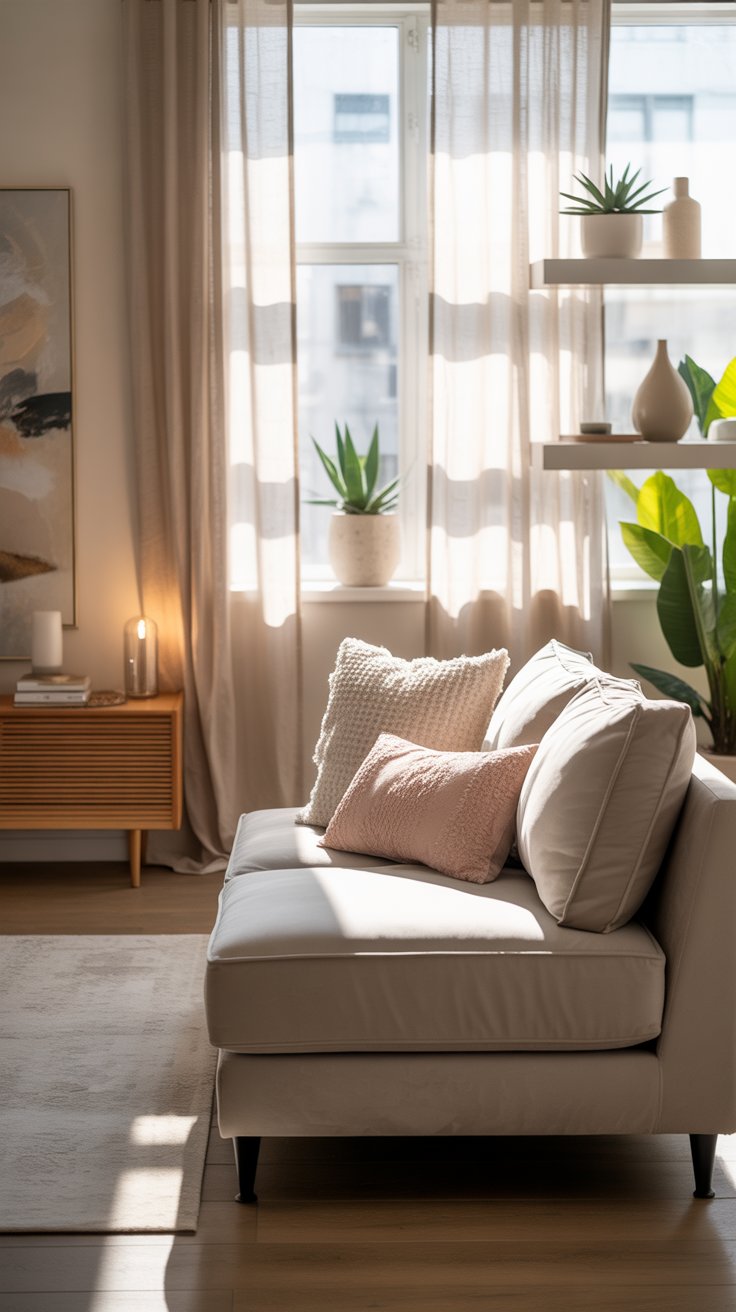
Small Apartment Interior Ideas: Stylish & Space-Saving Inspiration
Living in a compact space doesn’t mean you have to sacrifice comfort or style. With thoughtful design and clever organization, small apartment interior can feel just as inviting and functional as a larger home. Whether you prefer modern minimalism, cozy boho vibes, or practical multi-functional furniture, there are endless ways to transform a small apartment into a stylish haven.
In this guide, we’ll explore space-saving hacks, interior design ideas, and decor tips to maximize your apartment. You’ll also find visual inspiration with image prompts that showcase different looks and layouts.
1. Maximizing Space with Smart Layouts
One of the biggest challenges in small apartment design is making the most of every inch. Strategic layouts are key. Consider furniture placement that opens up the room rather than blocking pathways. Floating furniture arrangements — such as a sofa placed away from the wall with a narrow console behind it — can create the illusion of more depth.
Using lightweight and modular furniture also allows flexibility. Foldable tables, stackable chairs, and nesting stools are perfect for small homes where adaptability matters.
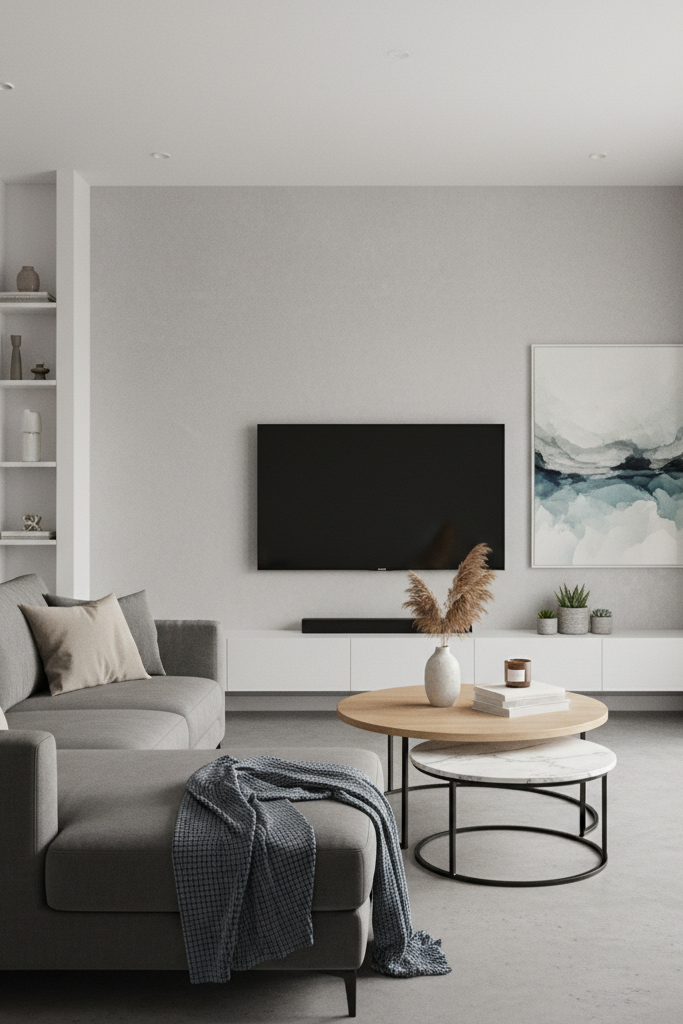
2. The Power of Multifunctional Furniture
When space is limited, multifunctional pieces become lifesavers. A sofa that doubles as a bed, a coffee table with hidden storage, or an ottoman that serves as extra seating — each piece can play multiple roles without taking up extra space.
Convertible furniture not only saves room but also keeps the apartment tidy and organized. This approach is especially useful in studio apartments, where living, dining, and sleeping areas often overlap.
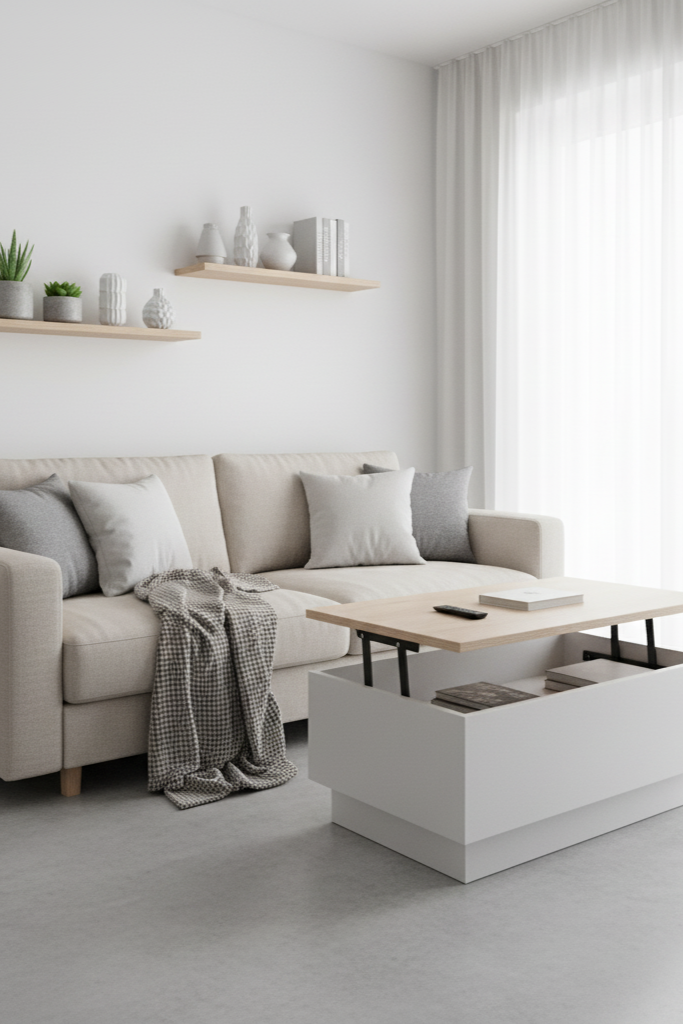
3. Creating Light & Airy Interiors
Lighting plays a crucial role in making small apartments appear larger. Natural light should be maximized with sheer curtains or blinds instead of heavy drapes. Mirrors can also reflect light, instantly making rooms feel more open.
When natural light is limited, layer artificial lighting with ceiling fixtures, floor lamps, and wall sconces to brighten dark corners. A balanced lighting scheme adds both warmth and dimension.
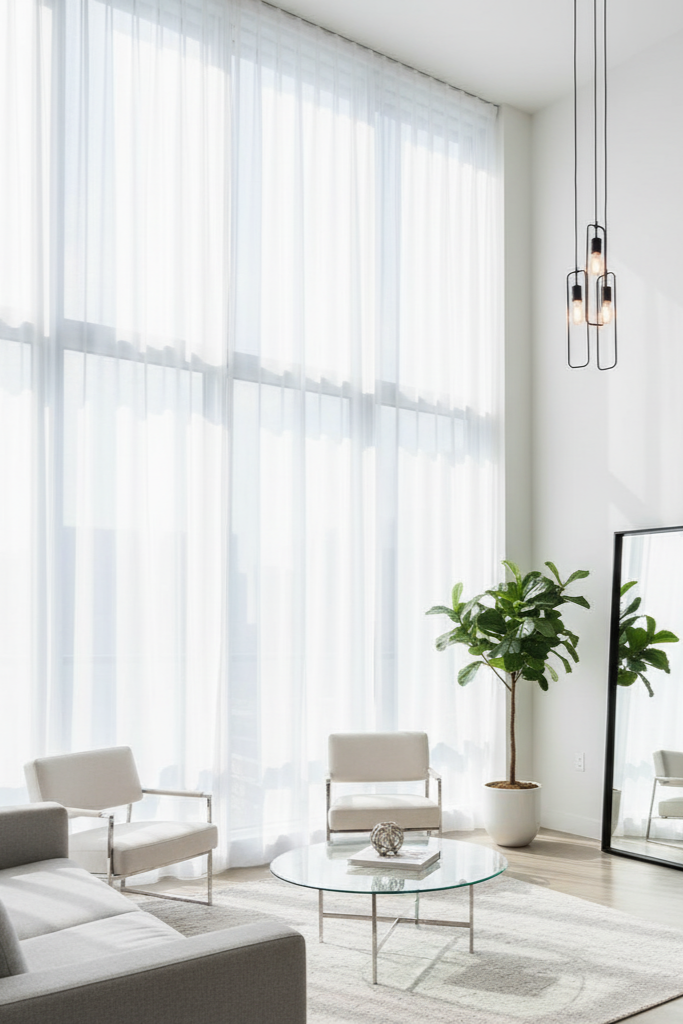
4. Embracing Modern Minimalism
For those who prefer a clean and uncluttered style, modern minimalism works beautifully in small apartments. Neutral tones, streamlined furniture, and limited decor items create an airy atmosphere.
Minimalist interiors often lean on functionality — every piece is intentional, from sleek open shelving to low-profile sofas that don’t overwhelm the space. Scandinavian-inspired decor is a popular choice for this look.
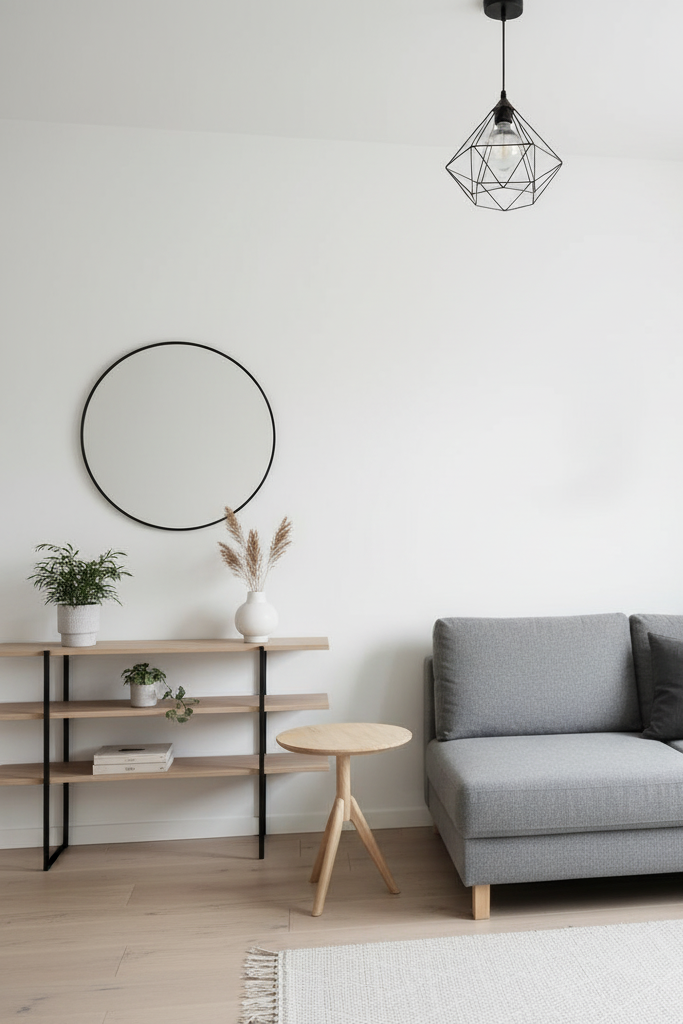
5. Warm & Inviting Design
Not every small apartment has to look stark and minimal. Warm interiors bring comfort through textures, earthy colors, and layered lighting. Adding warm neutrals like terracotta, mustard, and beige can make a space feel instantly cozy.
Boho-inspired details — rattan furniture, woven rugs, and hanging lights — create a welcoming and relaxed vibe.
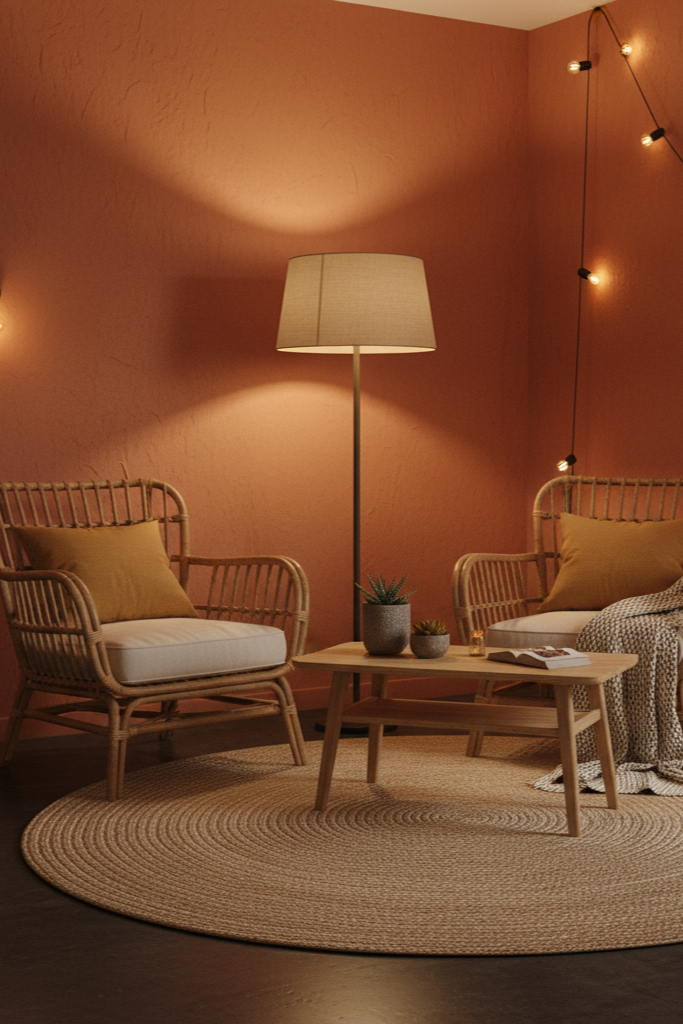
6. Vertical Storage Solutions
Storage is often the biggest struggle in small apartment interiors. Vertical storage is the answer. Wall-mounted shelves, tall cabinets, and ladder-style shelving units allow you to keep essentials without eating into floor space.
Floating shelves above desks, beds, or sofas can hold books, plants, or decor items. This maximizes storage while keeping things visually appealing.
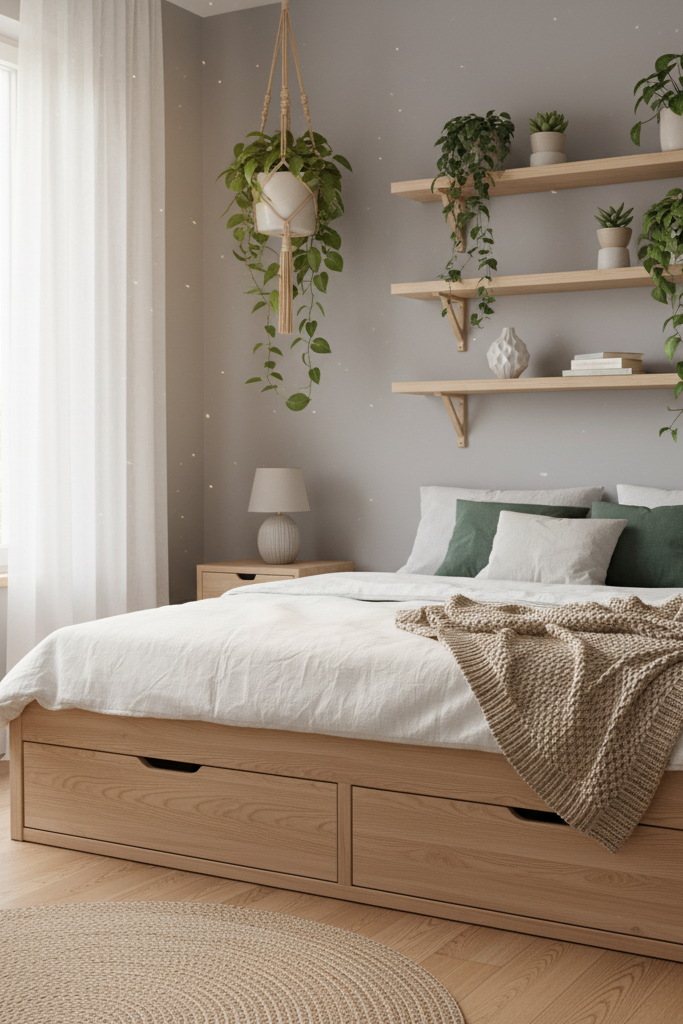
7. Adding Personality with Decor
Just because the apartment is small doesn’t mean it should lack character. Statement wall art, accent rugs, or bold cushions can all make a big impact. Choose a few standout pieces rather than cluttering the room with too many small items.
Plants are another great way to add personality and freshness. Hanging plants or small potted greenery bring life without taking up valuable surface area.
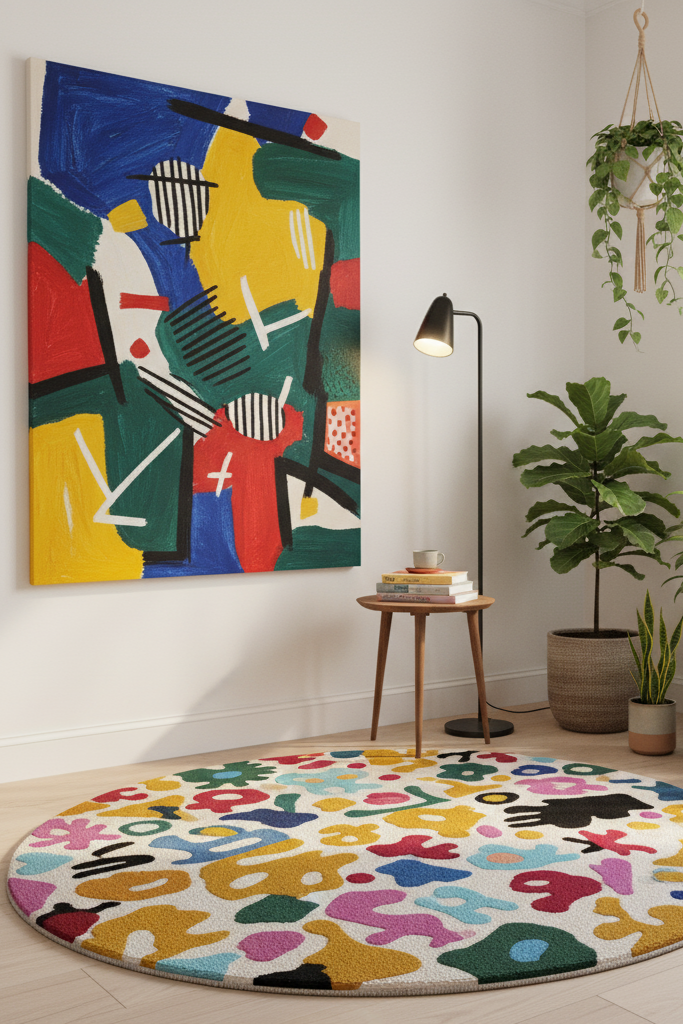
8. Space-Saving Kitchen & Dining Ideas
Kitchens and dining spaces in small apartments can benefit from foldable or extendable furniture. A wall-mounted fold-down dining table or a narrow breakfast bar with stools tucked underneath makes meals convenient without taking up too much room.
Open shelving in the kitchen can also keep things organized while maintaining an airy feel.
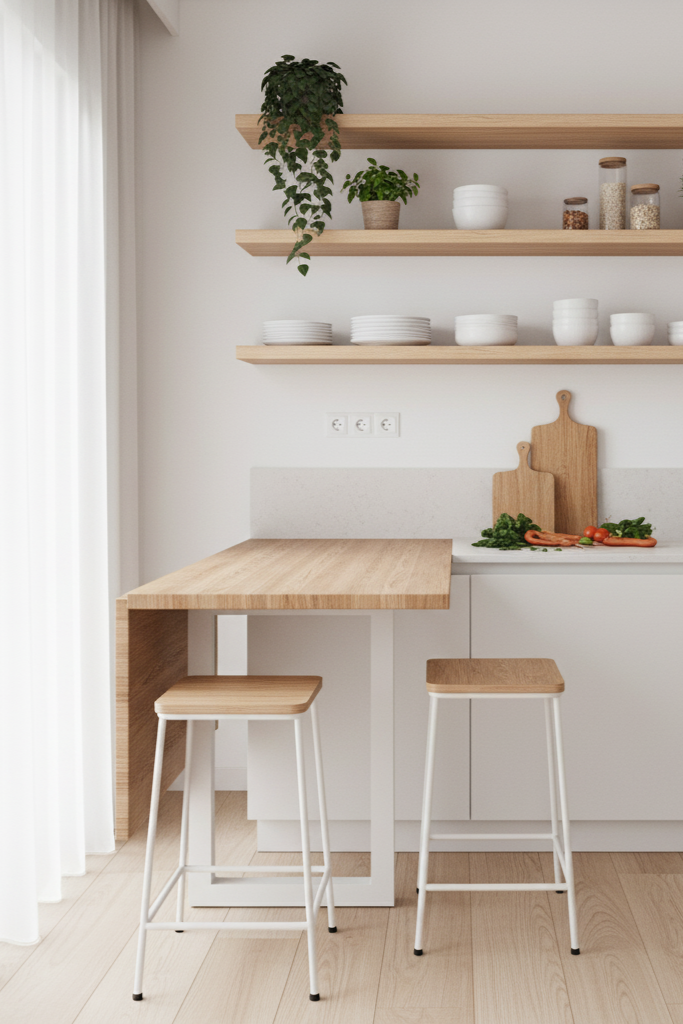
9. Creating a Relaxing Bedroom
Bedrooms should be restful, even in small spaces. Storage beds, soft bedding layers, and calming colors can create a peaceful retreat. Use wall-mounted nightstands or sconces instead of bulky furniture to free up floor space.
Mirrors on wardrobes or closet doors further enhance the illusion of spaciousness.
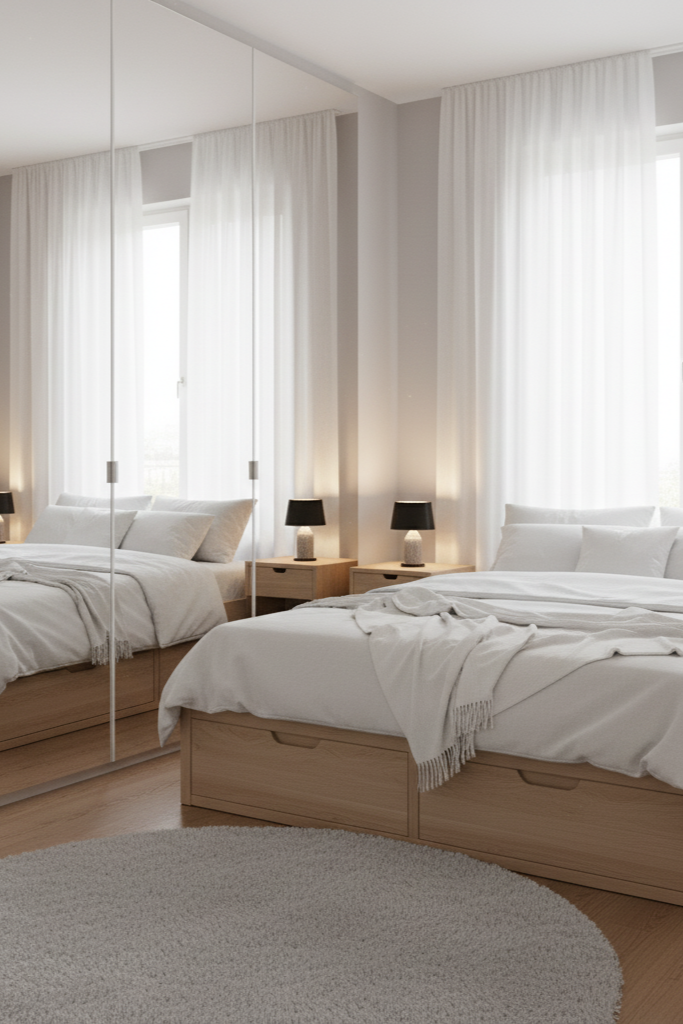
10. Blending Style with Function
The best small apartment interiors blend functionality with aesthetics. Every design choice should serve both a practical and visual purpose. For instance, a modular shelving unit can display decor while storing essentials, and a decorative ladder can hold throws or magazines.
By mixing style with practicality, even the smallest apartments can feel chic and comfortable.
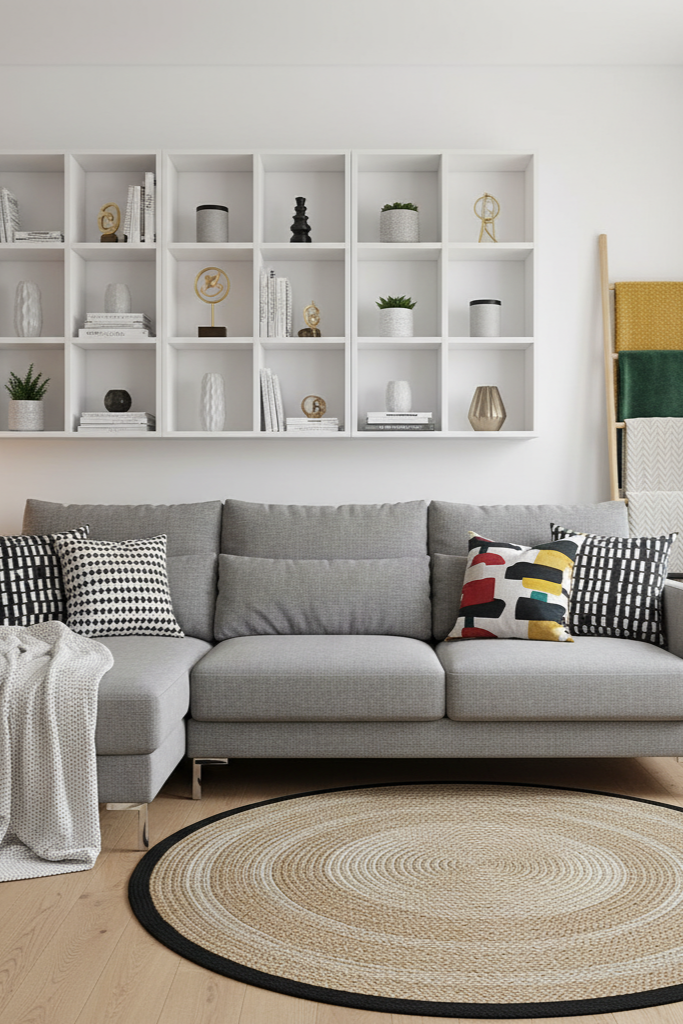
Conclusion
Designing a small apartment interior is all about creativity and efficiency. By focusing on multifunctional furniture, clever storage, warm or minimal aesthetics, and thoughtful layouts, you can make the most of limited square footage.
Whether you lean toward modern minimalism, cozy boho charm, or sleek multifunctional setups, small apartments offer plenty of room for design innovation. With the right approach, your space will feel bigger, brighter, and more stylish than ever.
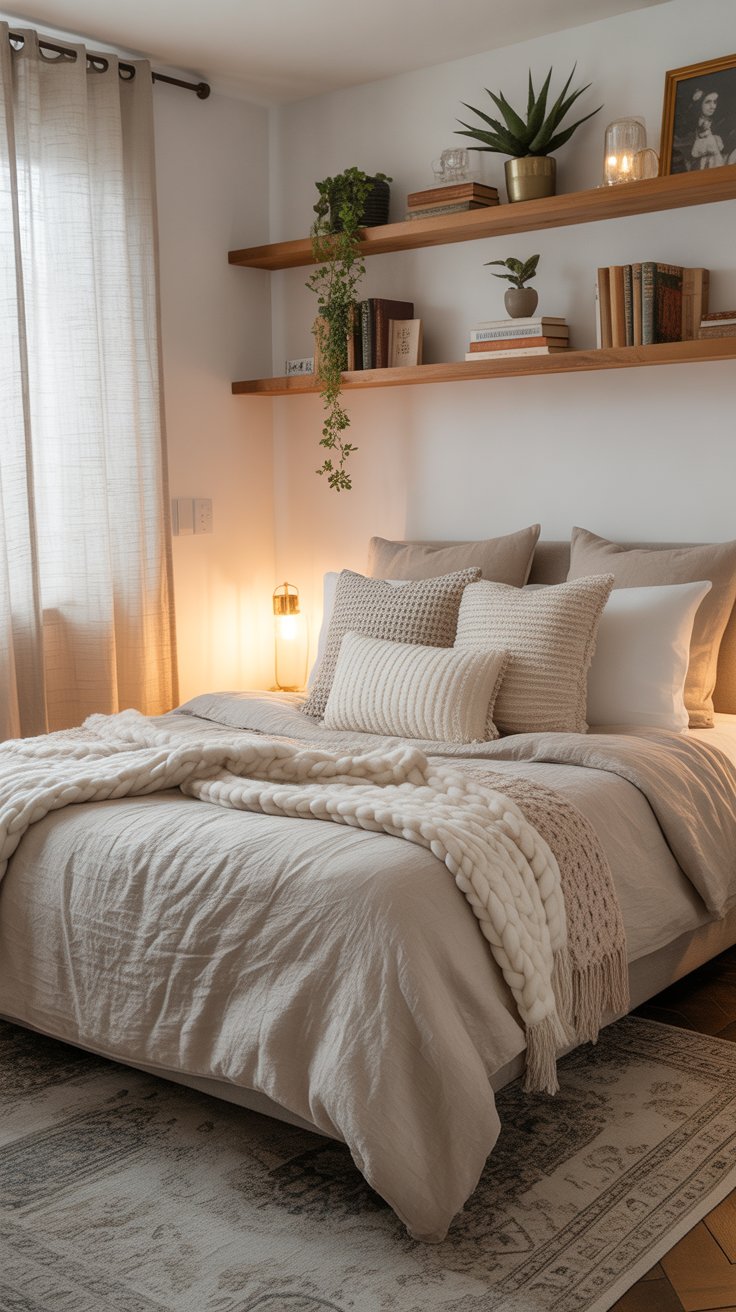
🛏️ Tiny Bedroom Ideas: Smart Design & Decor Hacks for Small Spaces
Living in a small bedroom doesn’t mean you have to sacrifice comfort, style, or functionality. With the right design choices, you can transform a tiny bedroom into a cozy retreat that feels both spacious and stylish. In this guide, we’ll explore tiny bedroom ideas that focus on layouts, storage hacks, decor tips, and design inspiration that work beautifully in limited spaces.
1. Small Bedroom Layout Ideas for Maximum Space
The layout of your bedroom is key when working with limited square footage. Placing the bed against one wall or in a corner allows more open floor space. Opt for floating furniture like shelves and nightstands to free up ground area. Mirrors are also a game-changer, reflecting light and creating the illusion of a larger space.
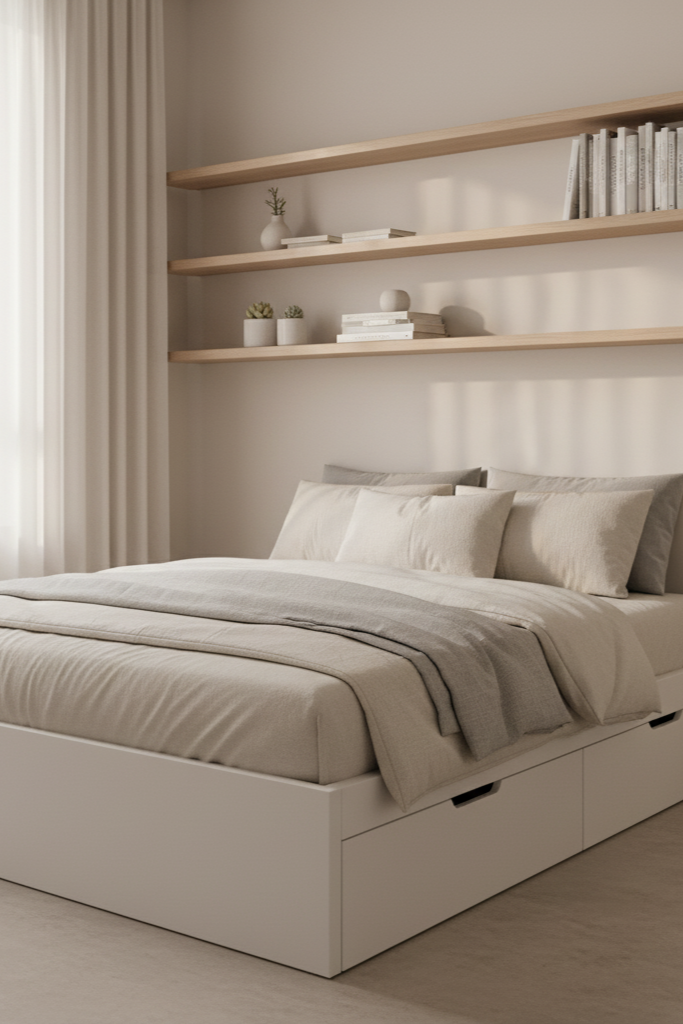
2. Cozy Tiny Bedroom Makeover on a Budget
You don’t need a huge budget to create a welcoming and stylish small bedroom. Start with layered bedding — think throws, textured blankets, and fluffy cushions. Add warm ambient lighting through fairy lights, table lamps, or wall sconces. Incorporate natural textures like wood, rattan, or linen for a cozy yet affordable makeover.
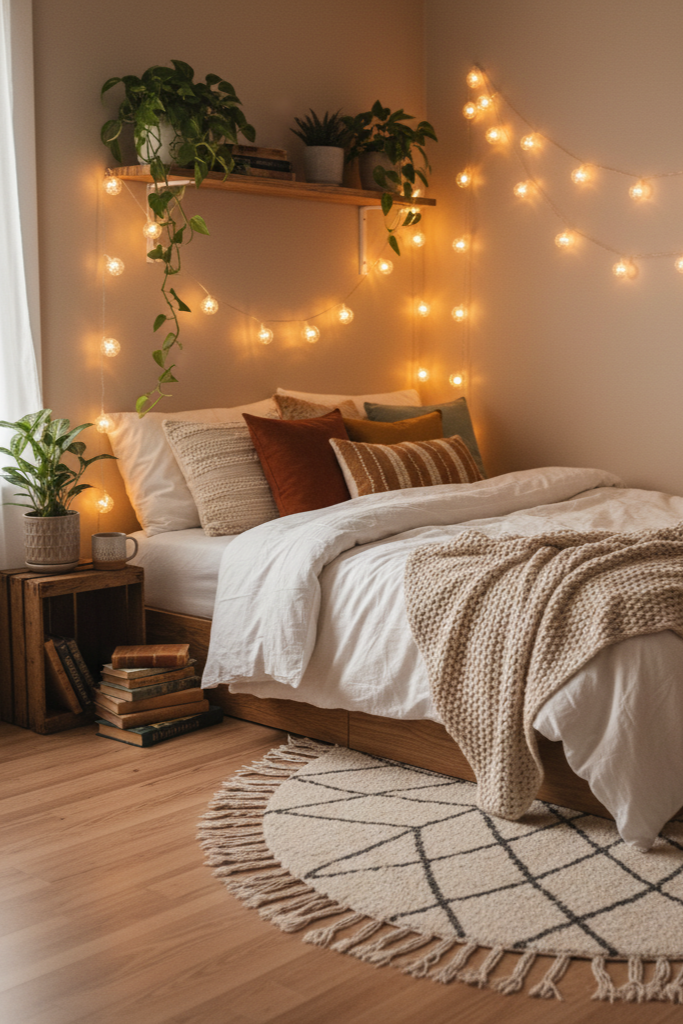
3. Minimalist Tiny Bedroom Design Inspiration
Minimalism works beautifully in small spaces. By reducing clutter and sticking to a neutral palette, you can make your room feel larger and more peaceful. Low-profile furniture, clean lines, and neutral colors help create an airy vibe. Add one or two statement pieces — like a bold wall art or a sculptural lamp — to keep things interesting without overwhelming the room.
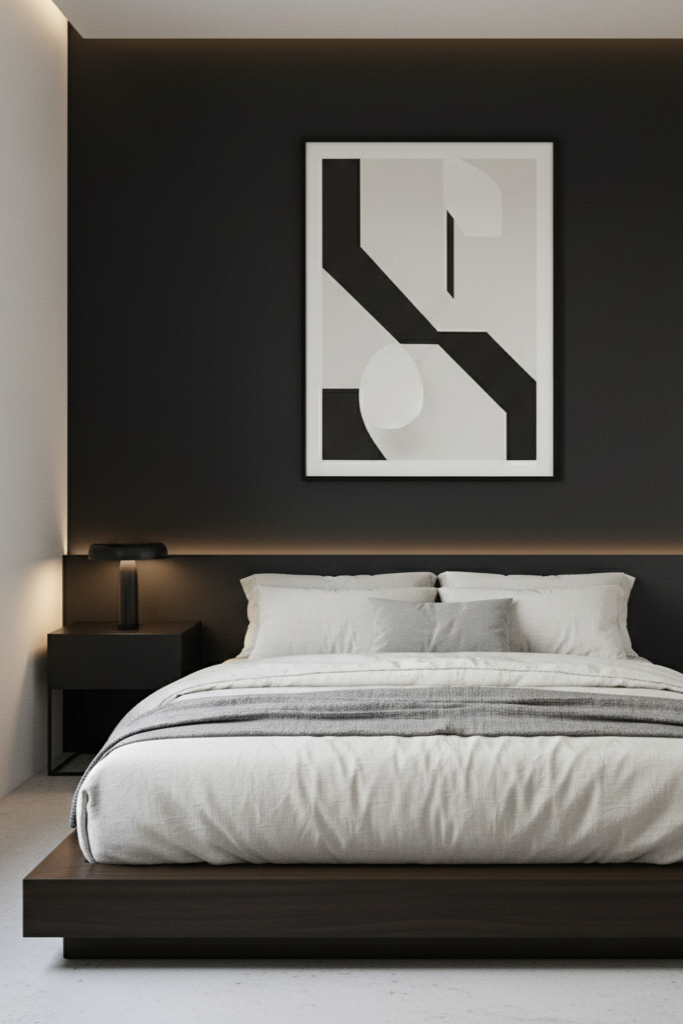
4. Tiny Bedroom Storage Hacks You’ll Love
Storage is one of the biggest challenges in small bedrooms. Use vertical space with floating shelves, pegboards, and hanging organizers. Under-bed storage is also a lifesaver — opt for pull-out drawers or baskets. Multi-functional furniture like storage ottomans, loft beds, and wall-mounted desks are perfect for keeping clutter out of sight.
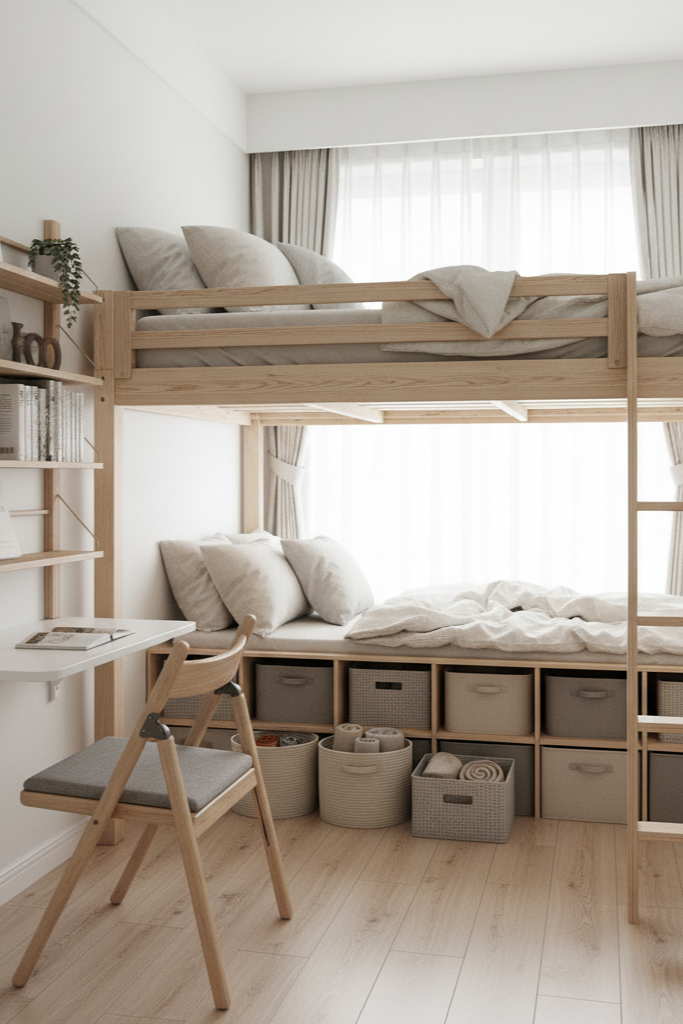
5. Chic Tiny Bedroom Decorating Ideas
Small bedrooms don’t have to feel boring. You can elevate your space with chic touches like metallic accents, bold cushions, or statement lighting. A large mirror not only adds glamour but also makes the space appear larger. Choose a cohesive color palette — blush pinks, golds, or muted tones — to tie the look together.
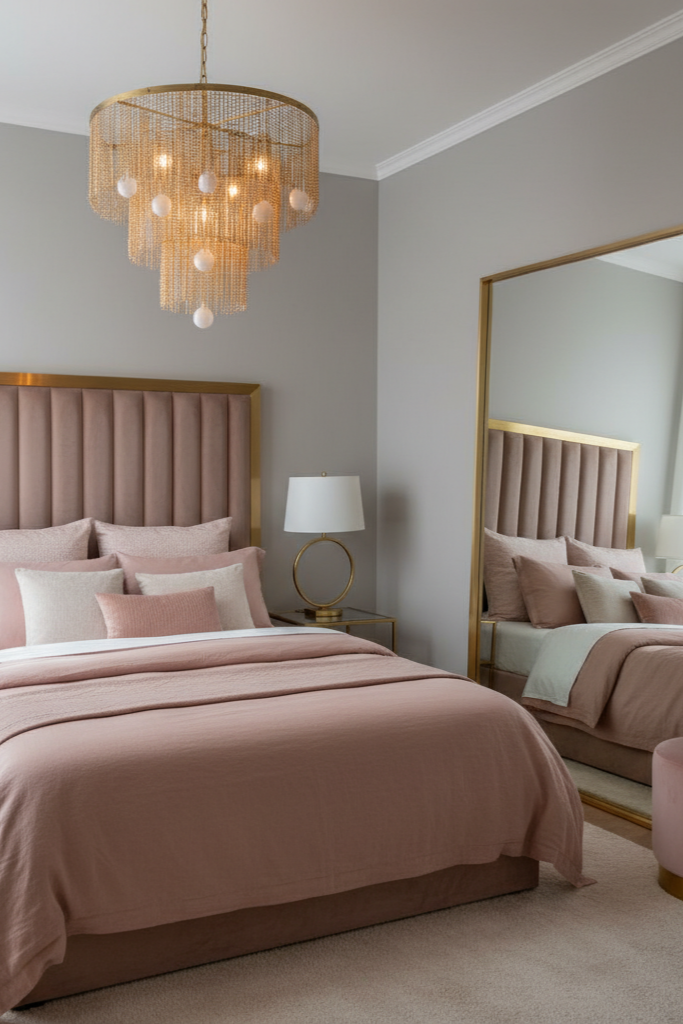
Final Thoughts
Tiny bedrooms may be compact, but they have endless potential. Whether you’re working with a rental apartment, a student dorm, or your forever home, these tiny bedroom ideas help you maximize space, add storage, and create a room that reflects your personal style. Remember, the key is balance — keep things functional while adding cozy touches that make your bedroom a true retreat.
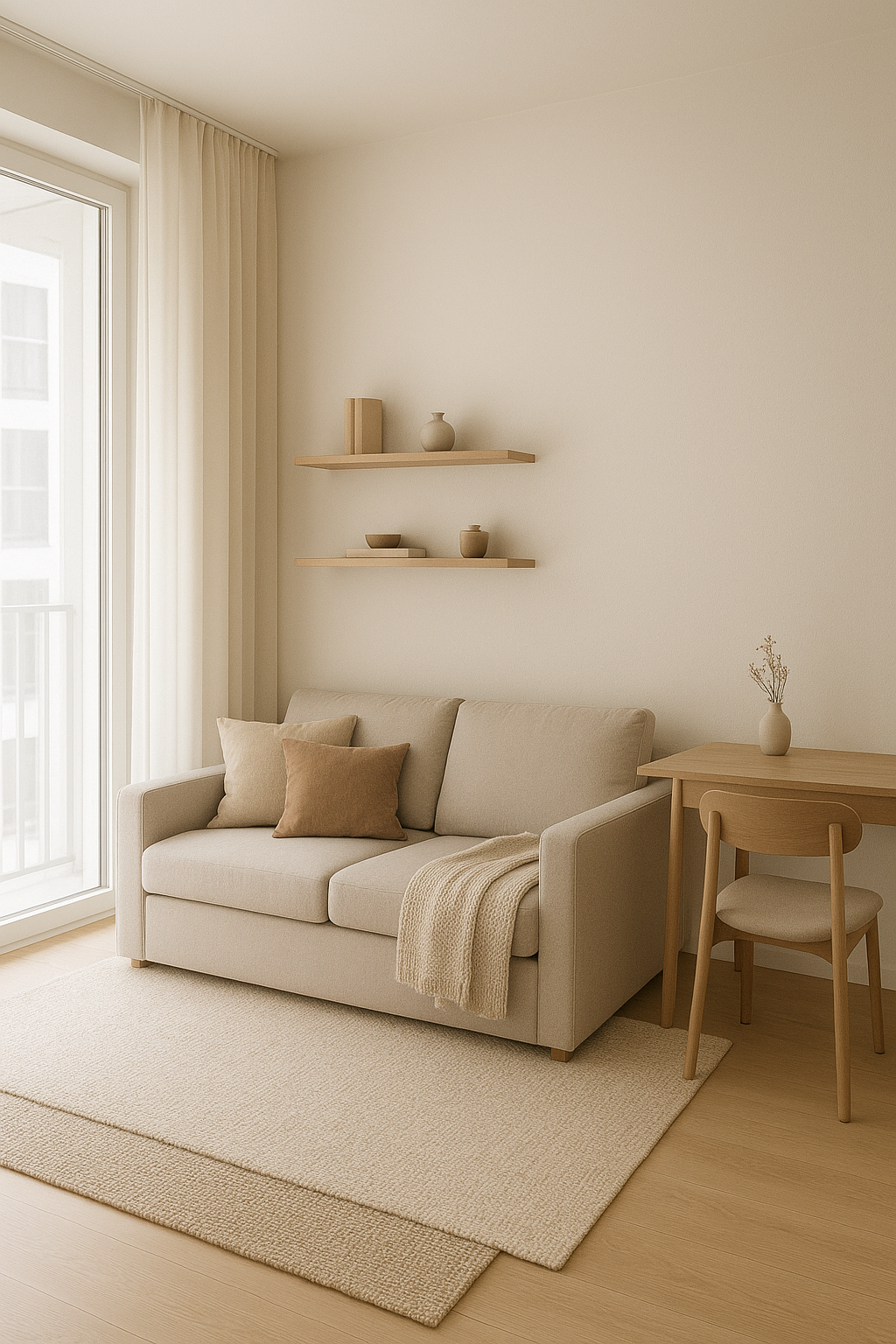
Small Space Living: Smart Ideas to Maximize Style and Function
Living in a compact home doesn’t mean you have to compromise on comfort or style. In fact, with the right planning, small space living can be both beautiful and practical. Whether you’re in a studio apartment, a tiny home, or just a cozy city flat, smart design choices make all the difference. From multifunctional furniture to clever storage hacks, here are creative ways to transform limited square footage into a stylish and functional retreat.
1. Smart Storage Solutions
One of the biggest challenges of small space living is storage. The secret is to think vertically and use every nook and cranny. Floating shelves, under-bed drawers, and wall-mounted cabinets can free up valuable floor space. Consider furniture with hidden storage, like ottomans that double as bins or coffee tables with shelves underneath.
Another great hack is using over-the-door organizers for shoes, cleaning supplies, or pantry items. By keeping things off the floor and neatly tucked away, your space instantly feels more open and airy.
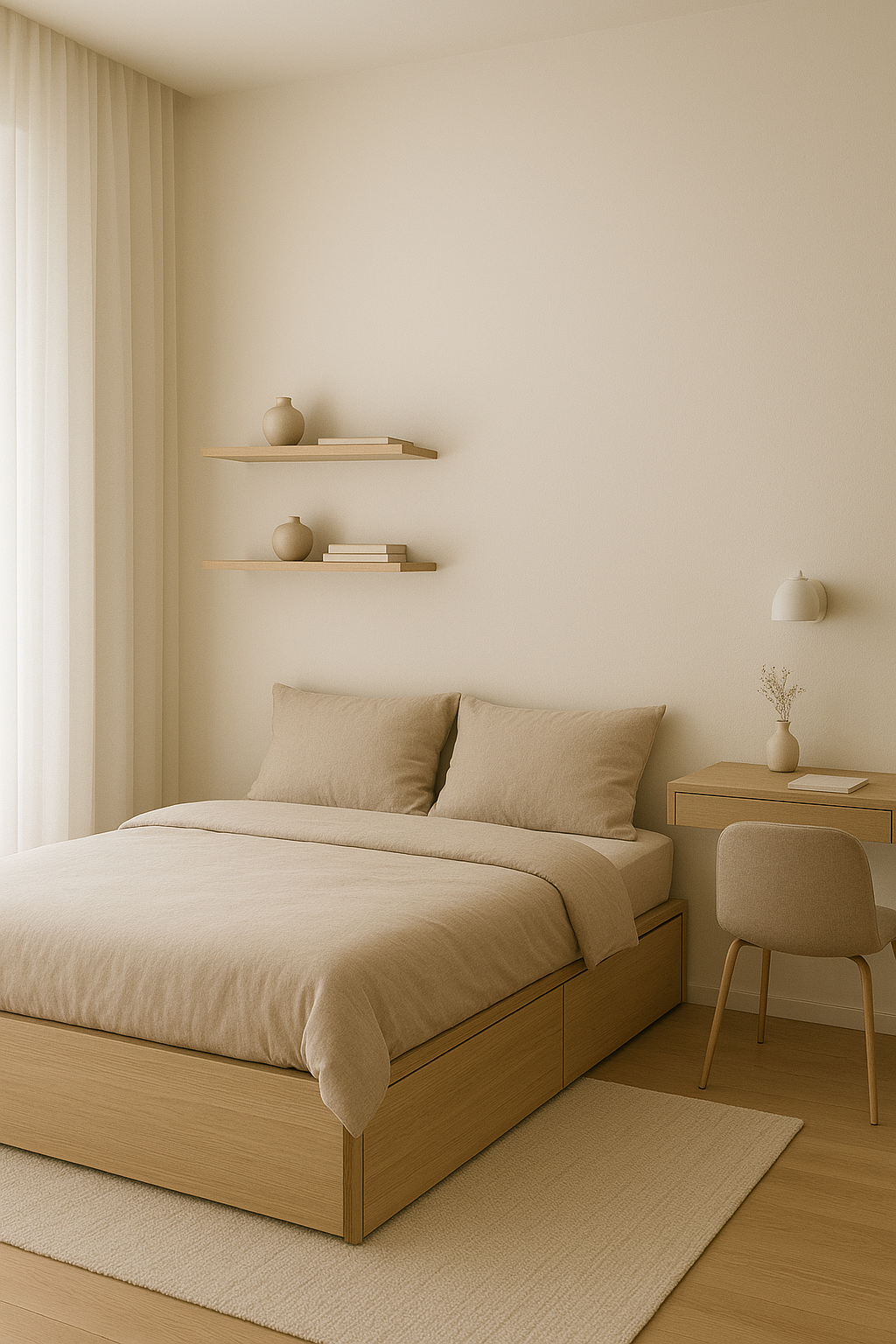
2. Small Living Room Layouts That Work
When it comes to designing a small living room, every inch counts. A slim sofa against the wall can save space while creating a comfortable seating area. Nesting coffee tables are a stylish solution—they can be spread out when needed and tucked away when not.
Using light-colored rugs and sheer curtains helps reflect light, making the room appear larger. Adding mirrors is another classic trick for giving the illusion of more space. Finally, incorporating greenery like potted plants adds freshness without overwhelming the layout.
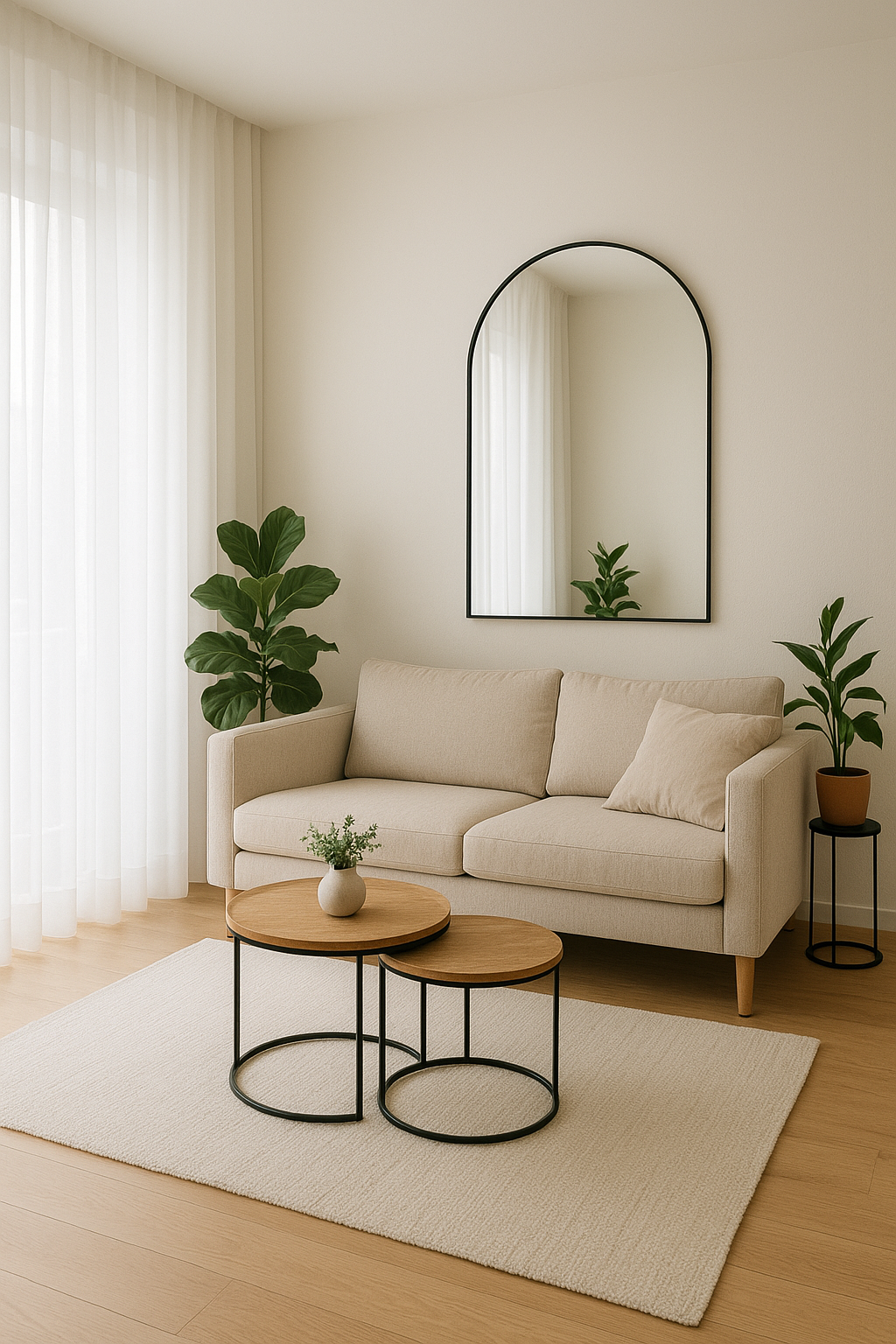
3. Creating a Cozy Small Bedroom
A bedroom should feel like a peaceful retreat, no matter its size. For small bedrooms, choose a bed with built-in storage drawers or opt for a loft-style bed to free up floor space underneath. Wall-mounted lamps or sconces can replace bulky bedside tables, leaving more room for movement.
Layering soft textiles—like plush throws, pastel bedding, and rugs—adds comfort and personality. Keeping a cohesive color palette of neutrals and soft tones will make the room feel calm and airy.
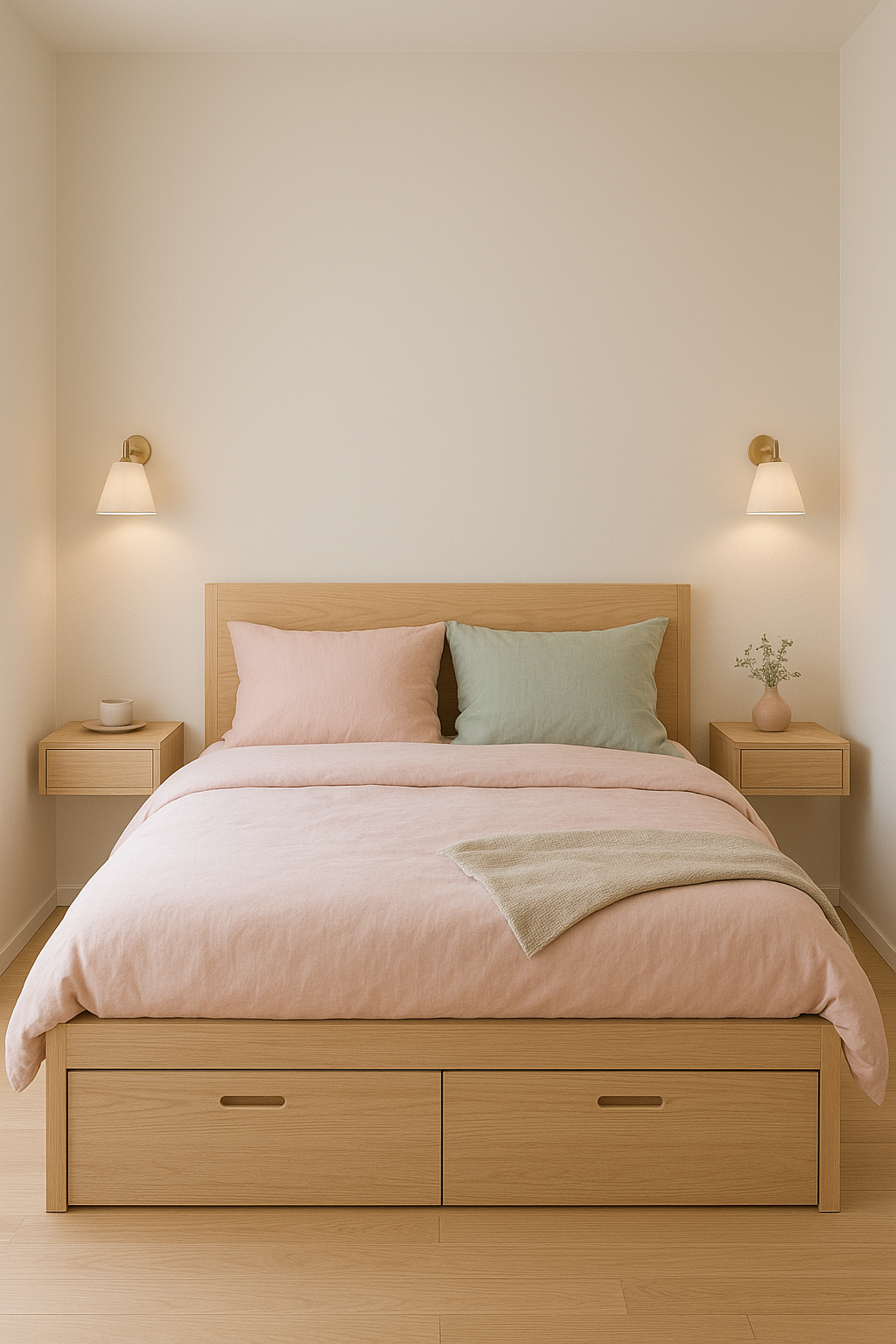
4. Designing a Stylish Small Kitchen
Even a compact kitchen can be both functional and chic. Use vertical wall space with open shelves or pegboards for storing utensils, pots, and pans. Magnetic strips for knives and wall-mounted spice racks keep countertops clear and clutter-free.
Under-cabinet lighting not only improves visibility but also makes the kitchen appear larger. Stick with light-colored cabinetry for a spacious feel, and add natural touches like potted herbs for a fresh, cozy vibe.
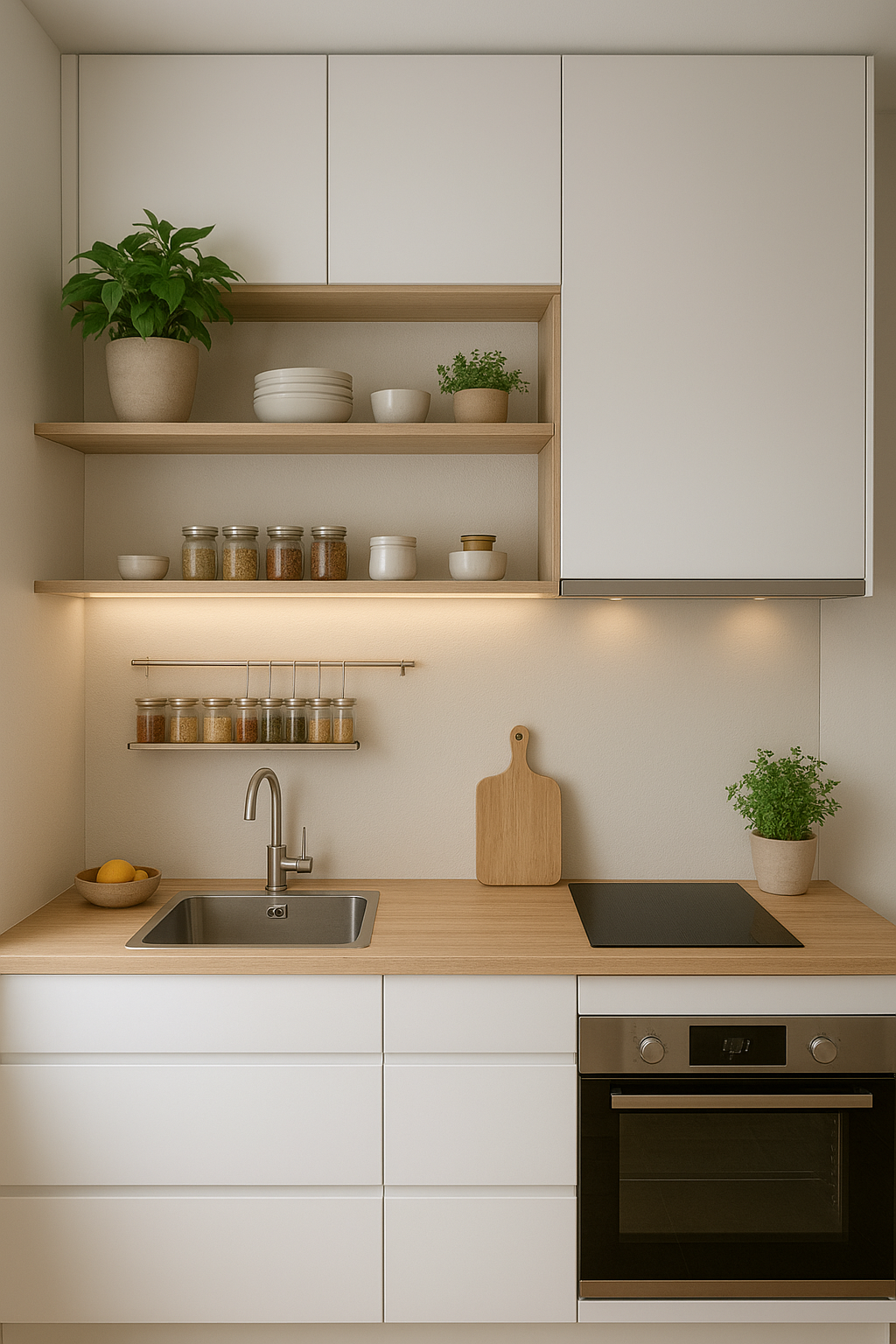
5. Decorating a Tiny Apartment with Personality
A tiny apartment doesn’t mean giving up on personal style. The key is choosing multi-functional furniture, such as a foldable dining table or a sleeper sofa. Adding wall art or a decorative mirror makes the space feel curated and stylish.
Layered rugs and cozy textiles create warmth, while minimal clutter ensures the apartment remains open and inviting. Always prioritize quality over quantity—fewer well-chosen pieces will make your small space feel intentional rather than cramped.
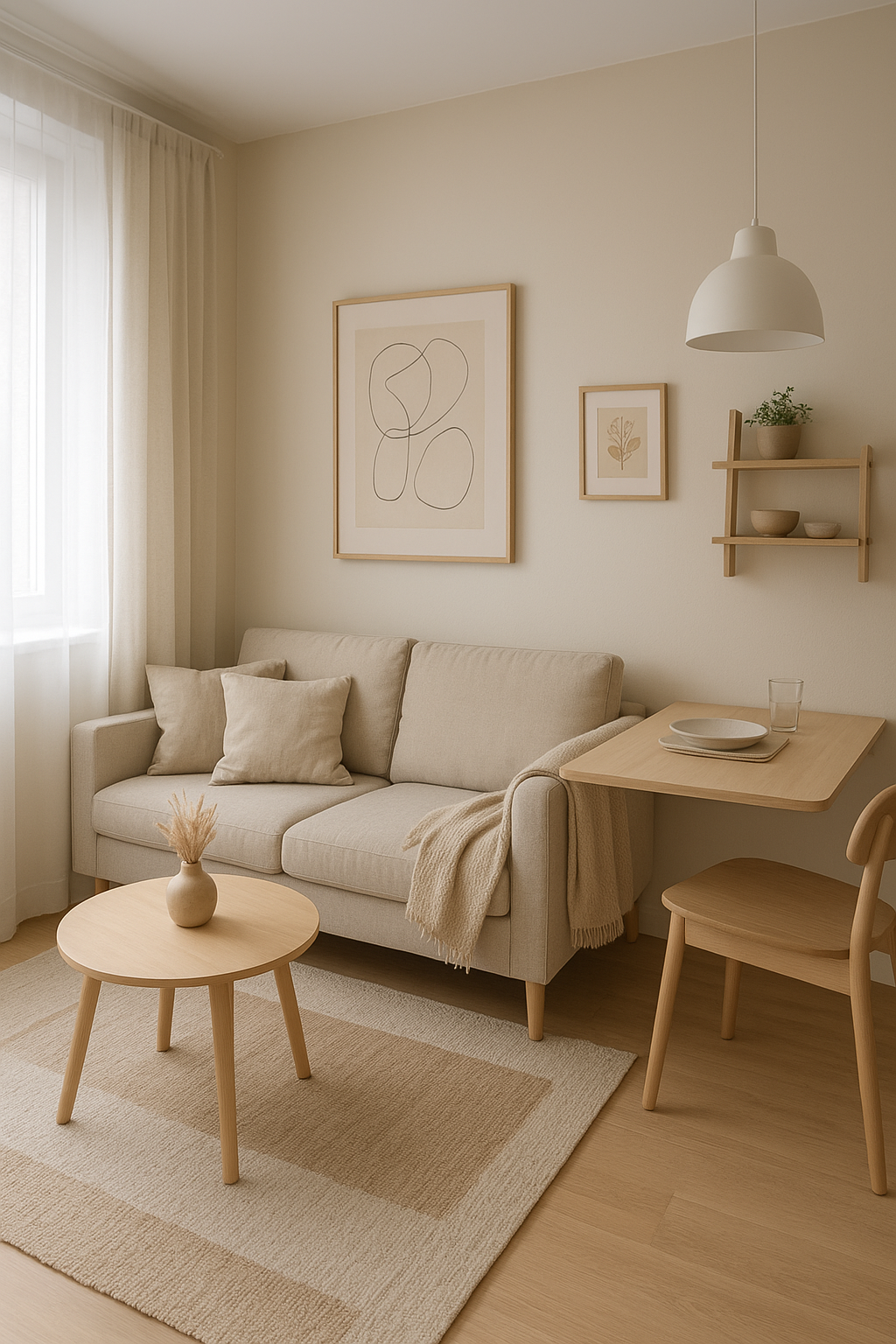
Final Thoughts
Small space living is all about creativity and smart design choices. By maximizing vertical storage, choosing multifunctional furniture, and sticking with a cohesive style, you can turn even the tiniest home into a beautiful, comfortable retreat. Instead of seeing small spaces as a limitation, embrace them as an opportunity to simplify, personalize, and create a cozy environment you’ll love coming home to.
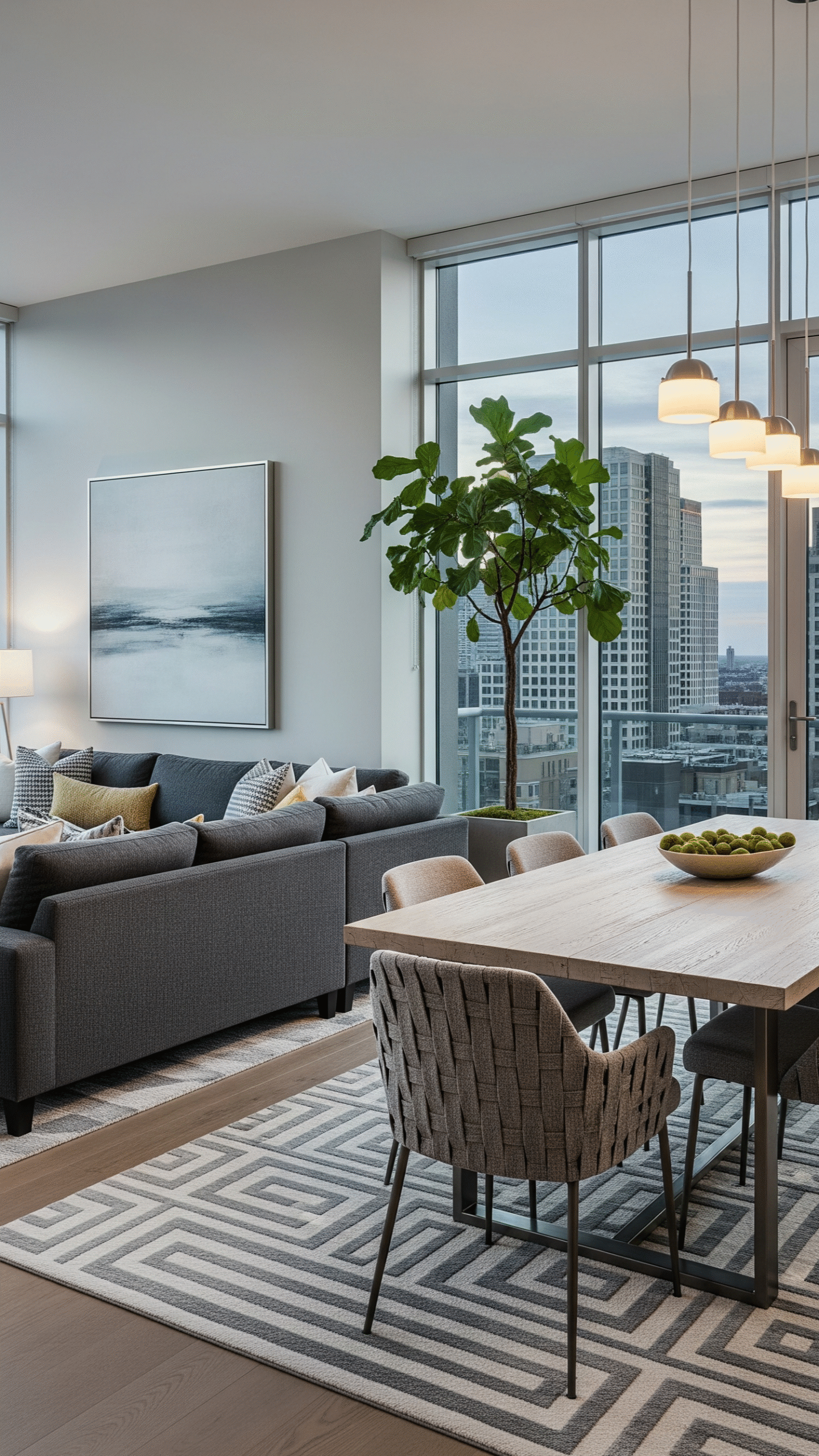
Living Room Dining Room Combo Ideas to Maximize Your Space
When you live in a home with limited square footage, combining areas is often the smartest way to make the most of what you have. One of the most popular and practical solutions is creating a living room dining room combo. This design approach not only saves space but also enhances flow, encourages connection, and gives your home a cohesive look. Whether you live in a compact apartment, a townhouse, or even a larger home, this layout can be both functional and stylish when planned thoughtfully.
In this article, we’ll explore practical tips and design inspiration to help you create a living room dining room combo that feels spacious, comfortable, and beautiful.
1. Define Spaces with Rugs and Furniture Placement
When two rooms share one area, clear visual boundaries are essential. Rugs are one of the simplest ways to define each zone. A large area rug under the sofa can distinguish the living room, while a smaller rug beneath the dining table marks the eating space. Similarly, thoughtful furniture placement can create a natural separation. For instance, placing the back of a sofa toward the dining area subtly divides the two sections without closing off the space.
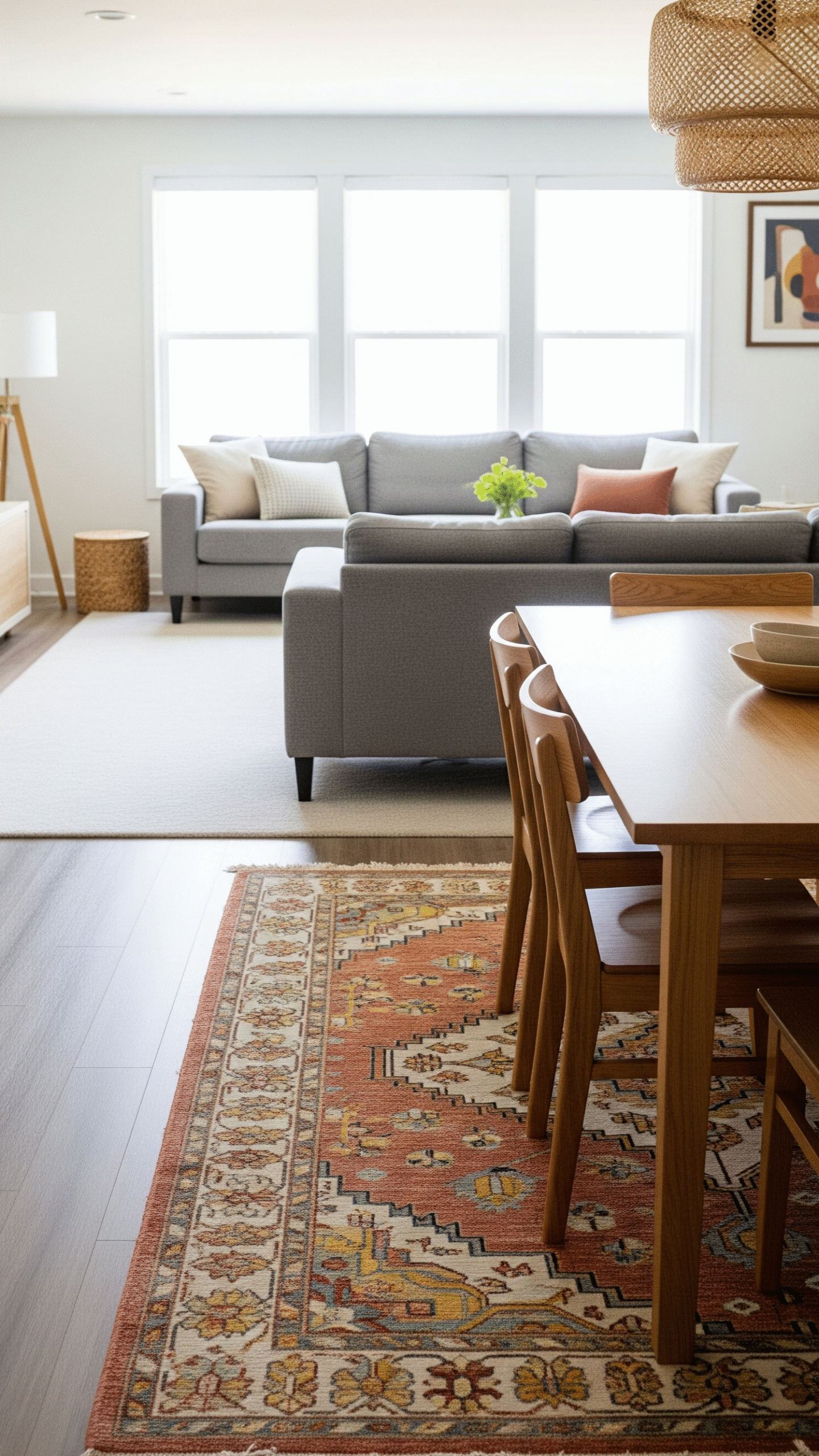
2. Choose a Cohesive Color Palette
The key to a seamless living room dining room combo is unity. Select a consistent color palette for walls, furniture, and decor that ties both spaces together. Neutral tones such as white, beige, and gray work beautifully to create an open, airy atmosphere. You can then add pops of color with throw pillows, dining chairs, or wall art. For a bold statement, consider an accent wall that visually connects the two areas.
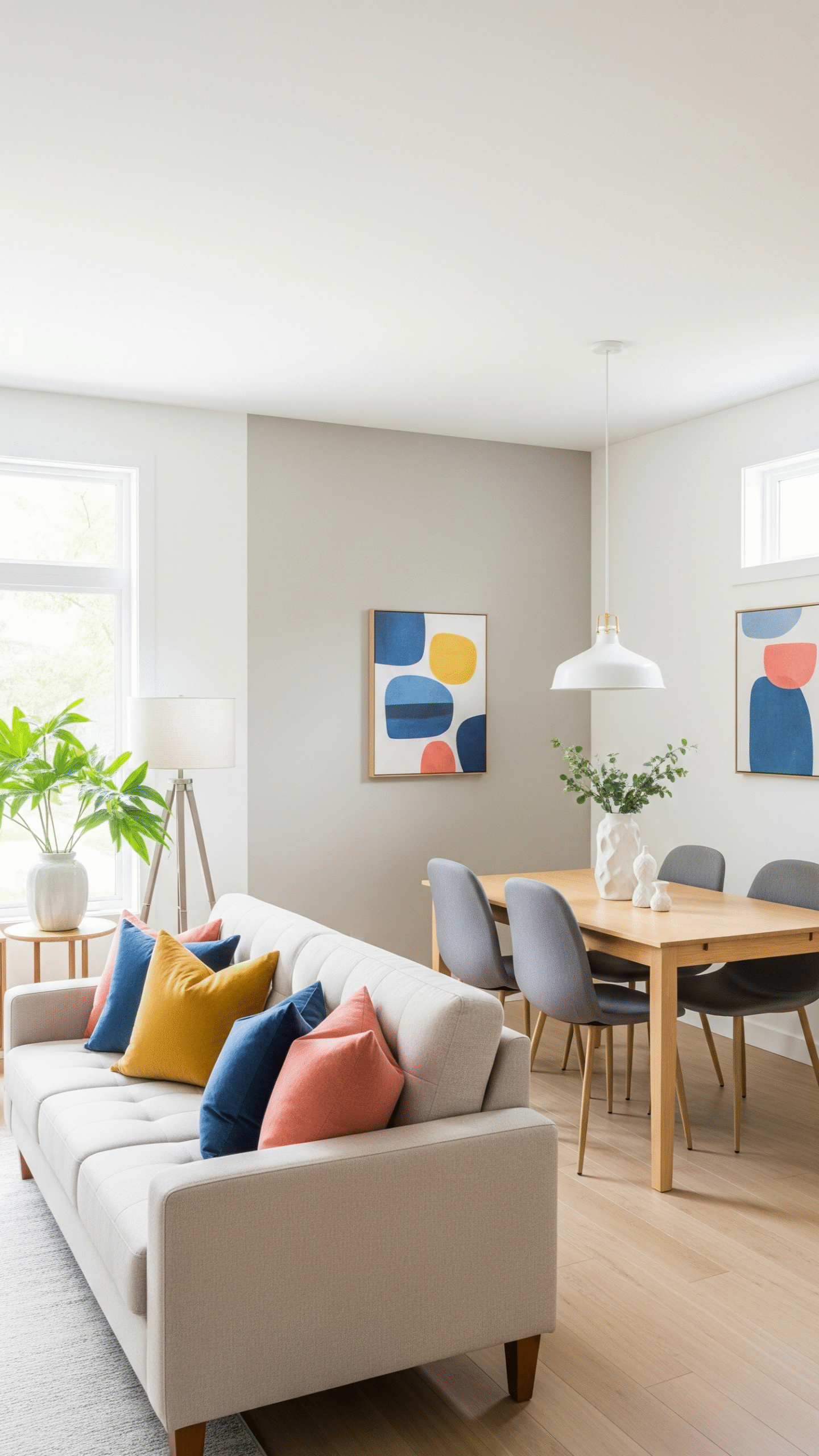
3. Use Multi-Functional Furniture
In small spaces, multi-functional furniture is your best friend. A dining table that doubles as a work desk or a sofa with hidden storage can make your combo space more efficient. Extendable dining tables are another great option, allowing you to expand for guests but save space when it’s just the family. Similarly, a slim console table can serve as a room divider, a buffet, and even a home office desk when needed.
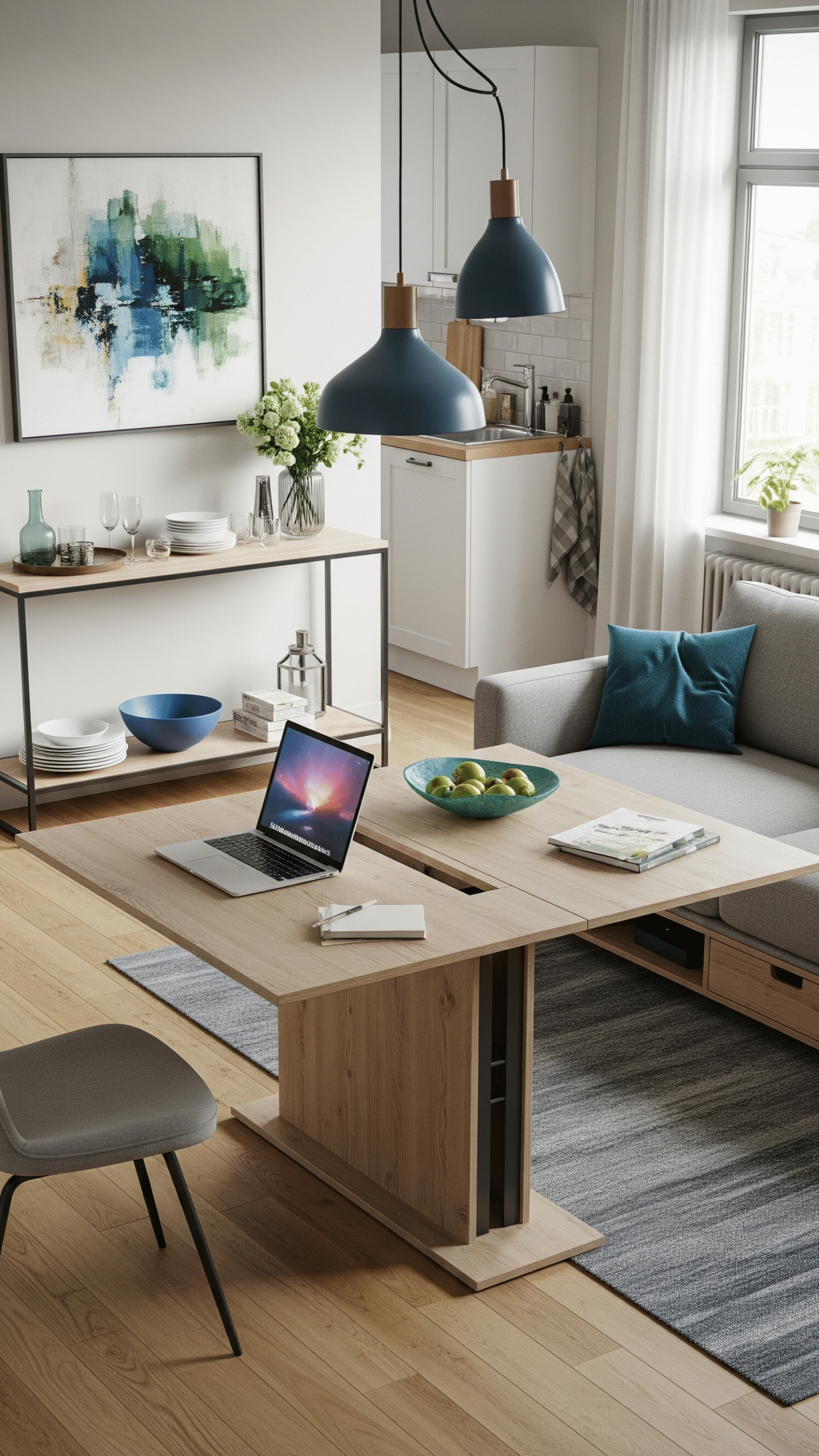
4. Incorporate Lighting for Ambience and Function
Lighting plays a huge role in defining spaces. Use a statement chandelier or pendant above the dining table to anchor that area, and softer ambient lighting such as floor lamps or sconces in the living room. This layered approach not only enhances the atmosphere but also helps create zones within the same open space.
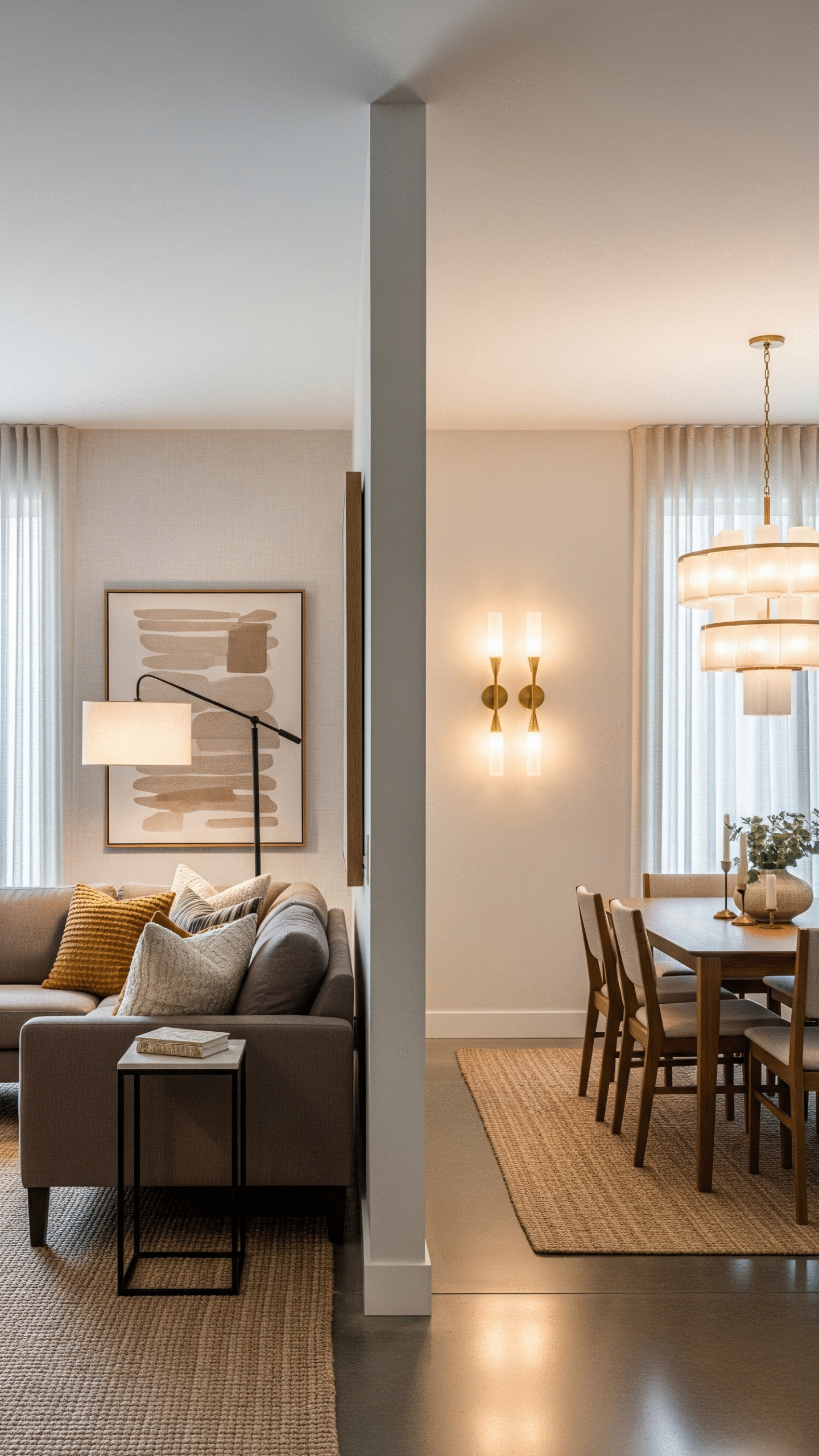
5. Keep the Layout Open and Uncluttered
One of the biggest mistakes in designing a living room dining room combo is overcrowding the area with too much furniture. Opt for streamlined pieces that balance style and function without overwhelming the space. Keep walkways clear, and avoid bulky furniture that blocks the natural flow of movement. Floating shelves, wall-mounted storage, and foldable furniture can keep things light and airy.
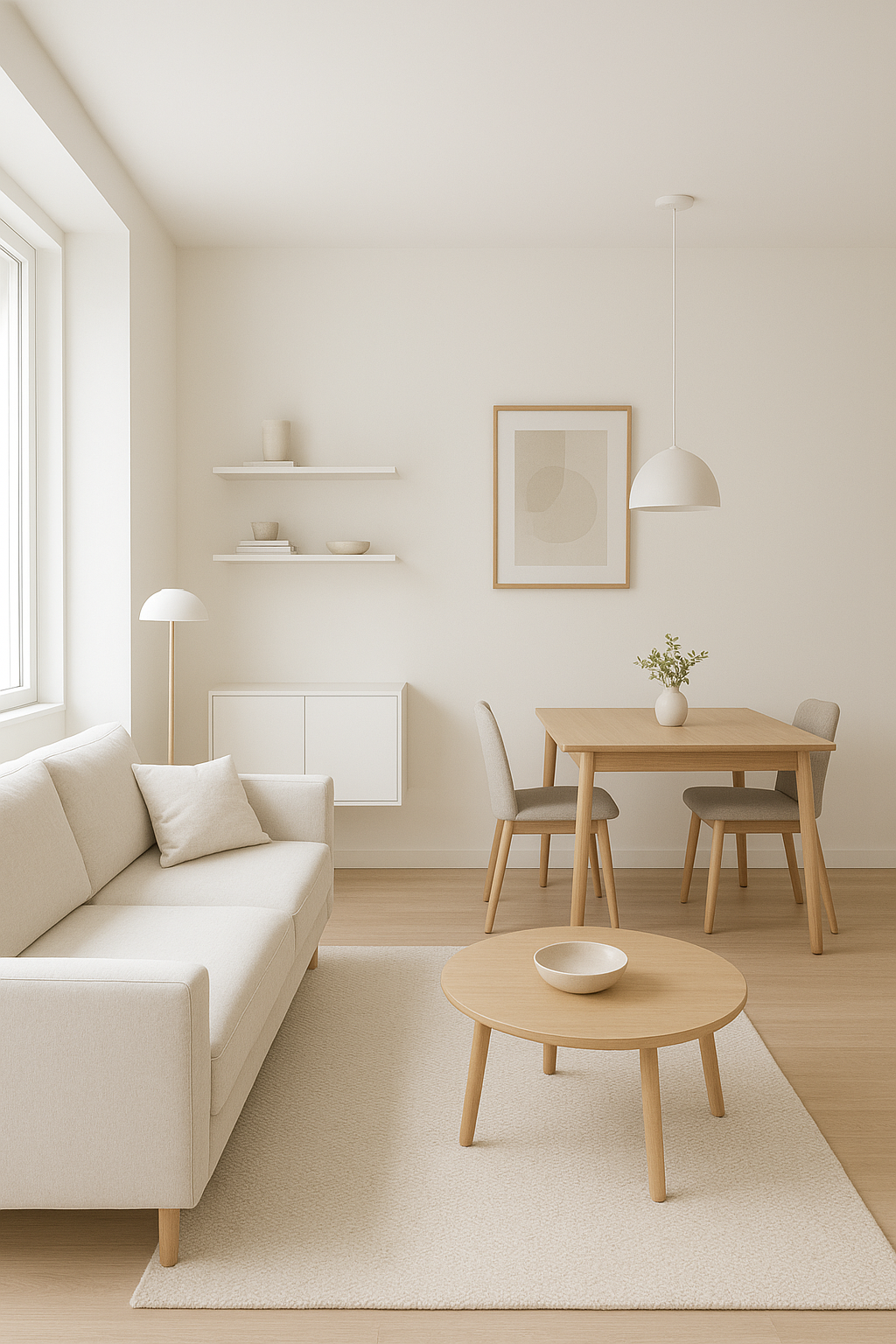
6. Add Personality with Decor
While functionality is key, don’t forget to add personality. Use artwork, mirrors, plants, and textiles to make the space feel warm and inviting. A large mirror can reflect light and make the room feel larger, while greenery adds freshness. Coordinating artwork between the dining and living areas can also visually tie them together.
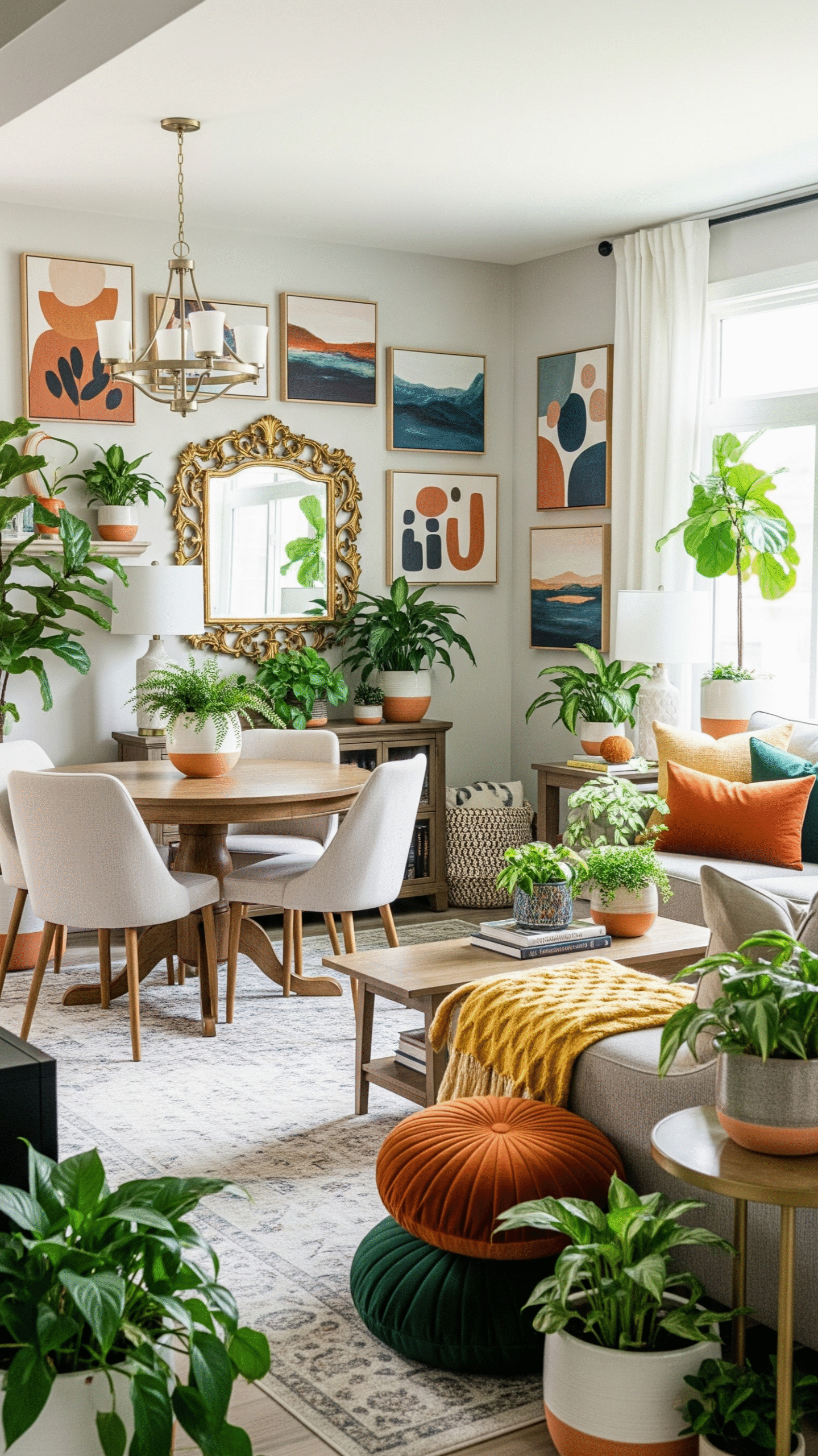
7. Create a Focal Point
Every space benefits from a focal point. In a living room dining combo, you might choose a fireplace, a statement wall, or even a bold piece of art as the anchor. From there, design your layout to highlight this feature while keeping both spaces connected.
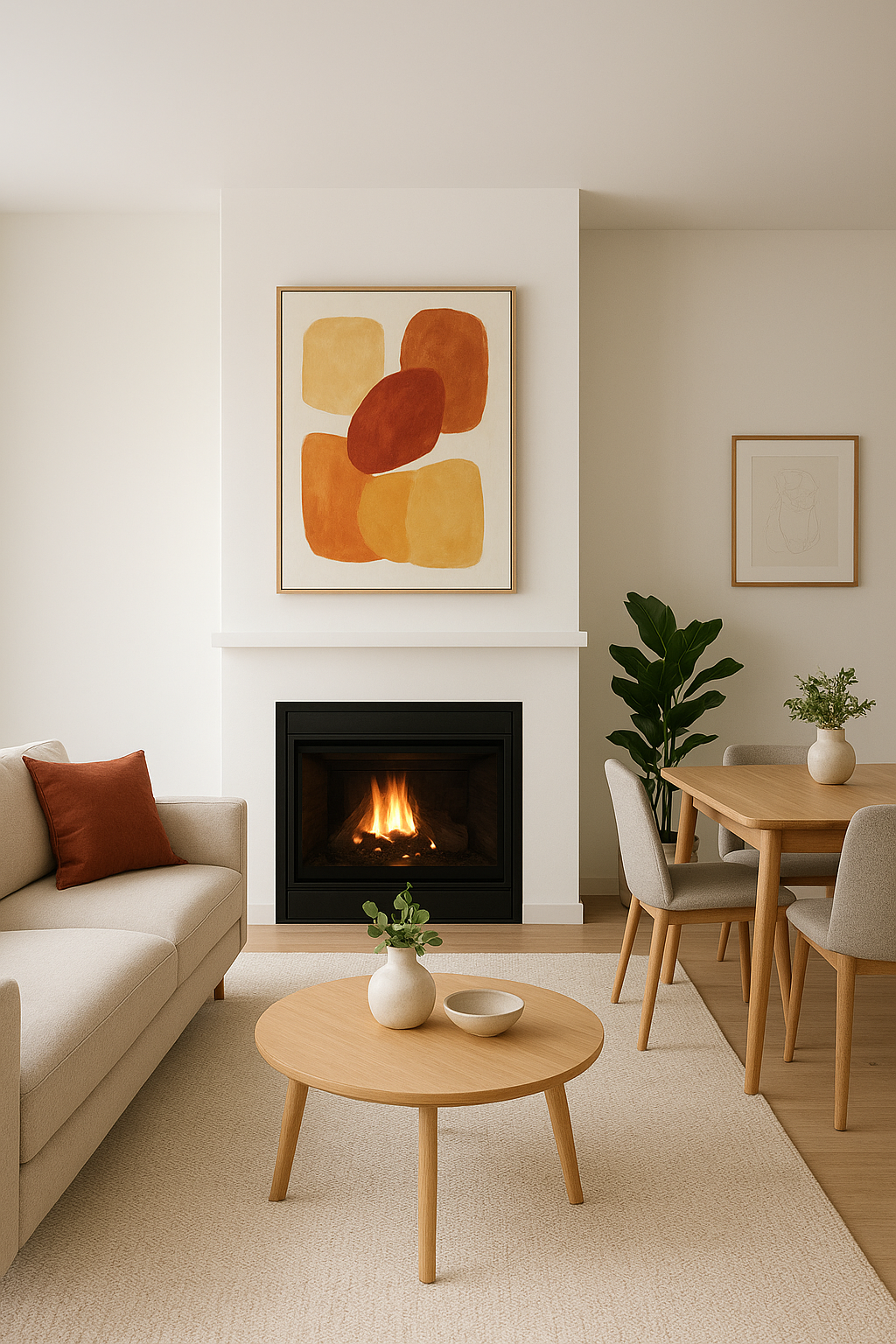
Conclusion
Designing a living room dining room combo is all about balance. By defining zones with rugs, using a cohesive color palette, incorporating multifunctional furniture, and layering lighting, you can create a space that feels harmonious and stylish. With the right choices, even a compact home can offer comfort, beauty, and functionality.
Whether you want a cozy, rustic vibe or a sleek, modern look, these ideas can help you maximize your space while reflecting your personal style. Remember, the best designs are those that make everyday living easier and more enjoyable.
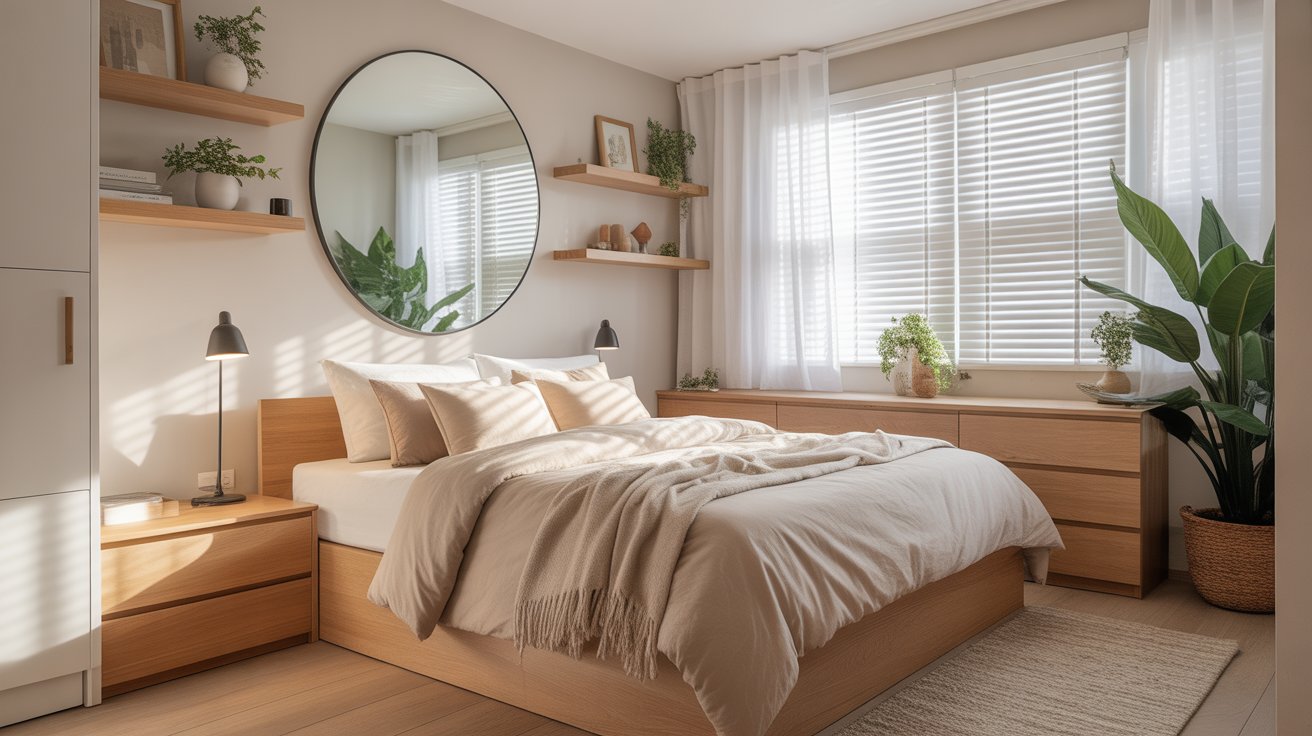
Tiny Bedroom Ideas to Maximize Style and Space
When it comes to home design, small bedrooms can often feel like a challenge. Limited square footage can make you think you must sacrifice comfort, storage, or style. But with the right approach, your compact room can become both functional and beautiful. The secret lies in thoughtful layouts, smart storage, and decor tricks that make the space feel larger than it is. In this article, we’ll explore the best tiny bedroom ideas to help you create a cozy, inviting retreat you’ll love spending time in.
1. Embrace a Minimalist Approach
Less truly is more in a small bedroom. Choosing only essential furniture pieces keeps your room from feeling cluttered. Opt for a simple bed frame, a nightstand, and perhaps a slim dresser. Stick to a neutral or light color palette, as it creates an airy atmosphere and makes the room feel more open. Adding a single piece of art or a statement lamp ensures personality without overwhelming the room.
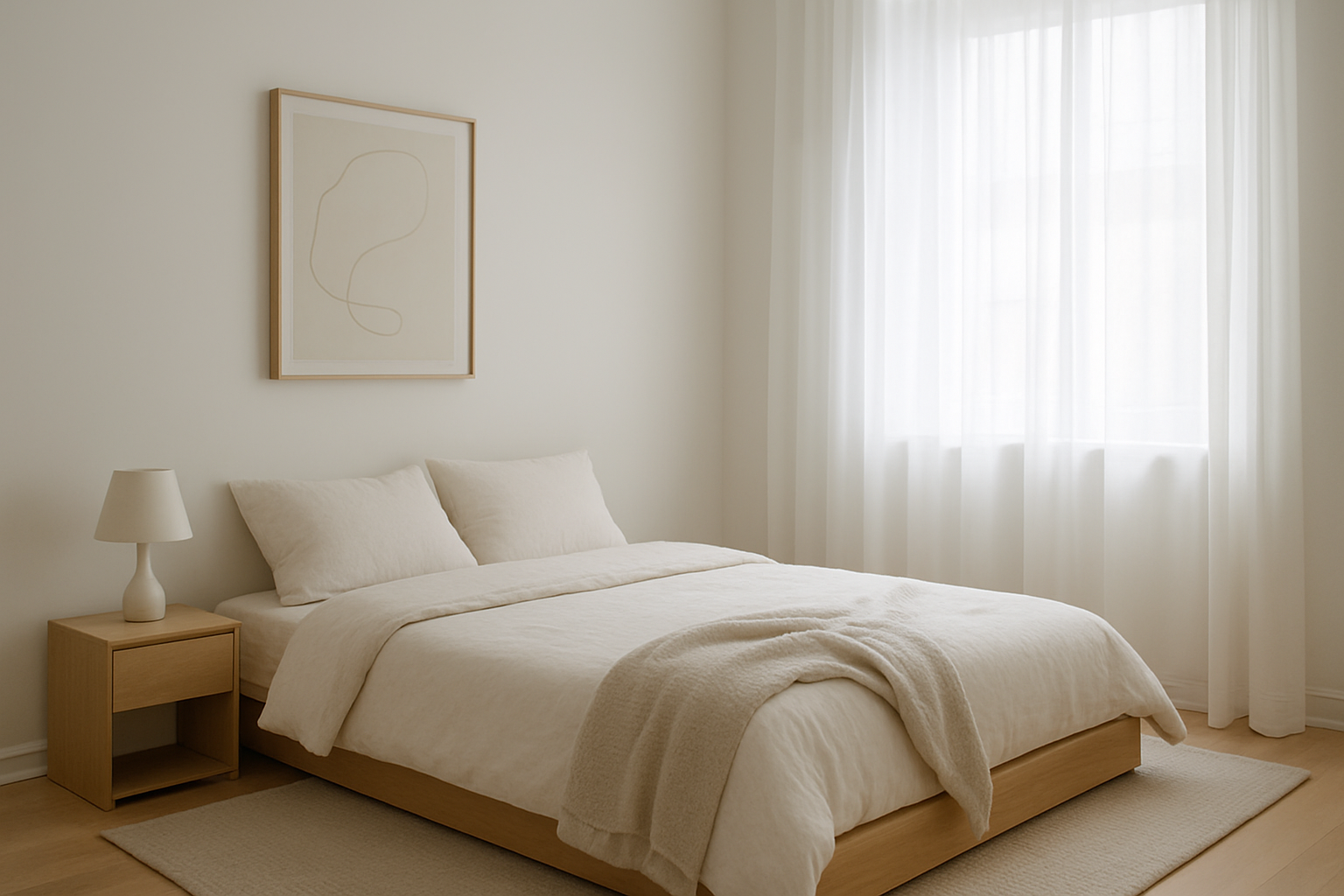
2. Make Use of Vertical Space
Tiny bedrooms don’t always have much floor space, but the walls provide valuable opportunities. Install floating shelves above your bed or desk to store books, decor, and plants. Consider a wall-mounted reading lamp instead of a bulky nightstand light. Tall wardrobes or shelving units can make the most of ceiling height, providing storage without crowding the room.
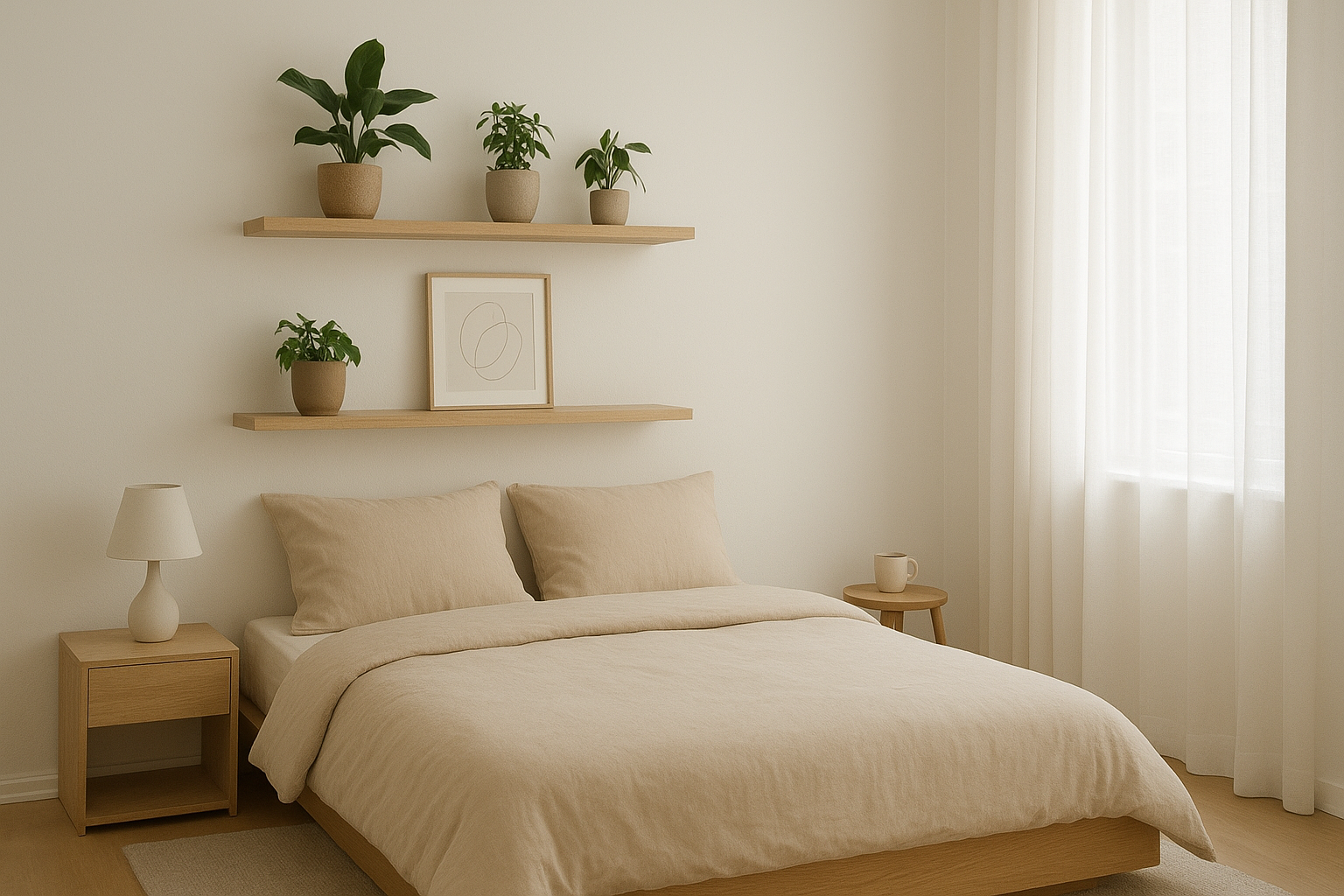
3. Incorporate Multi-Functional Furniture
Investing in multifunctional furniture is a game-changer. Beds with under-storage drawers, ottomans that double as seating and storage, or fold-down desks can transform how you use your space. Murphy beds are also ideal for studio apartments or shared spaces, freeing up the floor during the day. These tiny bedroom ideas allow you to maximize every inch.
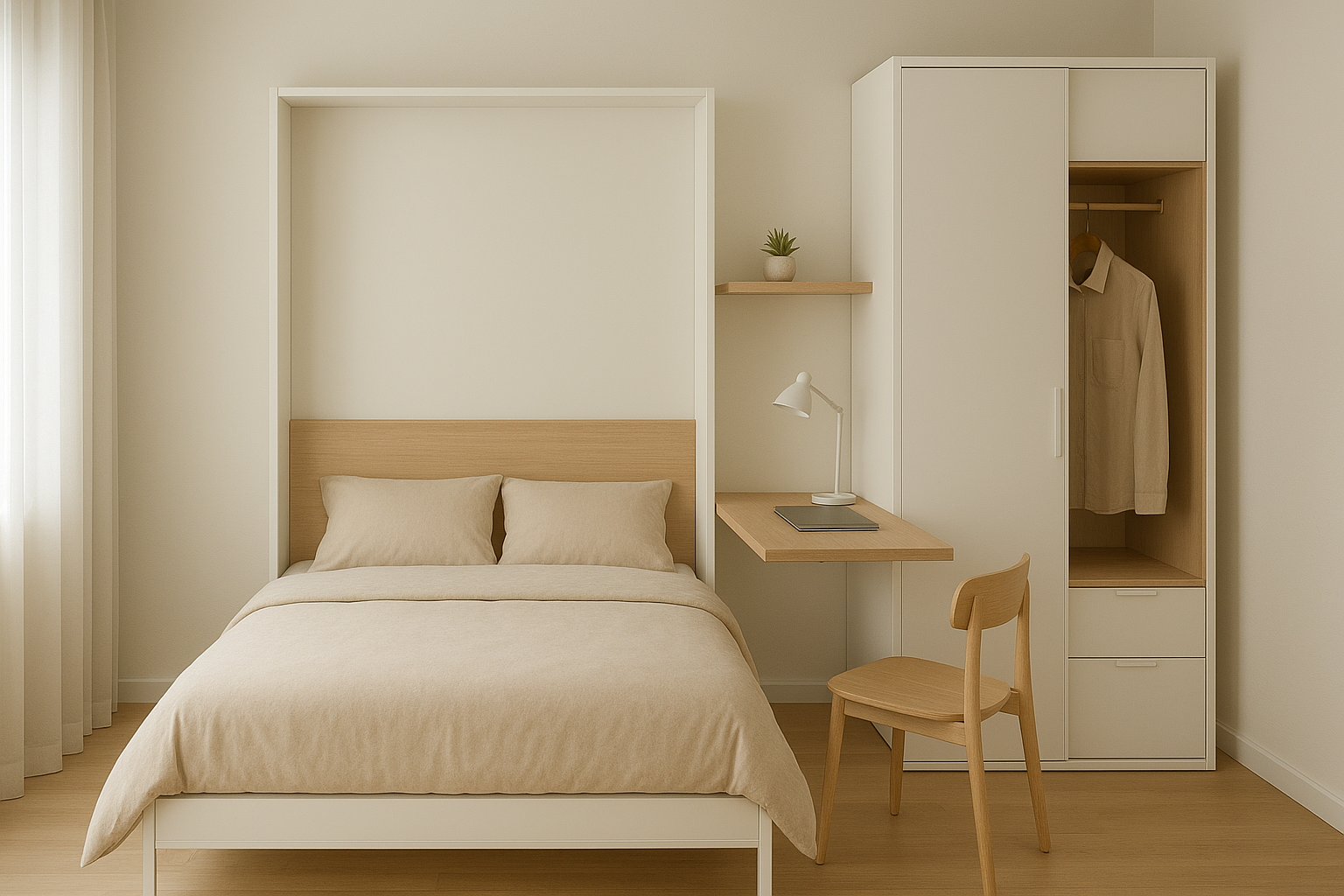
4. Play with Light and Mirrors
Natural light instantly makes a small bedroom appear larger, so keep window treatments light and sheer. For added brightness, use strategically placed mirrors to reflect light and create the illusion of depth. A large floor mirror or mirrored closet doors can open up the room dramatically. Pair this with soft layered lighting — such as pendant lamps and fairy lights — to create warmth and coziness.
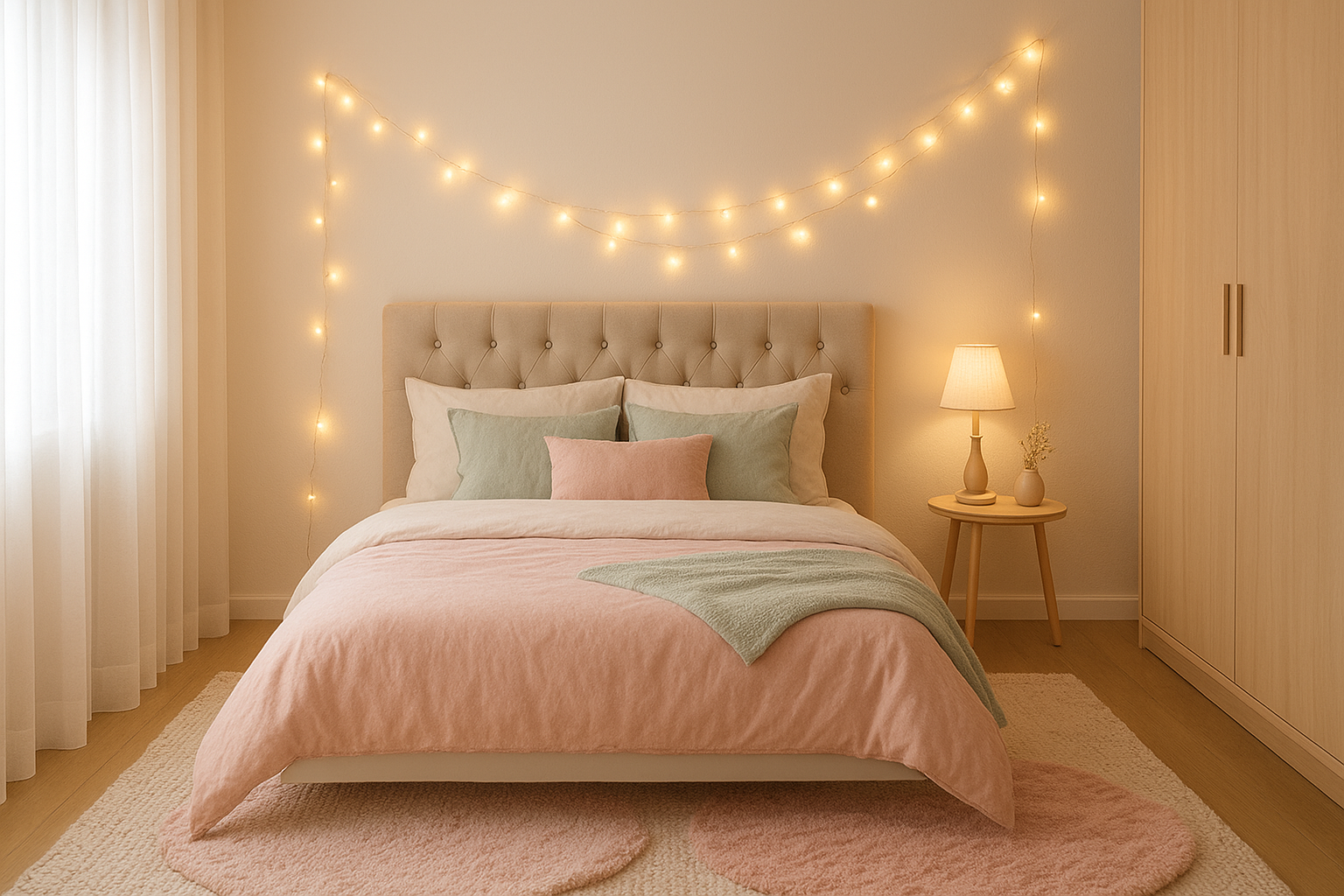
5. Layer Textures for Comfort
Just because your bedroom is small doesn’t mean it has to feel stark. Layering textiles like throws, rugs, and pillows adds coziness and visual interest. Stick to a limited color palette, but experiment with materials such as linen, cotton, or faux fur to create dimension. A tiny space feels more inviting when it has a mix of tactile elements.
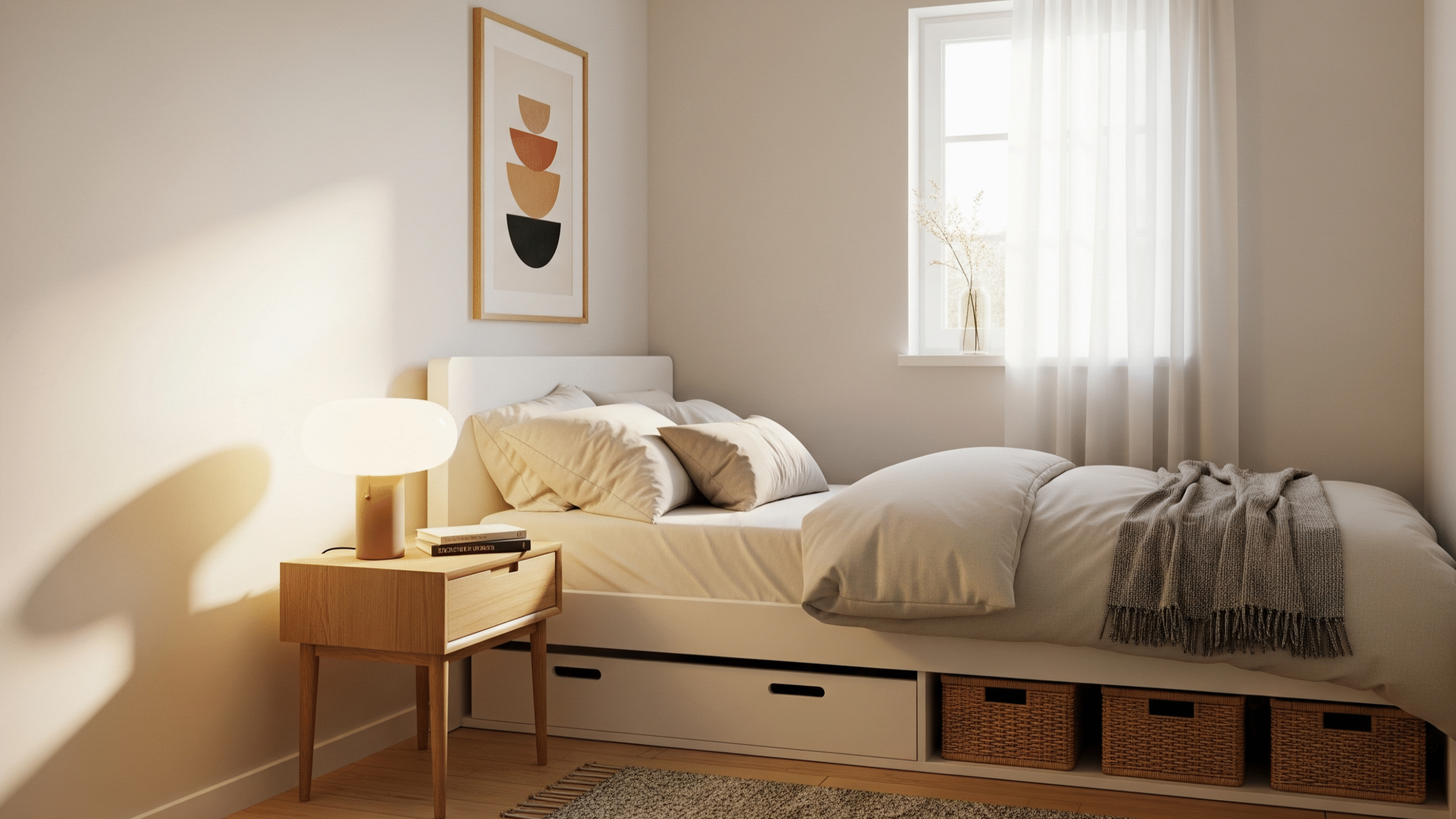
6. Use Space-Saving Storage Hacks
Creative storage is key in small bedrooms. Under-bed bins, wall hooks, and over-the-door organizers keep clutter out of sight. Floating nightstands save floor space while still offering storage. Built-in shelving around the bed frame is another clever solution. The goal is to create a neat and organized environment without sacrificing style.
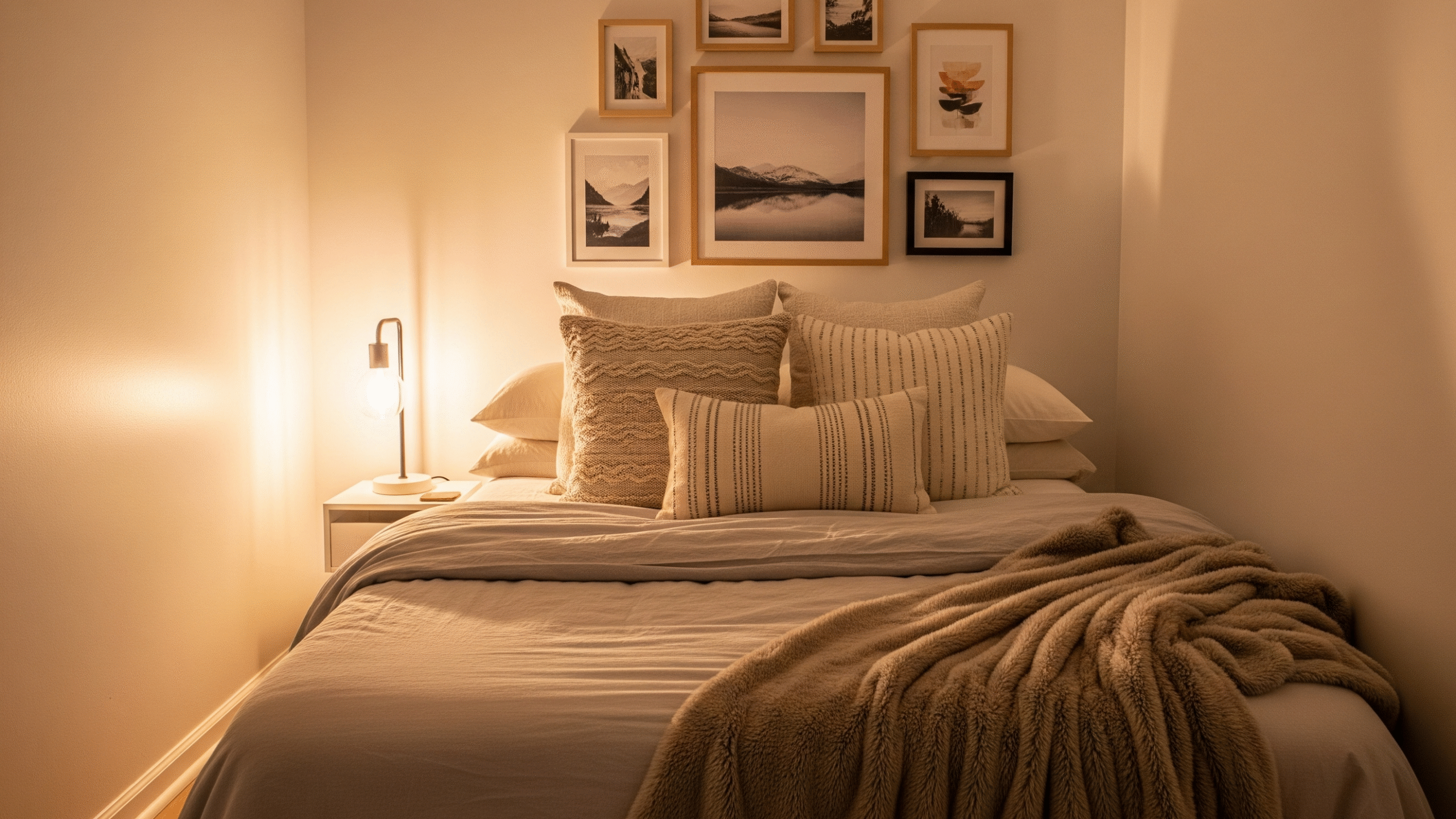
7. Personalize Your Space with Decor
Even the tiniest bedroom should reflect your personality. Add character with framed prints, a small gallery wall, or decorative cushions. Plants bring freshness and life to a small room, and they can be placed on floating shelves or hanging planters. Keep decor simple but intentional to avoid overcrowding.
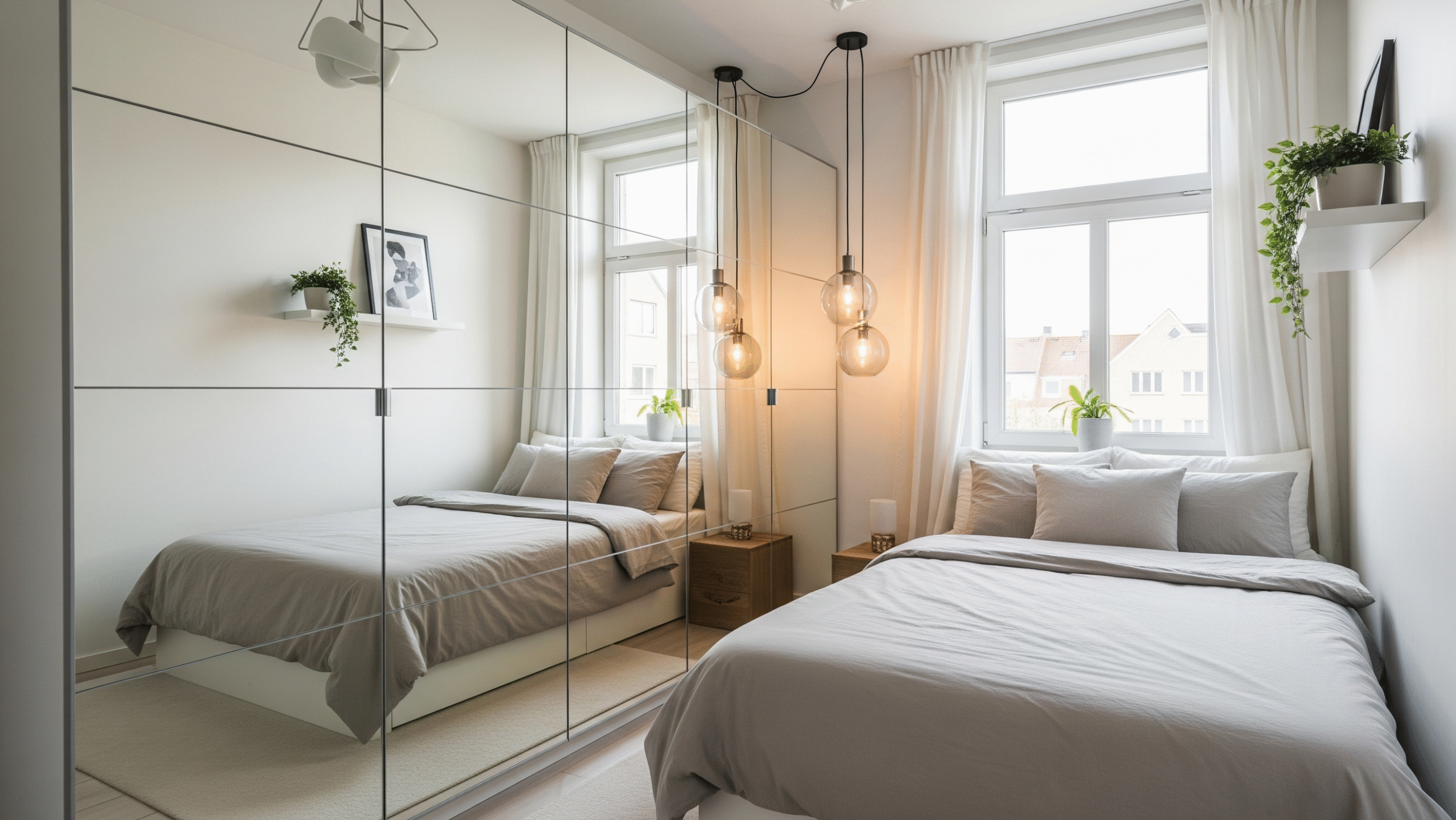
Final Thoughts
Designing a small bedroom may feel intimidating, but it’s also an opportunity to get creative. By embracing minimalism, utilizing vertical space, and investing in multifunctional furniture, you can turn your tiny room into a cozy and stylish retreat. With these tiny bedroom ideas, you don’t have to sacrifice comfort for size — instead, you can create a personalized haven that feels both functional and beautiful.
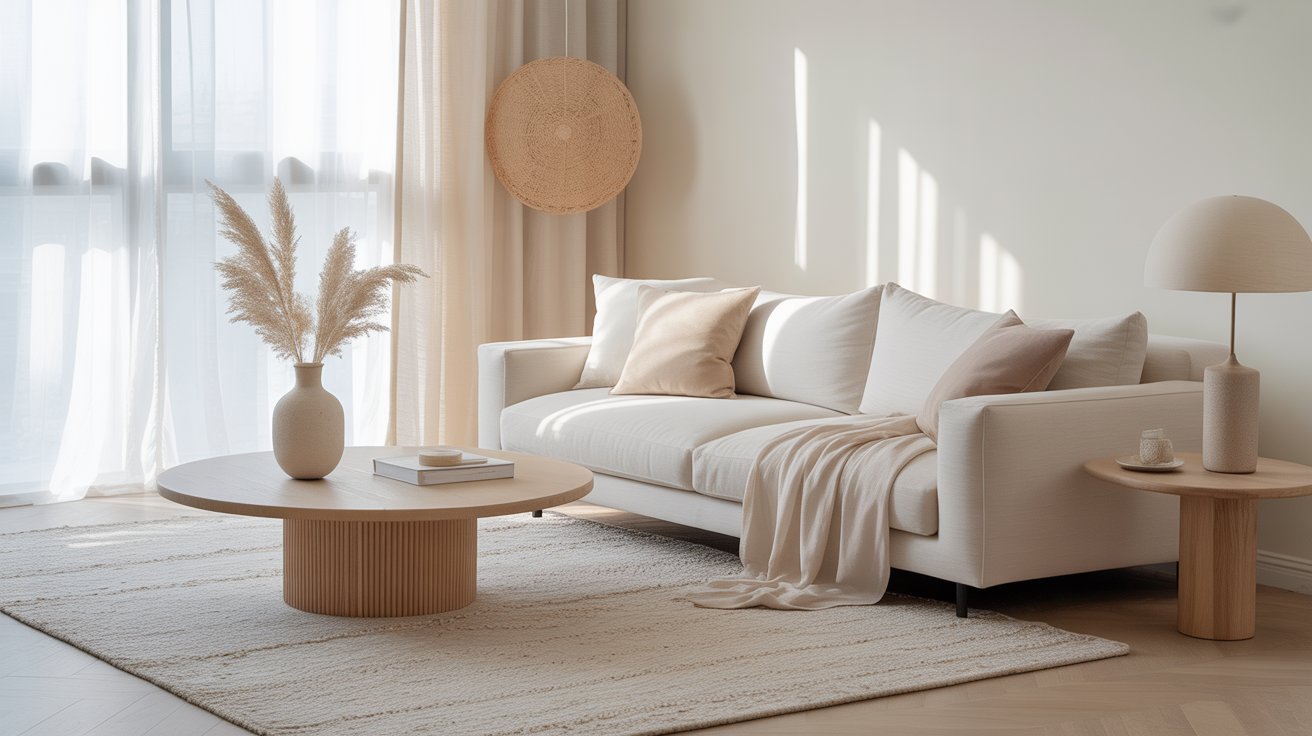
Minimalist Living Room Ideas for a Stylish and Calm Home
Creating a beautiful home doesn’t always require an abundance of furniture, accessories, or bold colors. In fact, sometimes less is more. A minimalist living room is the perfect example of how simplicity can bring elegance, comfort, and timeless appeal to your space. Whether you live in a compact apartment, a family home, or a cozy studio, adopting a minimalist approach will help you design a stylish yet calm atmosphere where every item has a purpose.
Why Choose a Minimalist Living Room?
A minimalist living room is all about clean lines, neutral tones, and purposeful design. This style isn’t just about decoration—it’s about creating a peaceful retreat that allows you to breathe, relax, and feel grounded. Unlike cluttered spaces, minimalism emphasizes functionality and balance. Every piece of furniture serves a purpose while also enhancing the overall aesthetic.
In today’s fast-paced world, having a clutter-free, well-designed space can reduce stress and increase comfort. A minimalist living room doesn’t feel empty; it feels intentional, calm, and spacious, even if you don’t have a large area to work with.
Key Elements of a Minimalist Living Room
1. Neutral Color Palette
Soft shades like white, beige, gray, and muted earth tones are the backbone of minimalist design. These colors create a calming foundation and allow natural light to brighten the room effortlessly. Adding subtle pops of black, green, or wood accents can bring depth without overwhelming the simplicity.
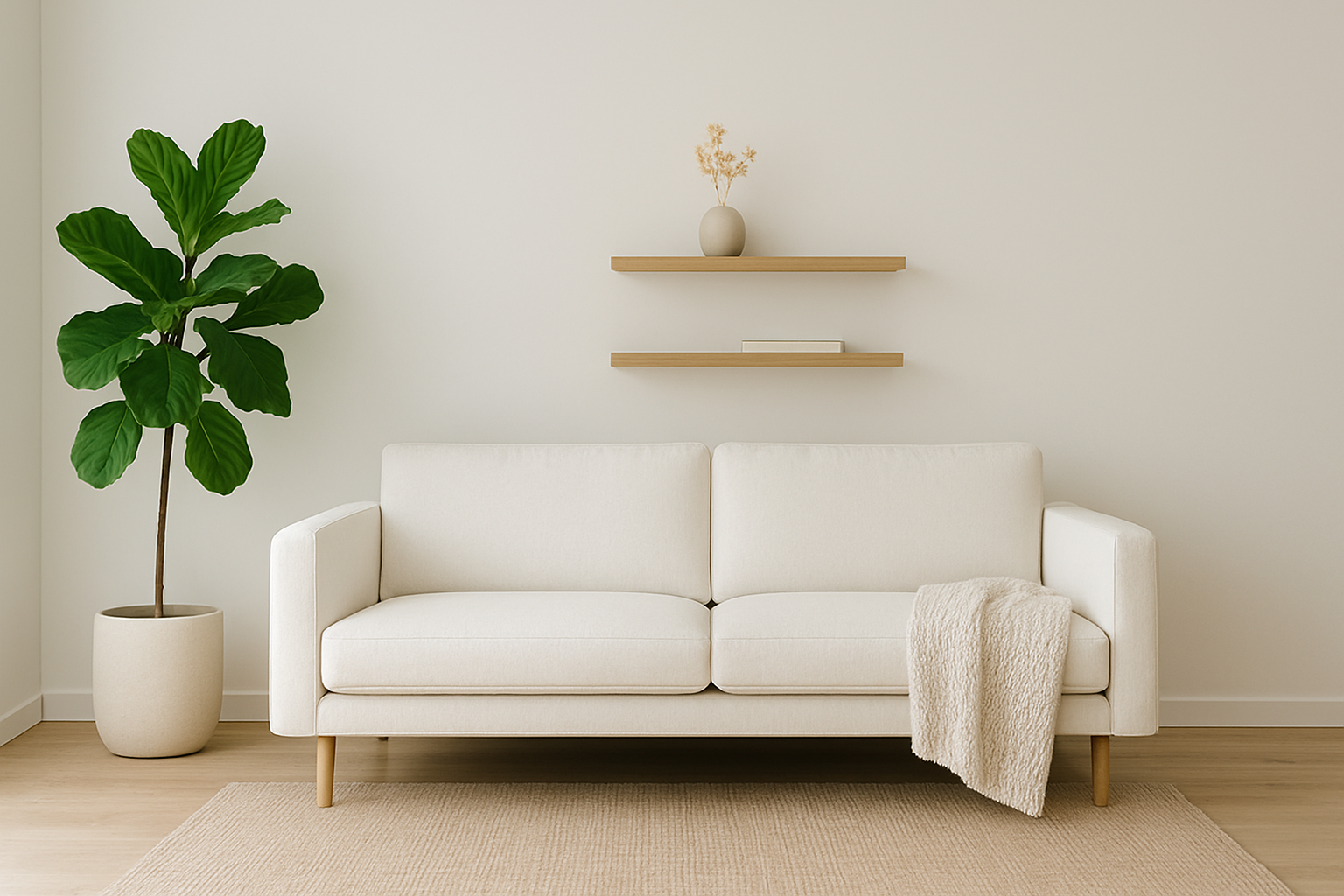
2. Functional Furniture
Choose pieces that combine comfort with clean design. Sofas with simple shapes, low-profile coffee tables, and versatile shelving units are perfect. Avoid oversized or overly ornate furniture, and instead, focus on items that are practical and timeless.
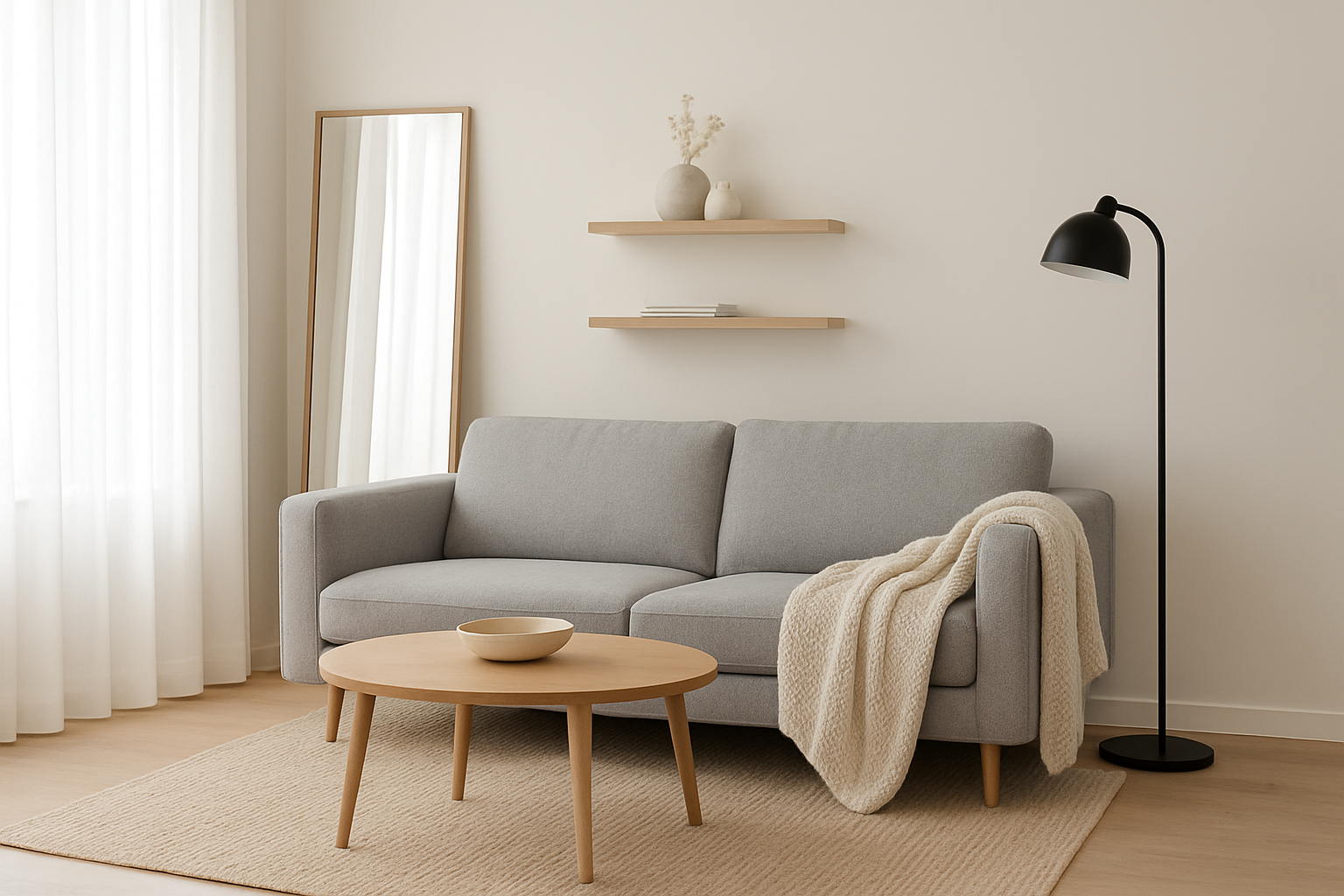
3. Natural Light
One of the most beautiful features of a minimalist living room is how it embraces natural light. Large windows, sheer curtains, and strategically placed mirrors enhance brightness, making the space feel larger and more open.
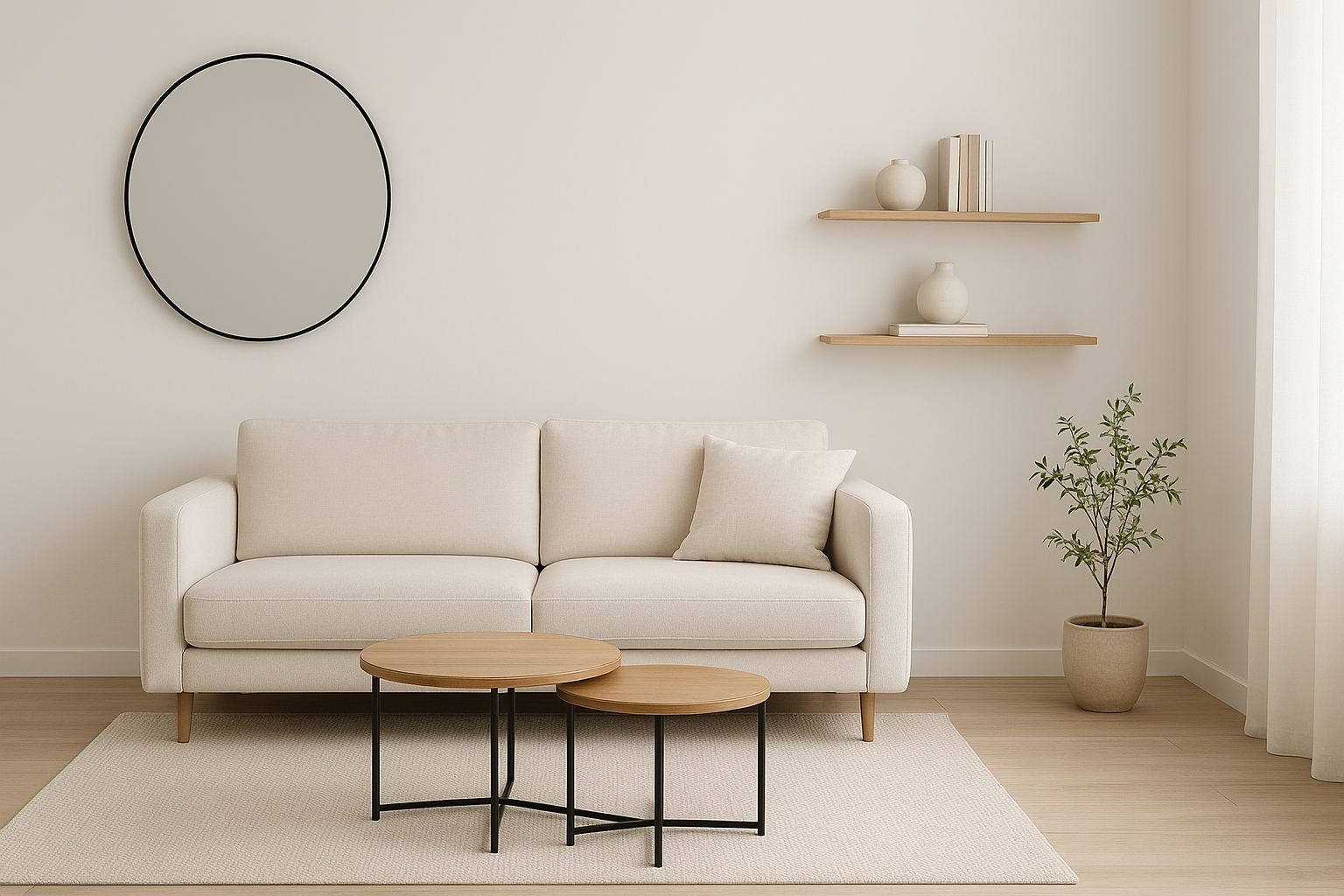
4. Textures for Warmth
Minimalism doesn’t have to feel cold. Add soft rugs, woven throws, and wooden furniture to bring warmth and coziness to your space. Textures balance the clean lines and make the room inviting.
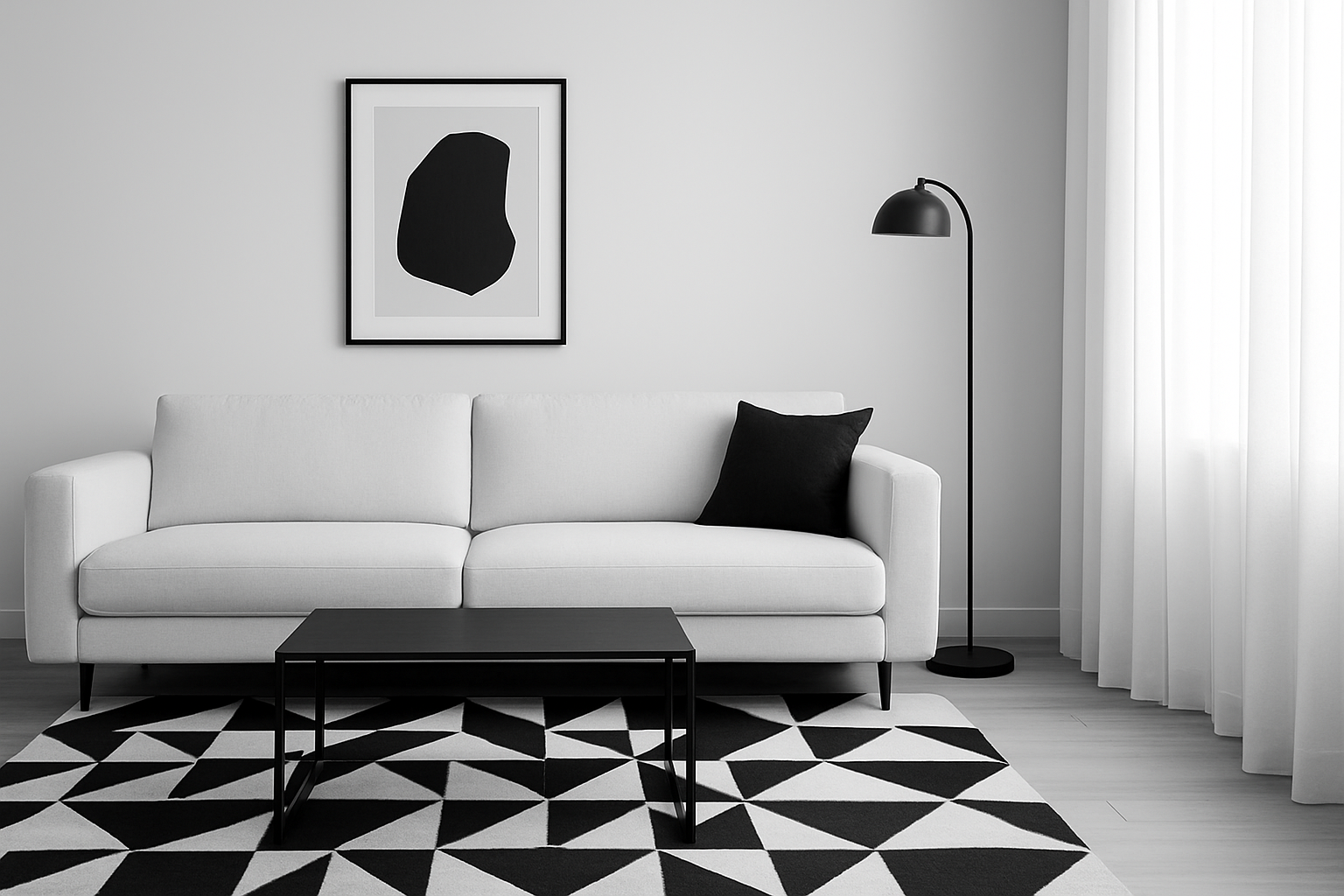
5. Decluttered Surfaces
Keep shelves, tables, and walls clutter-free. A minimalist living room celebrates open space. Instead of multiple small decor pieces, opt for a single statement artwork, a tall indoor plant, or a sculptural vase.
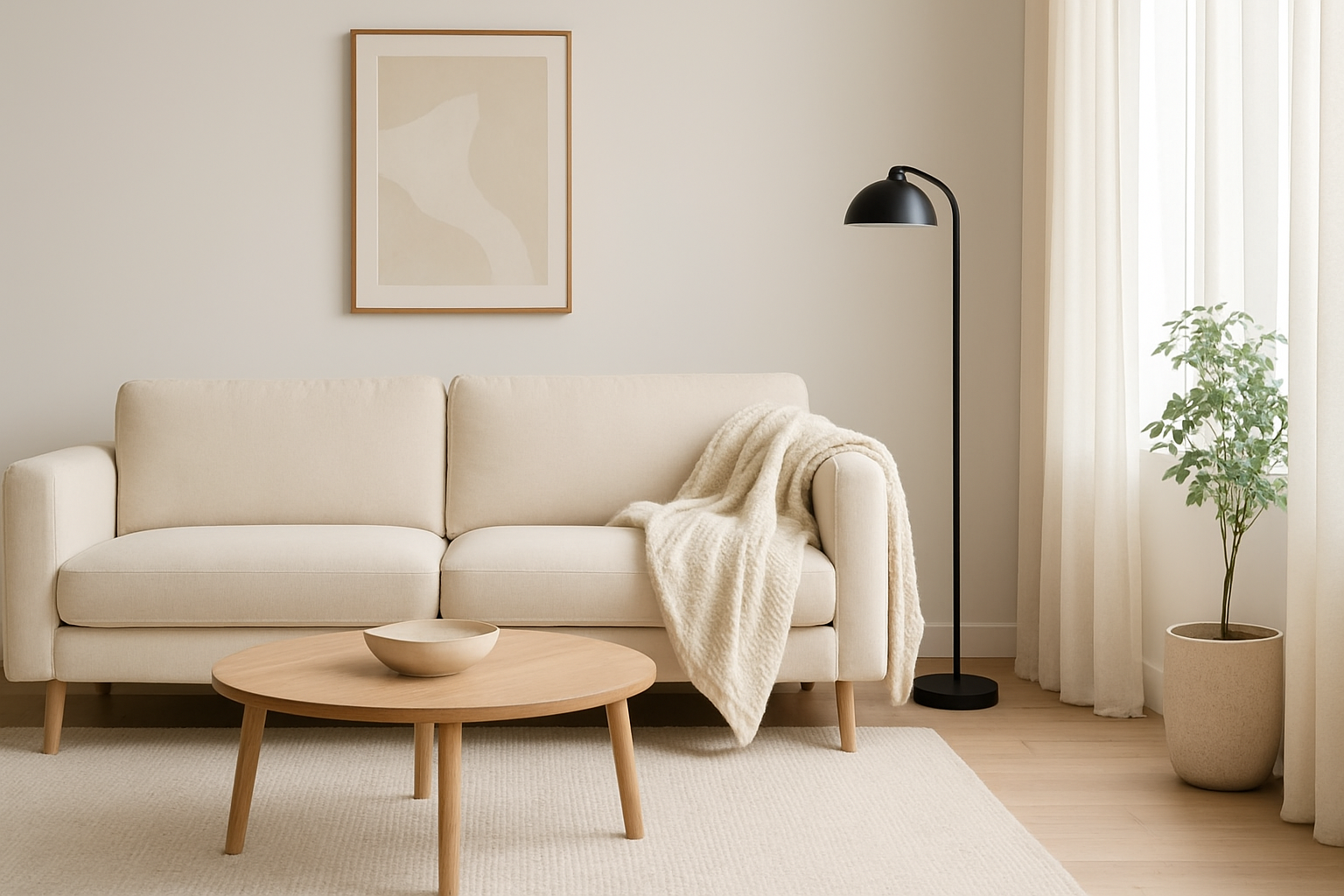
Styling Ideas for Different Homes
Small Apartments: Use multifunctional furniture like nesting tables and storage ottomans. Mirrors and light colors will create an illusion of space.
Family Homes: Focus on durability with a simple sectional sofa, neutral rugs, and plenty of storage to keep the room tidy while still welcoming.
Scandinavian Style: Add light wood, greenery, and soft textiles to keep the room bright, fresh, and cozy.
Modern Monochrome: A black-and-white minimalist living room feels bold and chic while keeping the clutter to a minimum.
Benefits of a Minimalist Living Room
Stress-Free Atmosphere: A clear space helps create a clear mind.
Easier to Maintain: Less clutter means less cleaning.
Timeless Appeal: Minimalist design never goes out of style.
Budget-Friendly: Investing in fewer, high-quality pieces saves money in the long run.
Final Thoughts
A minimalist living room is more than just a design choice—it’s a lifestyle that promotes peace, simplicity, and functionality. By focusing on essentials, embracing natural light, and incorporating cozy textures, you can create a space that is not only beautiful but also deeply relaxing.
Whether you prefer Scandinavian warmth, modern monochrome, or soft neutral tones, the minimalist living room style adapts easily to any home. Start small, declutter your space, and gradually transform your living area into a serene retreat where you’ll love spending time.
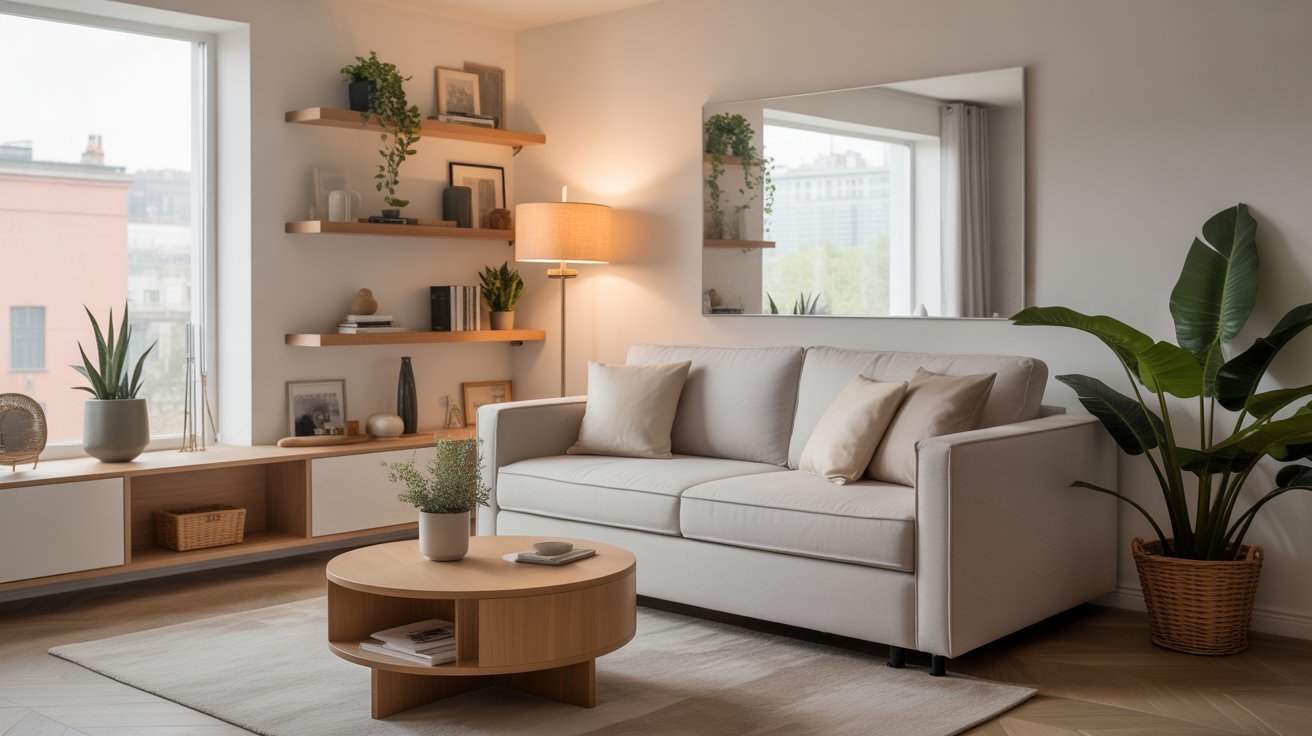
Smart Small Space Living Ideas to Transform Your Home
Living in a compact apartment or tiny house doesn’t mean you have to sacrifice comfort or style. In fact, with the right strategies, you can make the most of every corner and create a home that feels both spacious and inviting. Small space living is all about clever organization, multifunctional furniture, and thoughtful design choices that maximize functionality without clutter. Whether you’re in a studio, condo, or cozy home, these practical ideas will help you transform your compact space into a beautiful retreat.
1. Choose Multipurpose Furniture
One of the best ways to make small rooms more functional is by choosing multipurpose furniture. Think sofa beds, storage ottomans, nesting coffee tables, and fold-out desks. These pieces allow you to switch between functions easily without taking up extra room. For example, a bed with built-in drawers can double as a dresser, while a foldable dining table can act as a desk during the day.
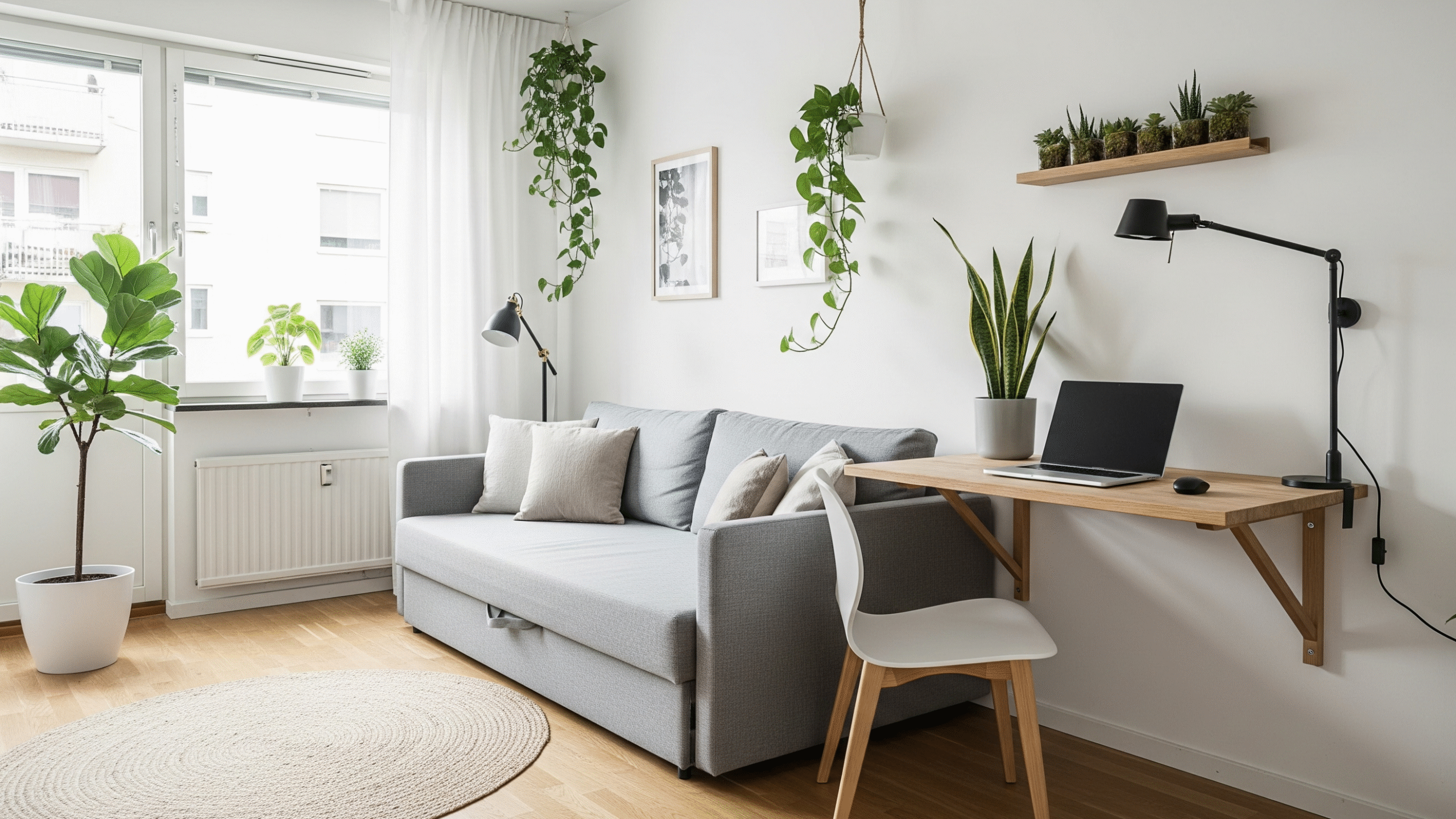
2. Embrace Vertical Storage
When floor space is limited, your walls become your best friend. Vertical storage such as floating shelves, tall bookcases, or wall-mounted cabinets can help you keep clutter at bay while also displaying your favorite décor. Adding hooks and pegboards in the kitchen, entryway, or bedroom is another smart way to save precious floor space while keeping items within reach.
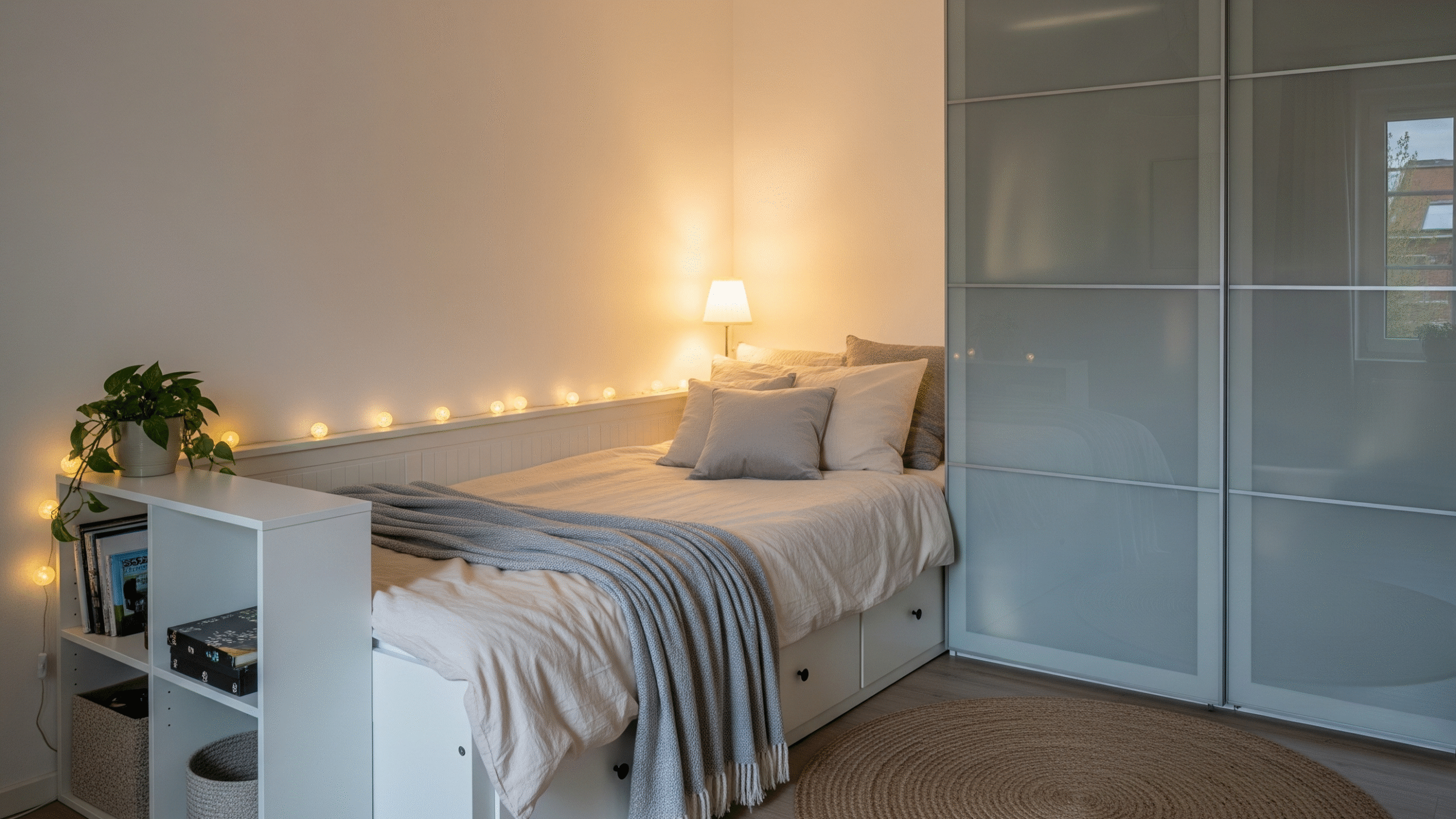
3. Use Light and Mirrors to Create Space
Lighting and mirrors can make a small home feel larger. Large mirrors placed opposite windows reflect natural light and visually double the size of the room. Use light, neutral colors on walls and furniture to make the space feel airy. Incorporating soft, layered lighting with floor lamps, wall sconces, and pendant lights can also add depth and warmth.
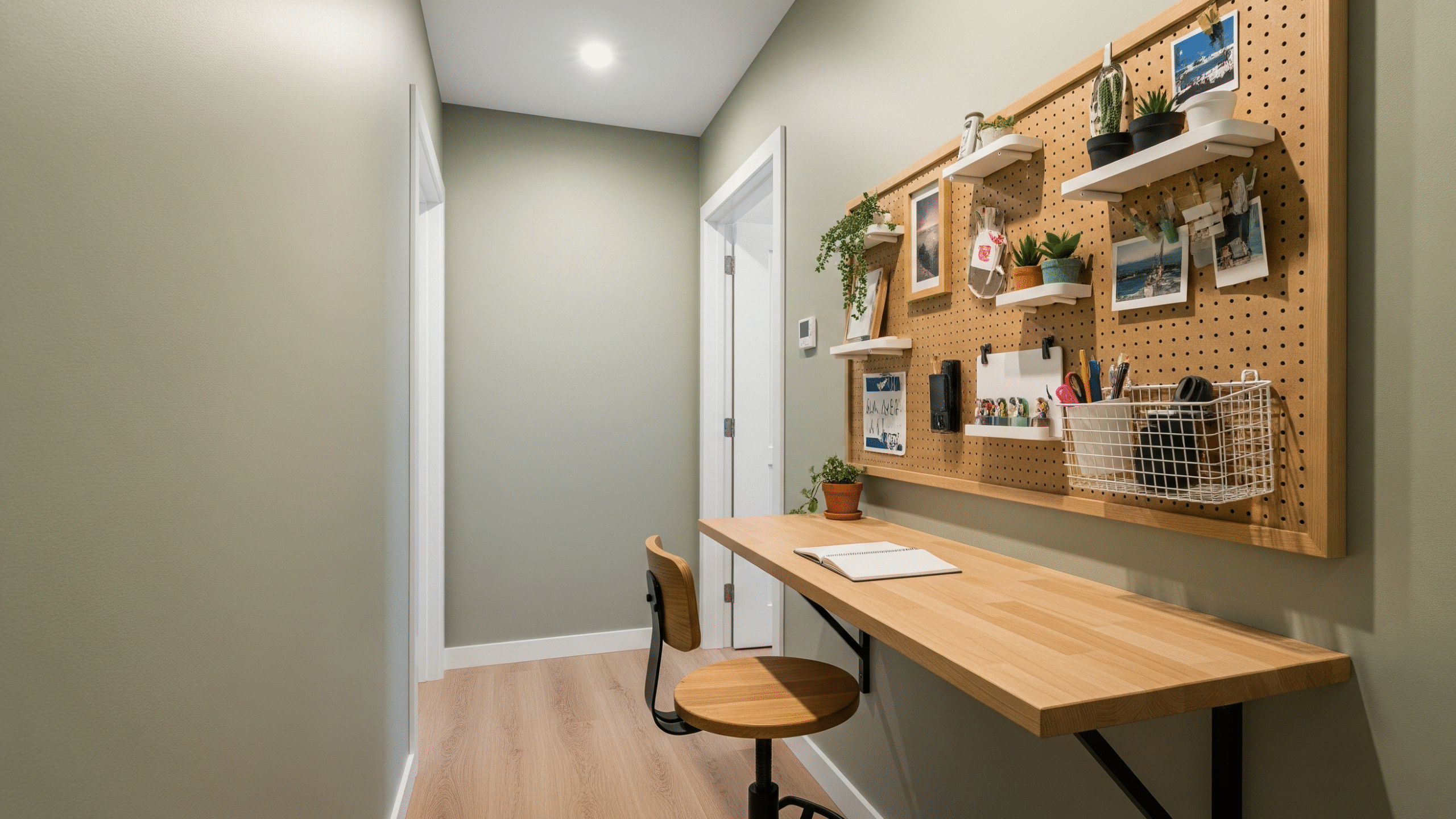
4. Maximize Every Nook and Corner
Small spaces often come with tricky layouts or awkward corners, but these can be transformed into functional zones. Turn a narrow hallway into a mini office with a wall-mounted desk, or use the area under your stairs for storage. Window seats with hidden compartments are another brilliant way to add both seating and storage.
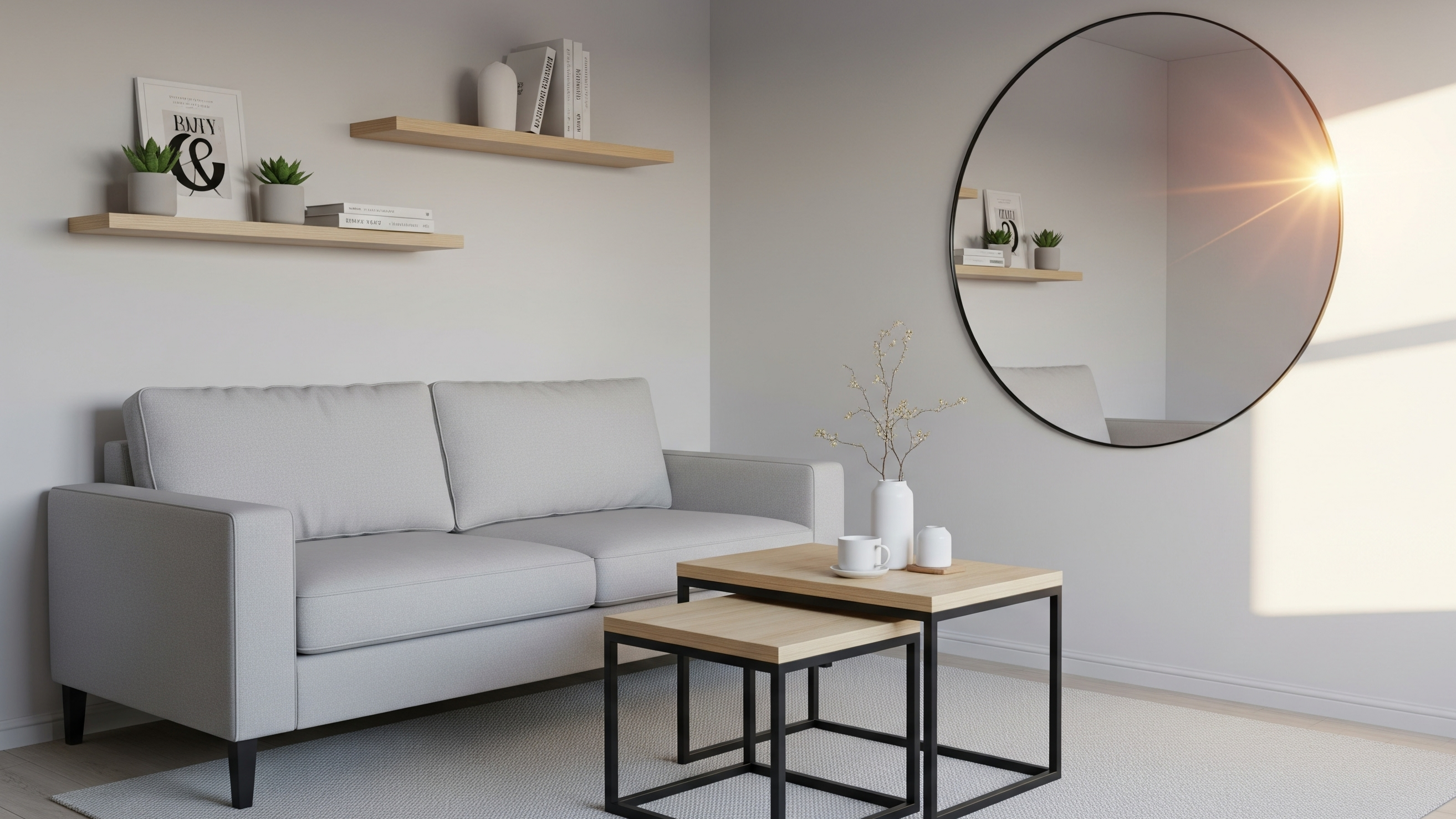
5. Keep Décor Minimal and Functional
Clutter is the enemy of small space living. Instead of filling your home with unnecessary décor, focus on functional accents that also serve a purpose. For example, woven baskets add warmth while doubling as storage, and decorative wall hooks can hold bags, hats, or coats. A “less is more” approach will make your home feel cozy yet uncluttered.

6. Create Defined Zones in Open Layouts
If you’re living in a studio or open-plan home, dividing your space into zones helps maintain order. Use area rugs, bookshelves, or folding screens to separate the living, sleeping, and dining areas. Even small distinctions like placing a tall plant between the sofa and bed can make the space feel more organized and functional.
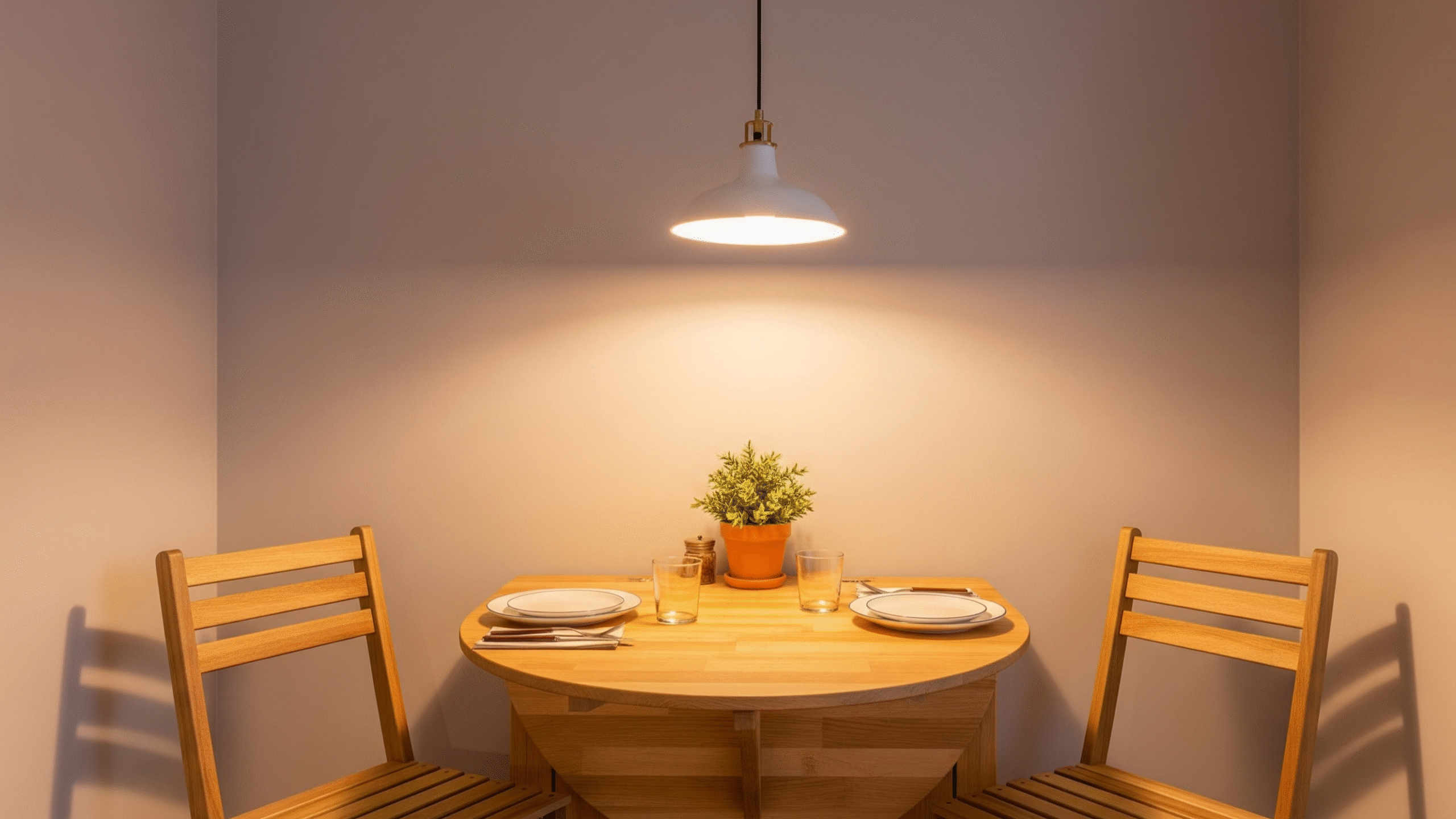
7. Optimize the Kitchen for Efficiency
Small kitchens can be stylish and practical with a few adjustments. Use magnetic strips for knives, add open shelves for frequently used dishes, and install a foldable breakfast bar to save space. Slim appliances designed for compact living can also make a big difference, giving you all the functionality you need without overcrowding the room.
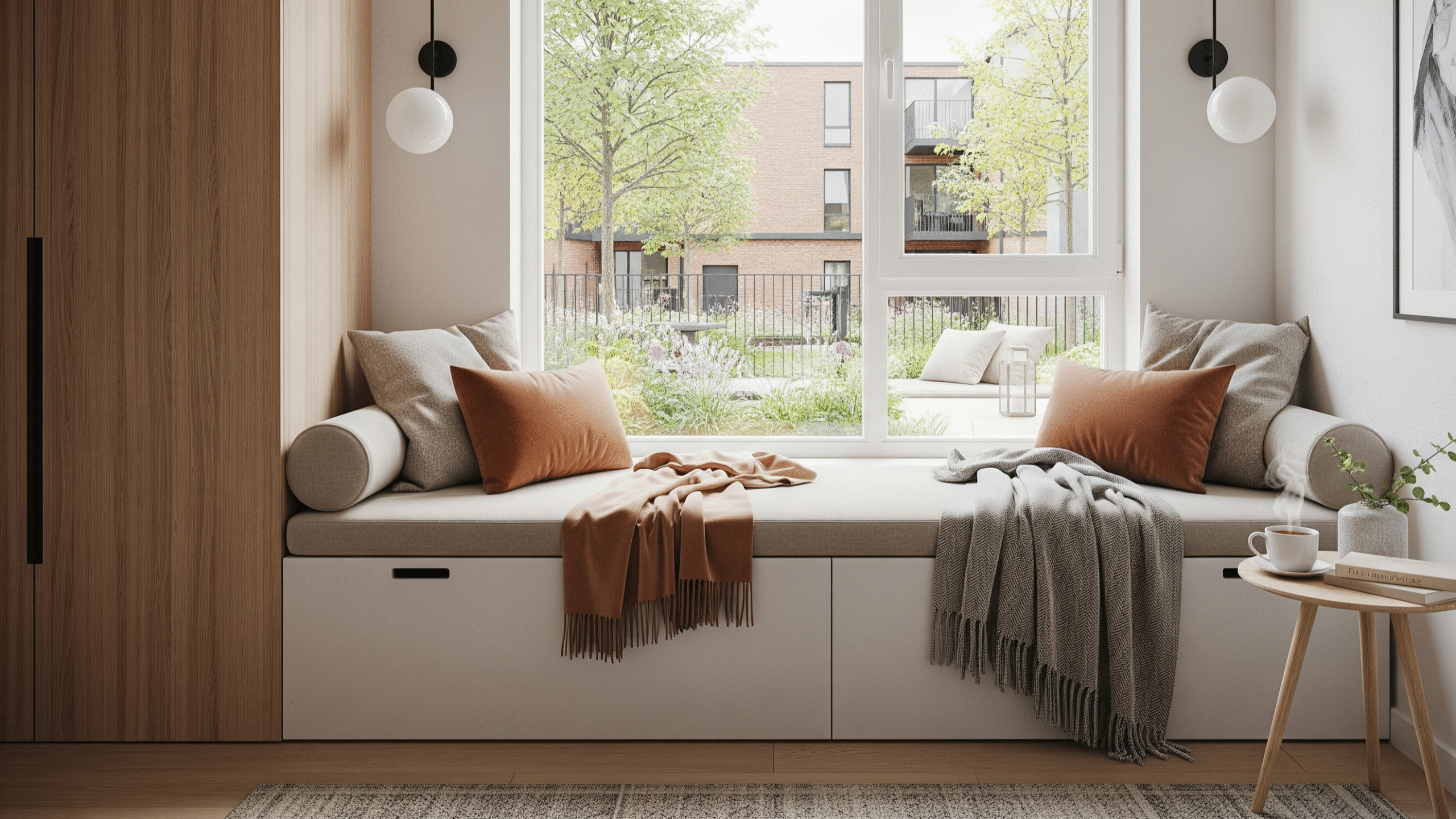
8. Bring the Outdoors In
Plants are a wonderful way to add freshness and life to a small home. Choose hanging planters, wall-mounted pots, or small indoor trees that won’t take up much floor space. Greenery not only improves air quality but also makes compact spaces feel brighter and more welcoming.
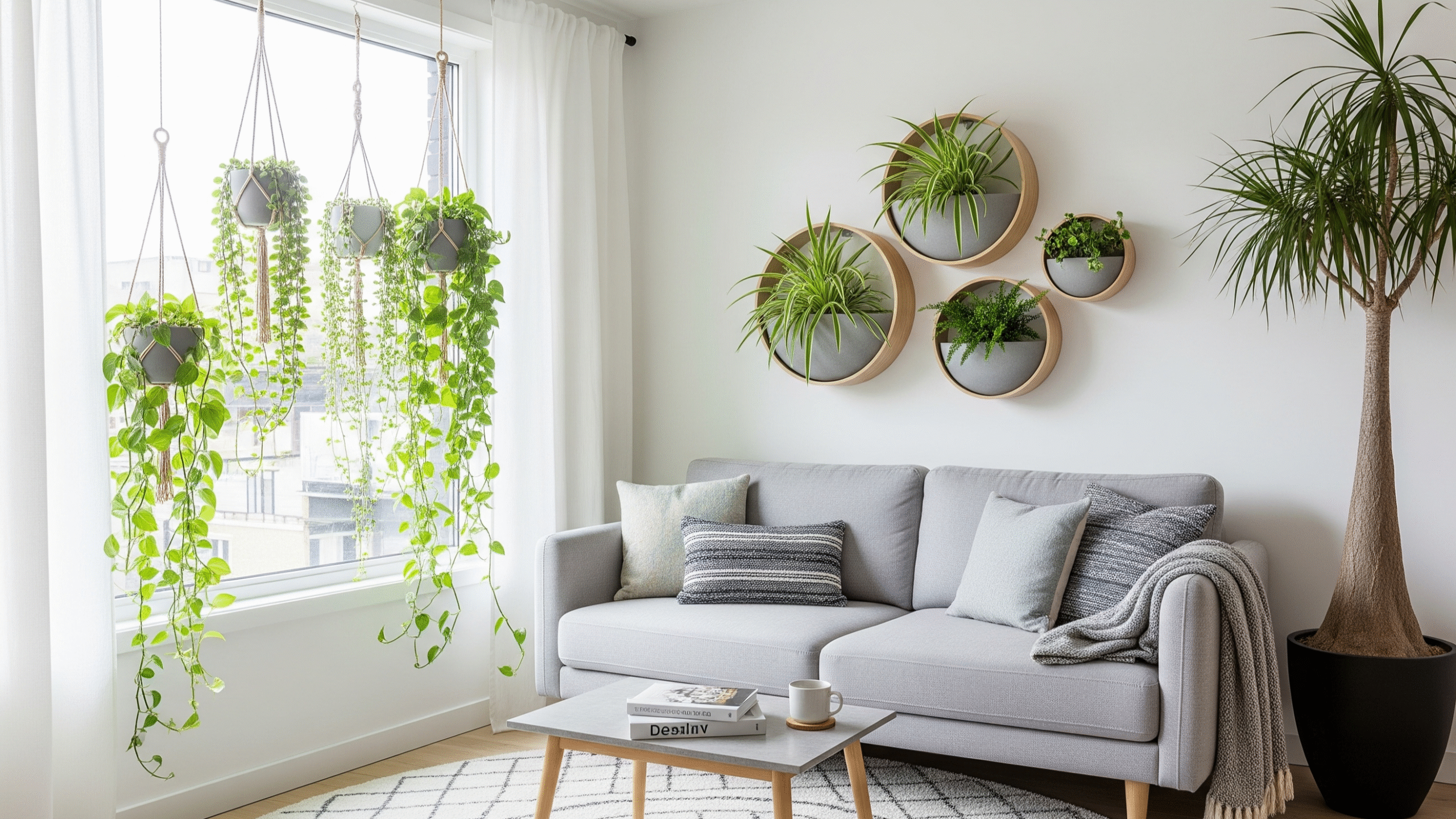
9. Stay Organized with Hidden Storage
The secret to thriving in small space living is staying organized. Hidden storage solutions—like ottomans with lids, beds with drawers, or benches with compartments—help you tuck away clutter while maintaining a clean, stylish look.
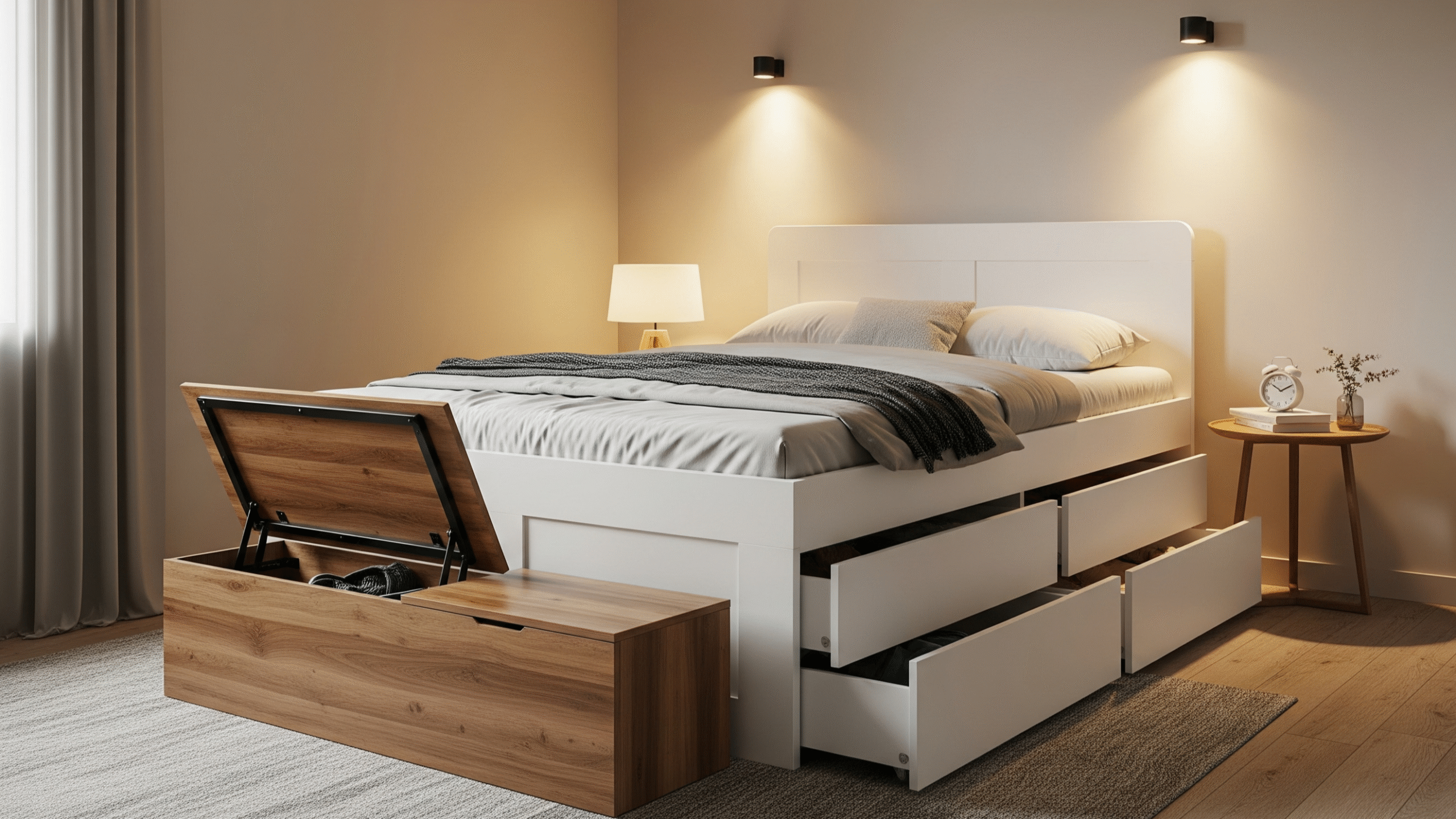
Final Thoughts
With the right strategies, small homes can be just as functional and beautiful as larger ones. By combining smart furniture choices, creative storage, and minimal yet thoughtful décor, you can transform even the tiniest apartment into a cozy and stylish haven. Remember, small space living isn’t about limiting yourself—it’s about living smarter, simpler, and more intentionally.
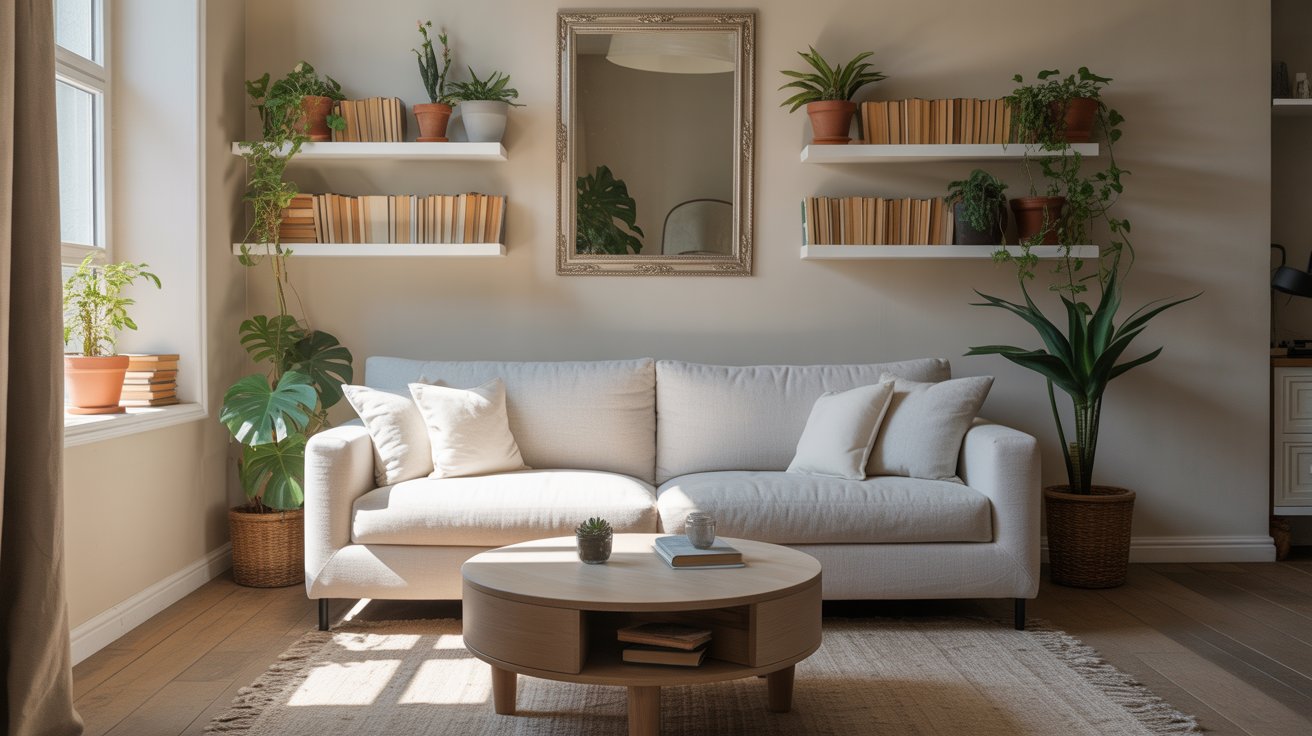
Small Living Room Ideas to Maximize Style and Space
When it comes to home design, small living rooms can feel tricky to decorate. Limited square footage often leads to clutter, awkward layouts, and a cramped atmosphere. But with a few smart choices, you can transform even the tiniest living area into a stylish and functional retreat. In this article, we’ll share the best small living room ideas that help you maximize space without sacrificing comfort or personality.
1. Choose the Right Furniture
The furniture you select plays the most important role in shaping your small living room. Avoid oversized pieces that dominate the space. Instead, opt for slim-profile sofas, armchairs with exposed legs, or modular sectionals that can fit snugly against a wall. Multipurpose furniture like sofa beds, nesting tables, and ottomans with hidden storage are excellent for saving space.
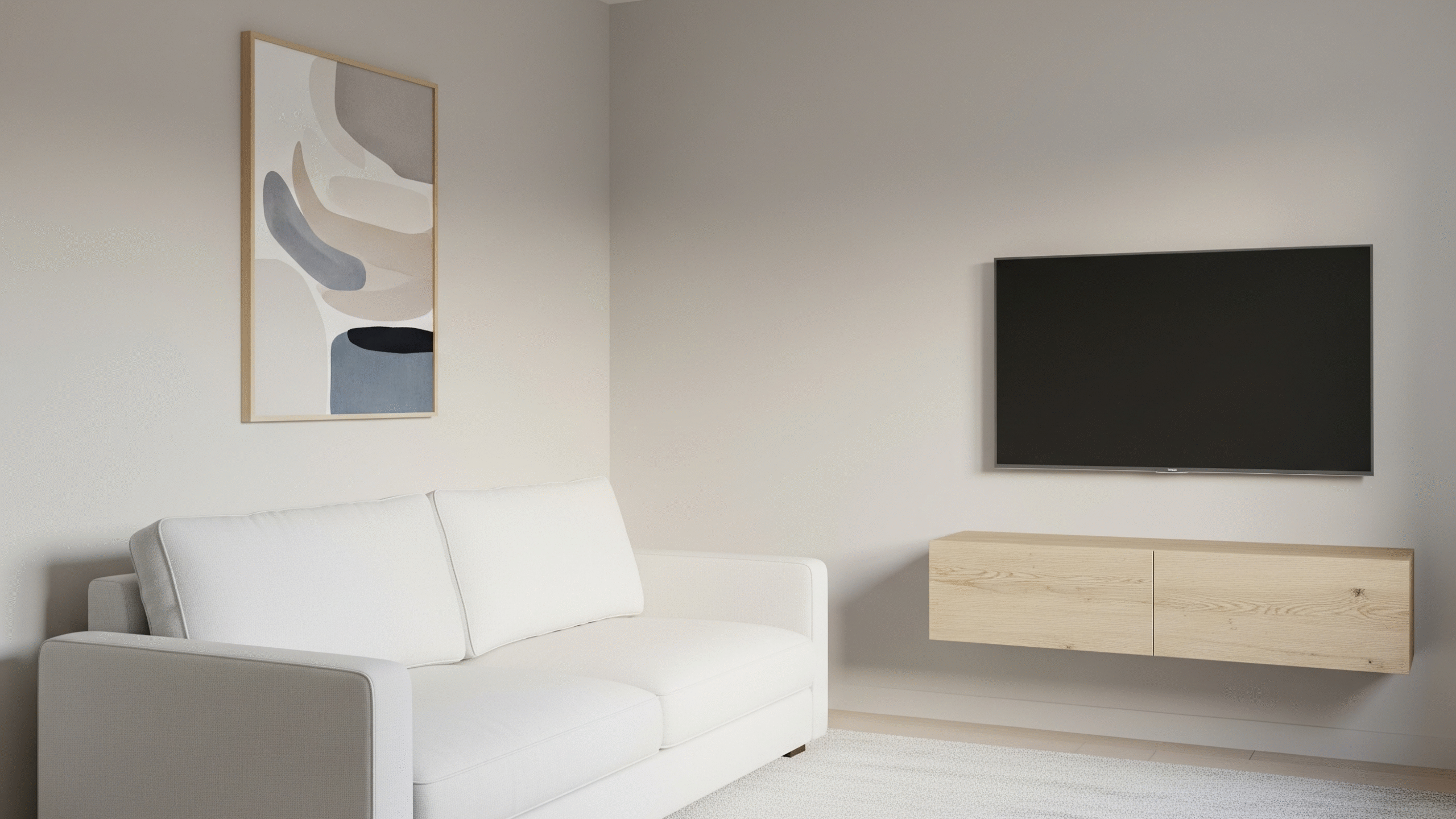
2. Embrace Minimalist Design
Clutter can quickly overwhelm a small living room. That’s why minimalist design works beautifully in compact spaces. Stick to neutral tones like beige, gray, and white, and add warmth with natural textures such as wood, rattan, or linen. Keep decorations simple—a single piece of wall art, a few well-placed plants, or a textured rug can make the space feel balanced without being busy.
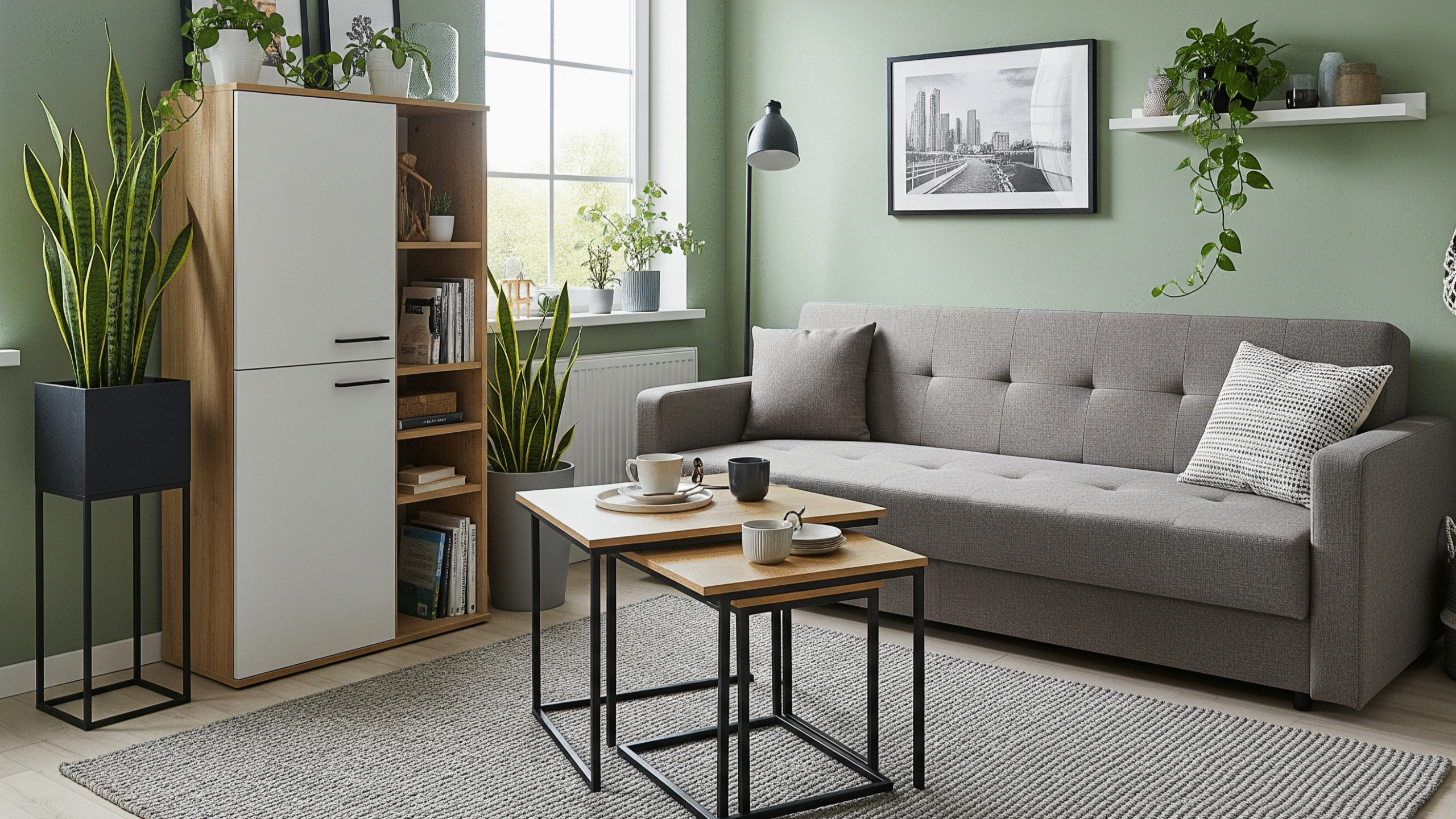
3. Use Vertical Space Wisely
When floor space is limited, vertical space becomes your best friend. Install floating shelves for books and plants, hang decorative wall baskets, or use tall storage cabinets that draw the eye upward. Wall-mounted TVs and media consoles are another great way to keep the floor area clear and create a sense of openness.
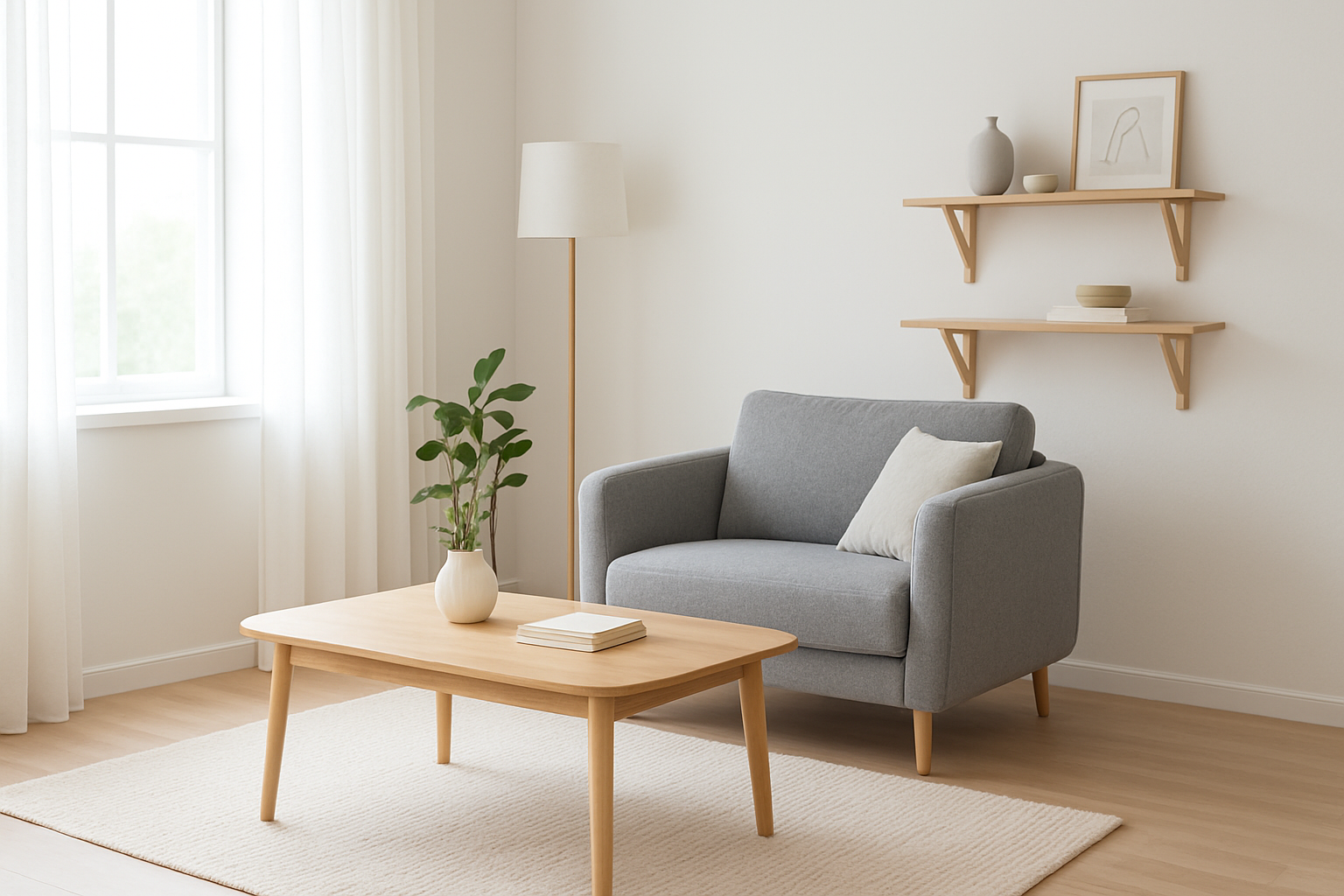
4. Create the Illusion of Space with Light
Lighting has a powerful effect on how large or small a room feels. Natural light is always best, so avoid heavy drapes that block windows. Instead, choose sheer curtains that let the sunlight pour in. Mirrors are also an excellent tool—they reflect light and create the illusion of depth, instantly making your small living room feel bigger.
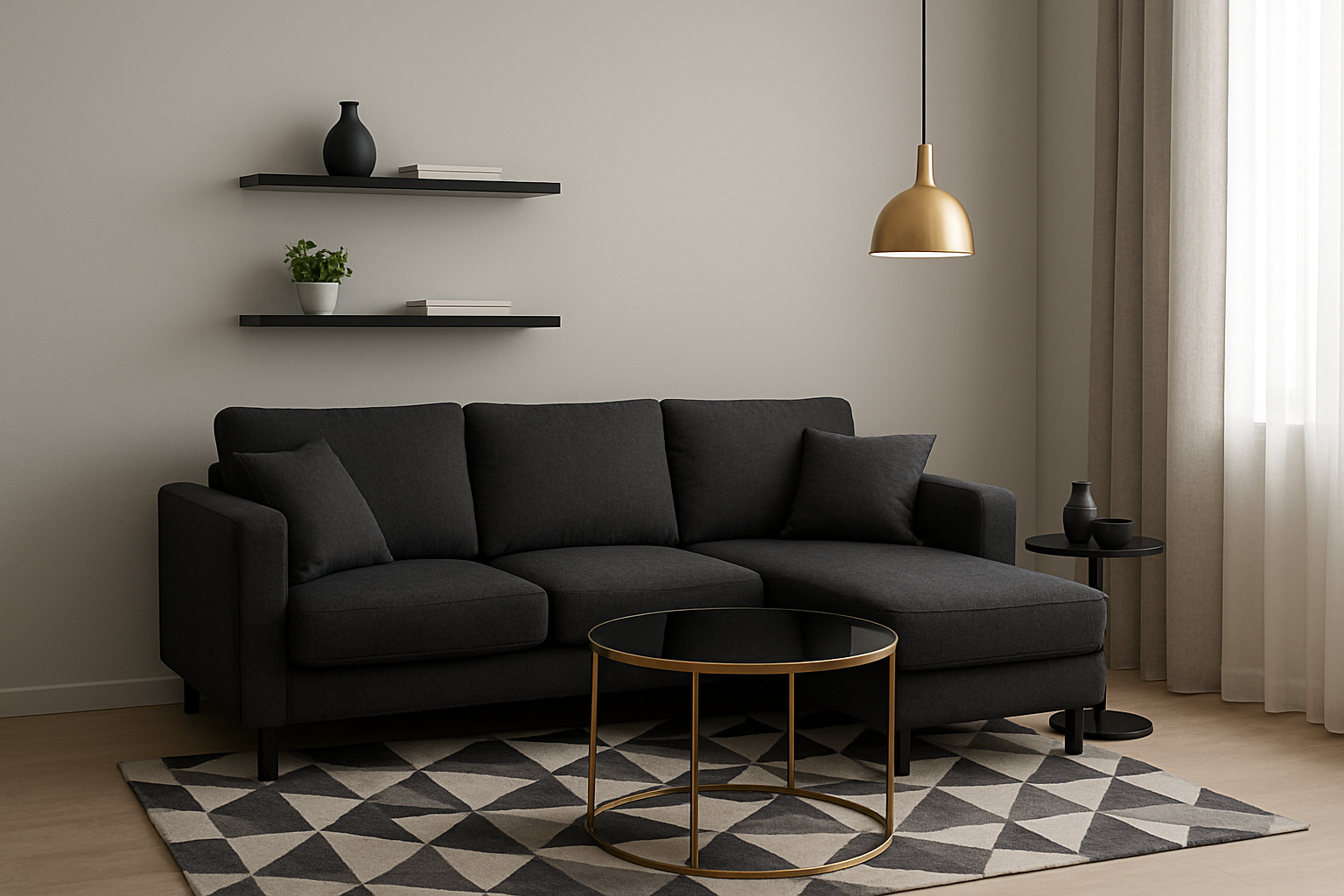
5. Play with Colors and Textures
While neutral palettes keep things airy, adding pops of color through pillows, throws, or accent chairs can bring your living room to life. Stick to lighter shades for the walls and larger furniture pieces to keep the room from feeling heavy. Textures such as knitted throws, patterned rugs, or velvet cushions add coziness without overwhelming the space.
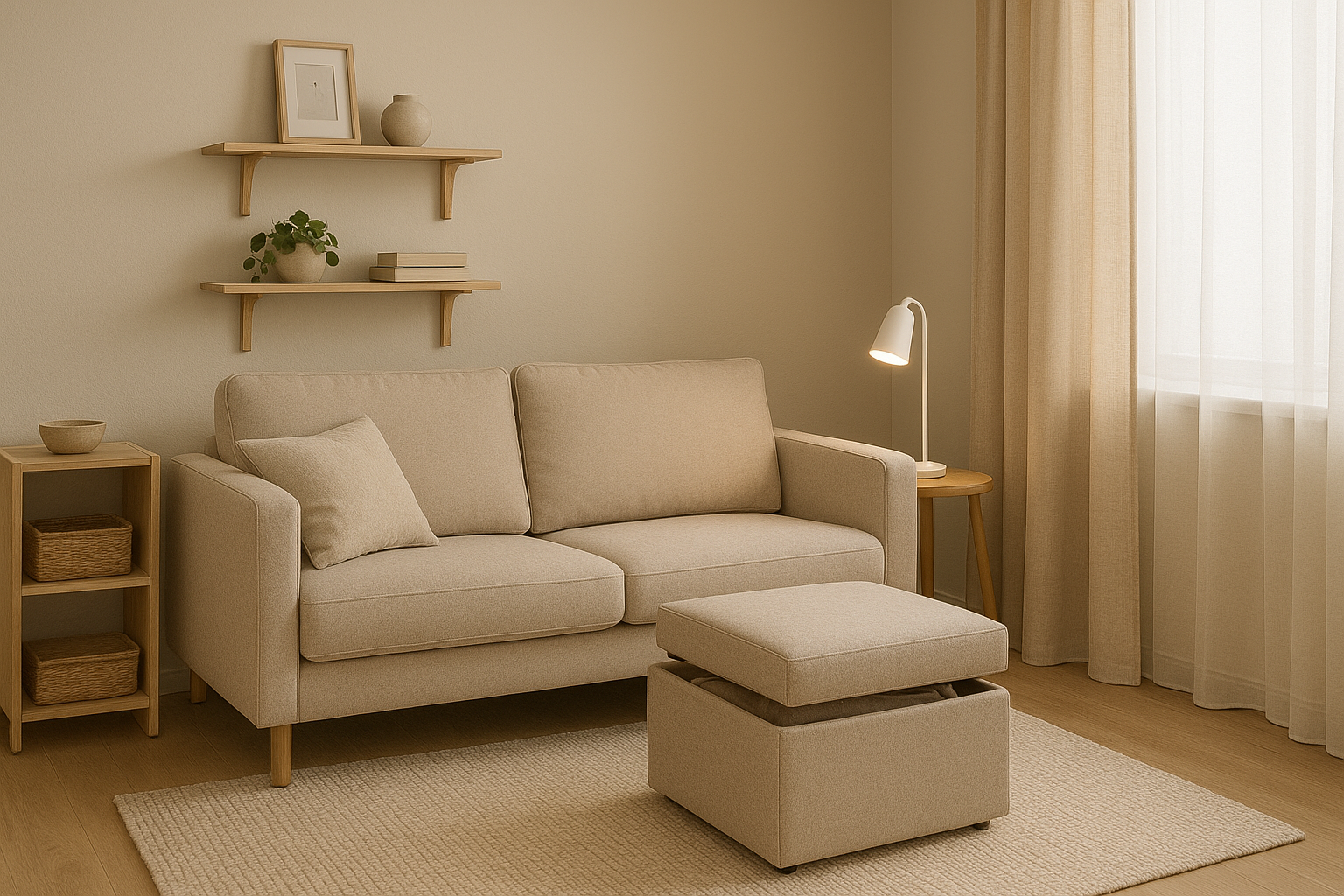
6. Go Bright and Airy
Scandinavian-inspired design is perfect for compact living rooms. Think light wood tones, white walls, and clean lines. This style emphasizes openness and simplicity, making even small areas look fresh and airy. Add indoor plants to introduce a natural touch that softens the overall look.
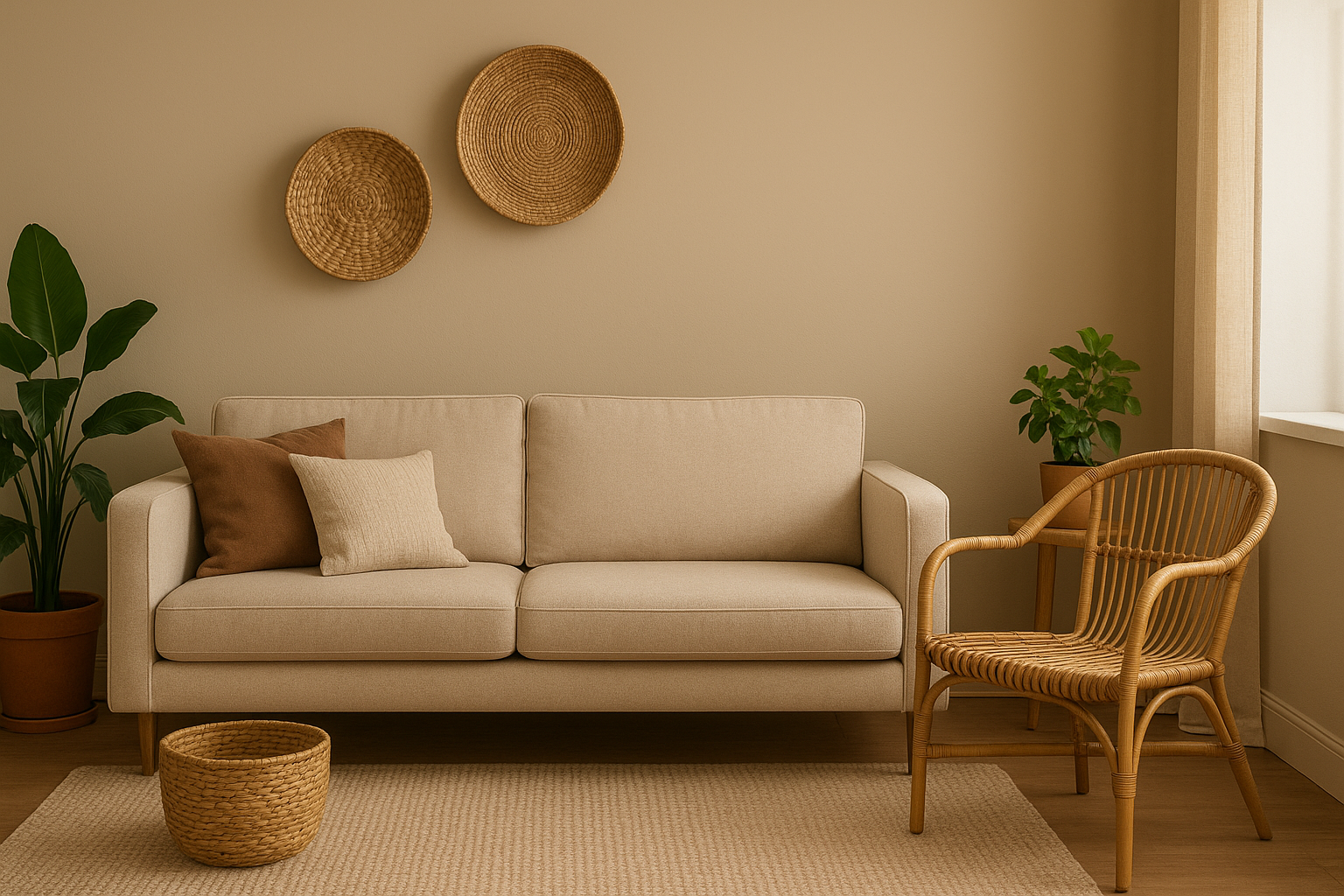
7. Don’t Forget the Personal Touch
Even the most practical design needs personality. Display a few meaningful decor pieces, such as framed family photos, unique art, or travel souvenirs. Just be mindful not to overcrowd surfaces. A small space works best when every item has both style and purpose.
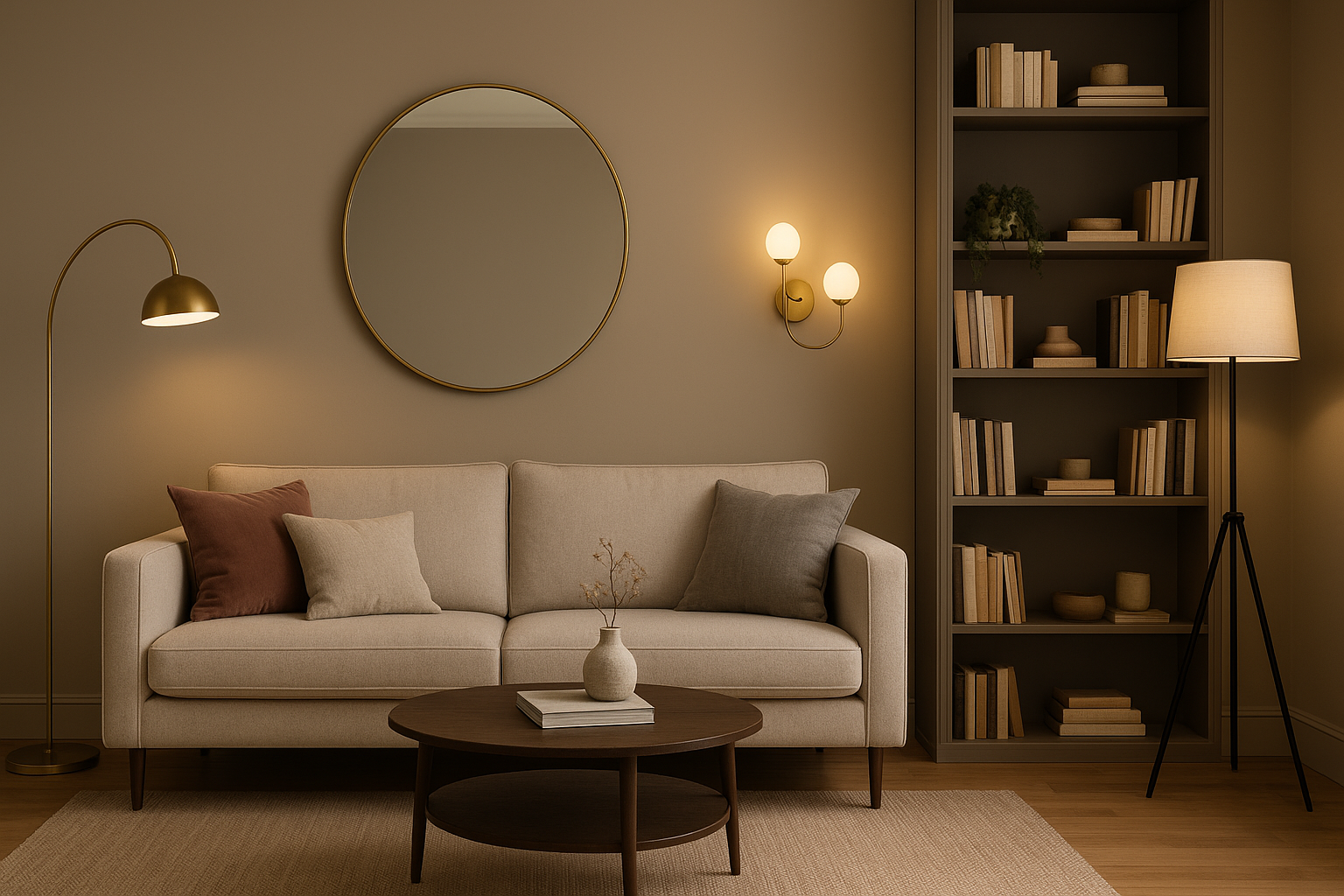
Final Thoughts
With thoughtful planning and creativity, small living rooms can be just as beautiful and inviting as larger spaces. From choosing the right furniture to maximizing natural light, these small living room ideas will help you create a home that feels cozy, stylish, and uniquely yours. Instead of feeling limited by size, embrace the challenge—sometimes the smallest rooms offer the biggest design opportunities.
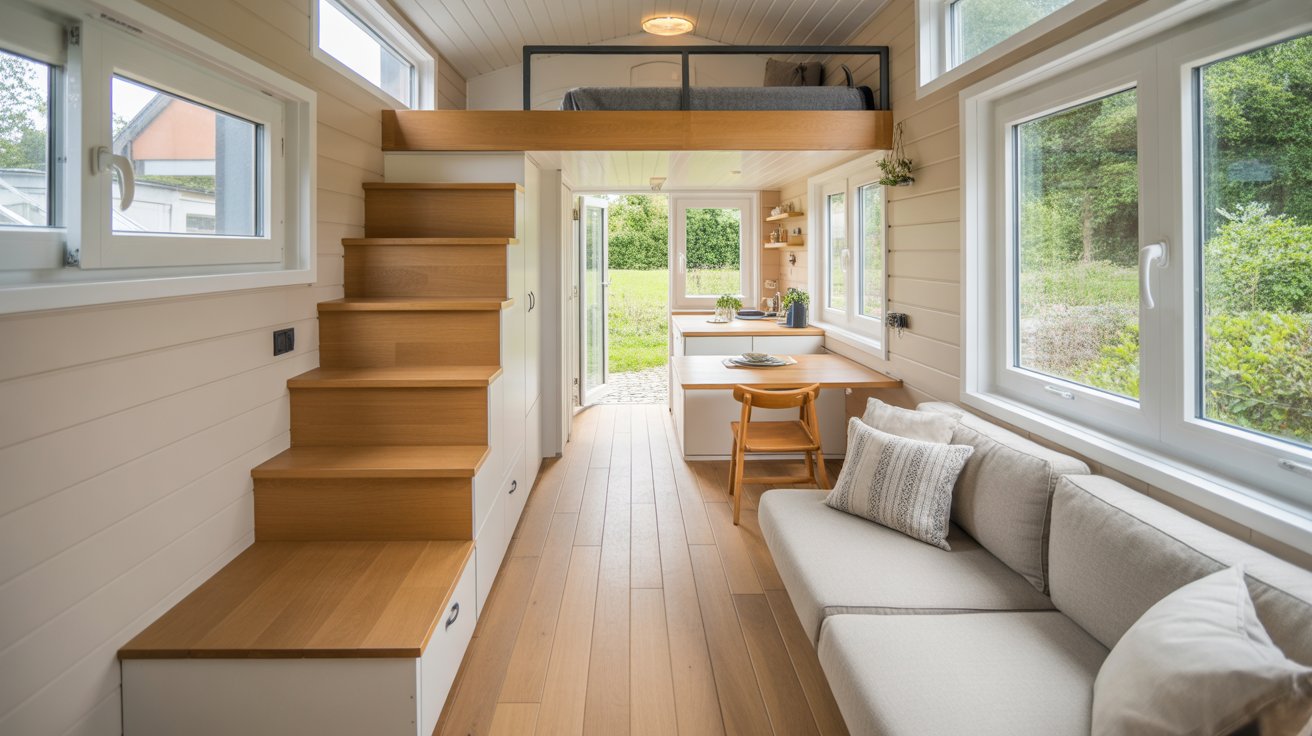
Space-Saving Tiny House Ideas You’ll Love
If you’ve ever dreamed of living in a home where every corner has a purpose and nothing feels wasted, tiny house living might be your perfect match. In these compact homes, smart design is everything and that’s where space-saving tiny house ideas come in. Whether you’re downsizing, building a weekend getaway, or simply wanting to live more sustainably, using your space wisely ensures comfort without clutter.
1. Loft Beds for Maximum Floor Space
One of the best ways to free up valuable floor area in a tiny home is by going vertical. Loft beds are a game-changer — they provide a cozy sleeping area while freeing the space below for a living room, workspace, or storage. Adding built-in shelves or cabinets underneath further enhances functionality.
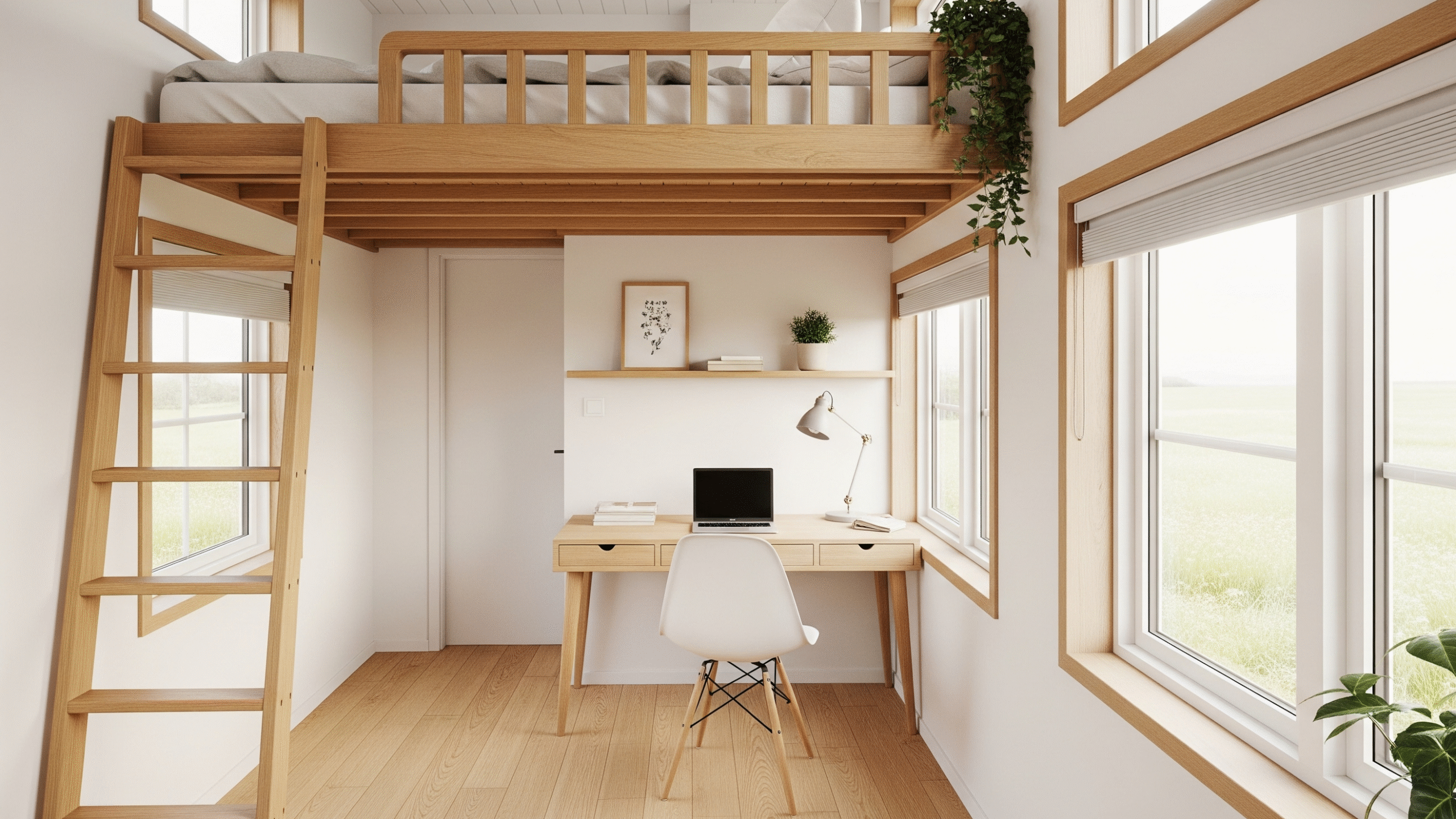
2. Multifunctional Furniture
In a tiny house, every piece of furniture should work harder. Think fold-out sofas that transform into beds, ottomans with hidden storage, or dining tables that double as work desks. Wall-mounted drop-leaf tables can fold away when not in use, creating an open and airy feel.
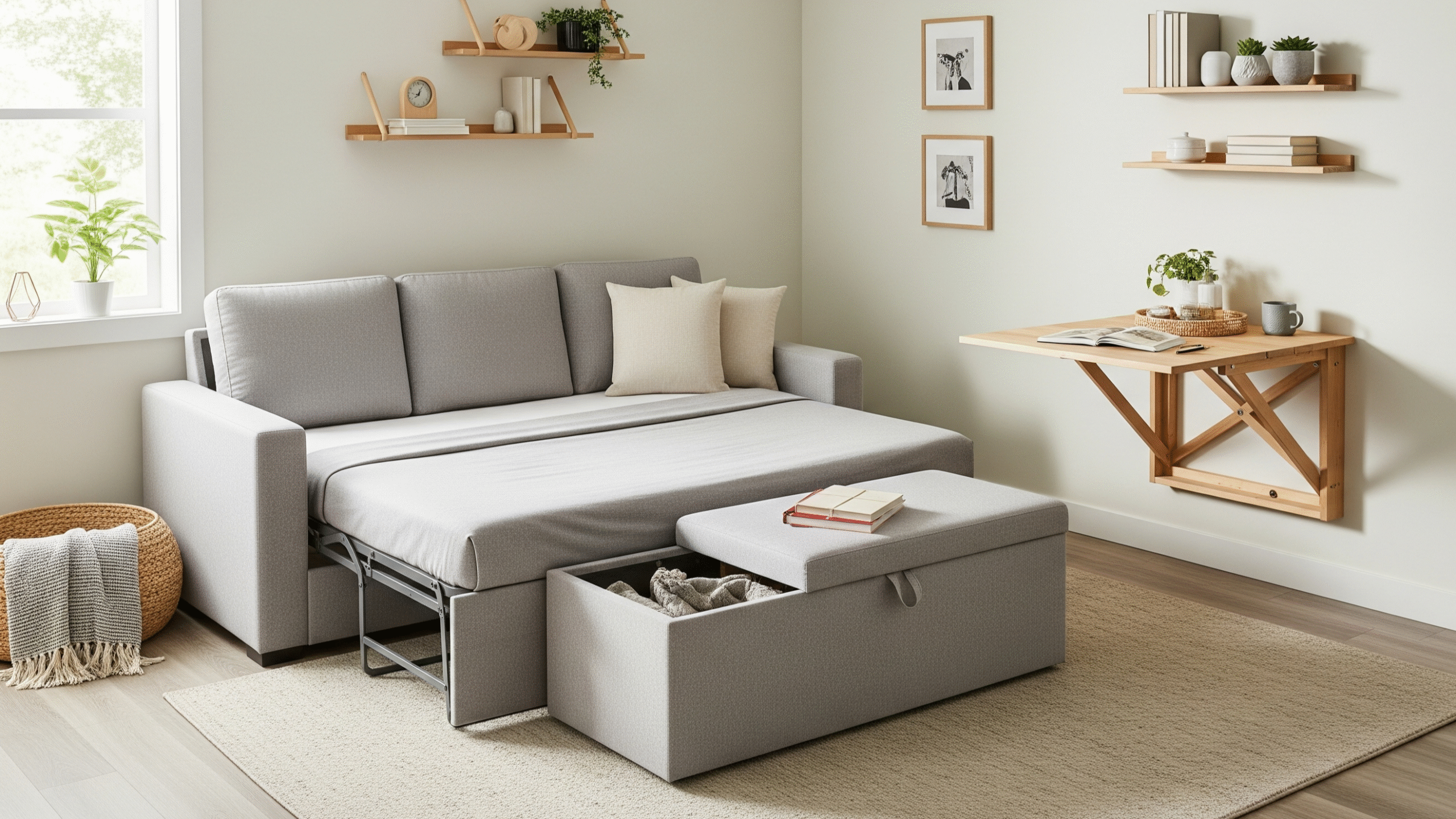
3. Built-In Storage Everywhere
When square footage is limited, storage should be integrated seamlessly into your design. Use under-bed drawers, staircase steps with pull-out compartments, and even hidden storage under window seats. Every nook can serve a purpose without disrupting your home’s style.
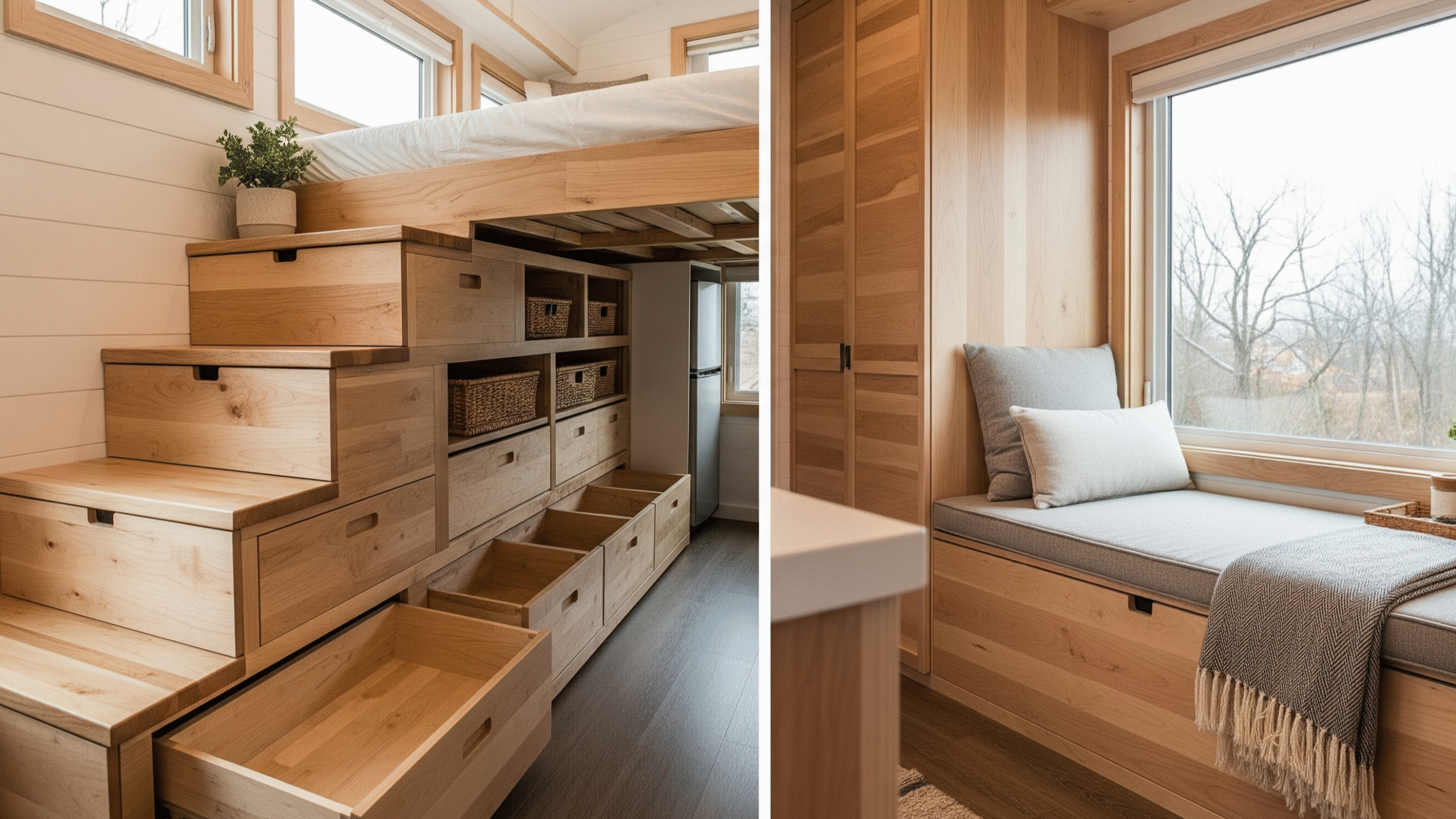
4. Sliding Doors Instead of Swinging Ones
Traditional doors require clearance space to open, which can be tricky in tight layouts. Sliding barn doors or pocket doors save space while adding a touch of charm. Glass-panel sliding doors can also help light flow between rooms, making the home feel bigger.
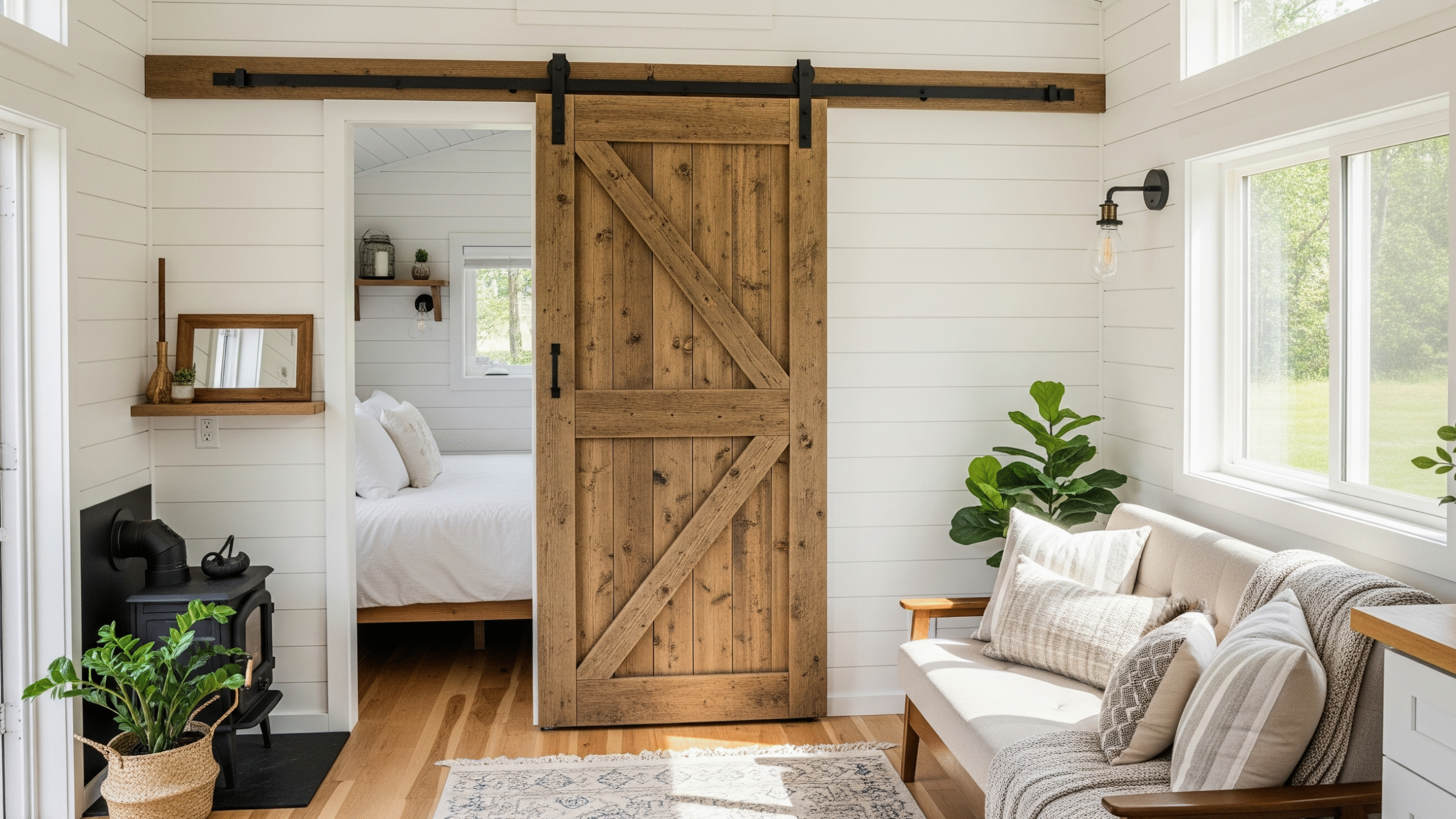
5. Vertical Wall Space Utilization
Don’t forget your walls! Tall shelving, hanging racks, and pegboards can keep items organized without eating up floor space. In kitchens, magnetic strips for knives, hanging pot racks, and open shelves add both storage and visual interest.
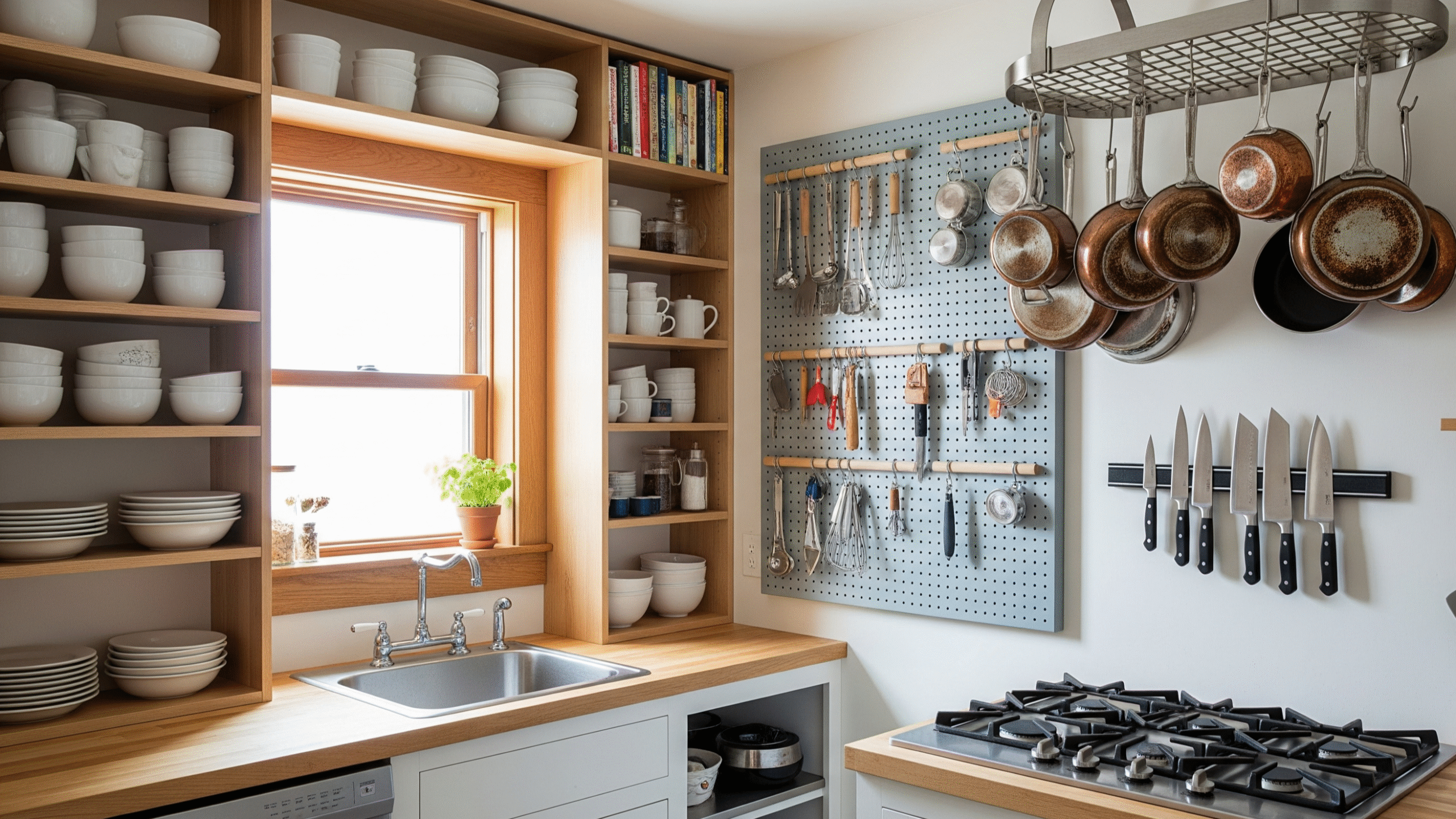
6. Light and Neutral Color Schemes
Light colors make small spaces feel bigger and brighter. White, beige, pale gray, and soft pastels reflect light, while natural wood accents keep the space warm and inviting. Pair these tones with large windows to maximize natural daylight.
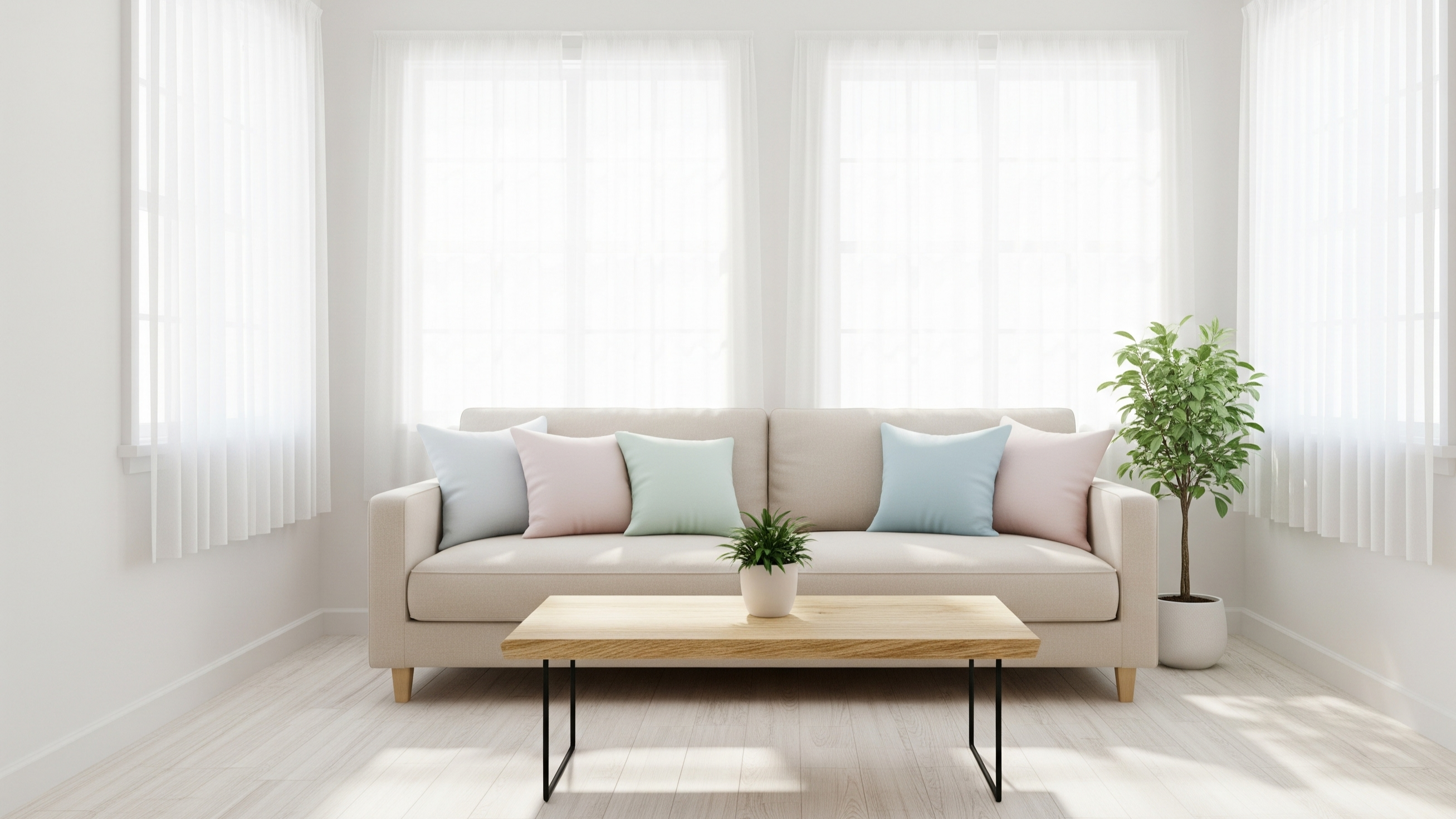
7. Foldable and Stackable Pieces
Foldable chairs, nesting tables, and collapsible laundry hampers are essentials in tiny living. They allow flexibility — you can bring them out when needed and tuck them away when you want more open space.
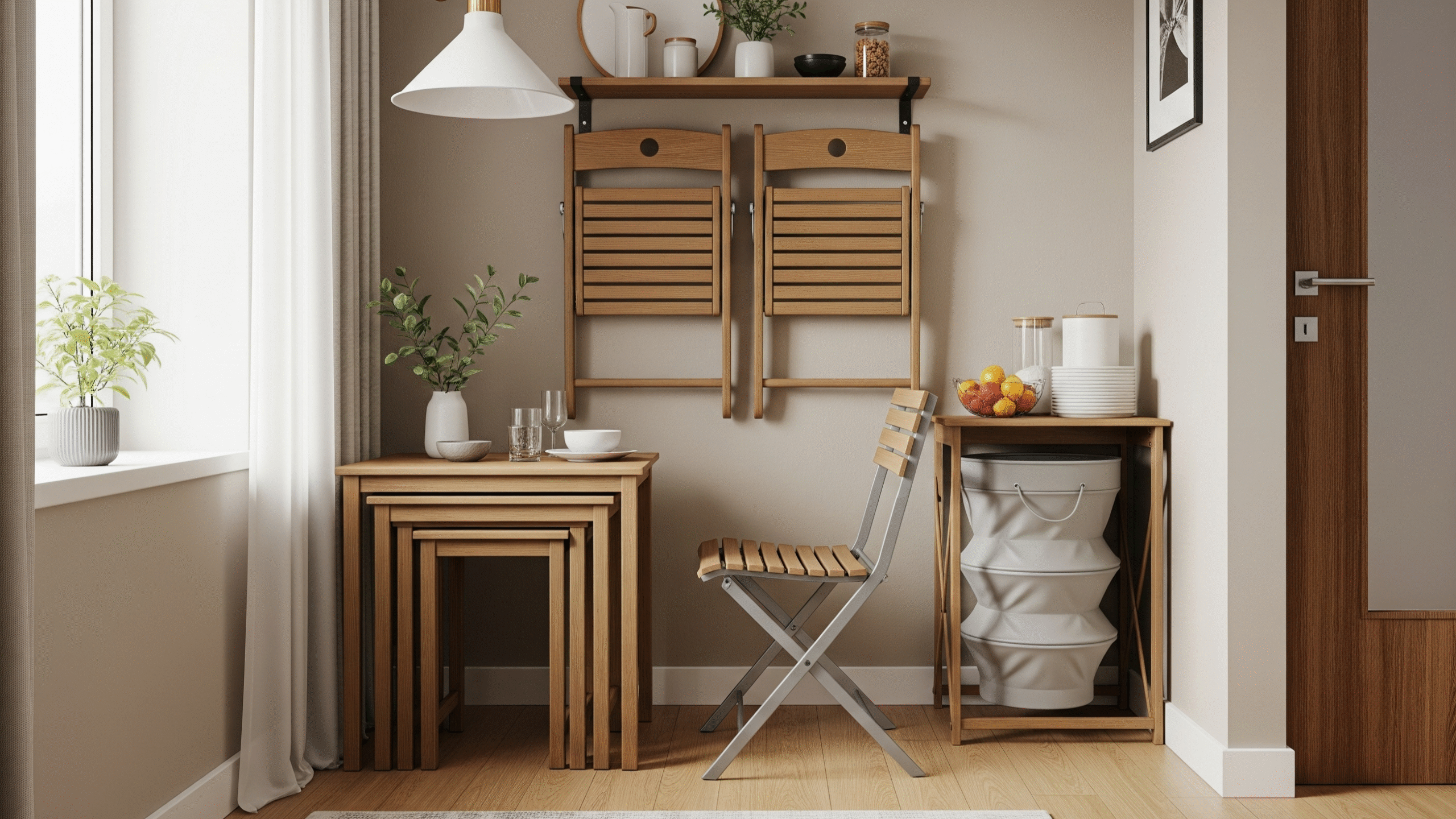
8. Outdoor Living Extensions
If your tiny home is on wheels or in a small lot, consider creating a deck or patio area. Sliding glass doors leading to an outdoor space make your home feel larger while providing an extra area for relaxing or entertaining.
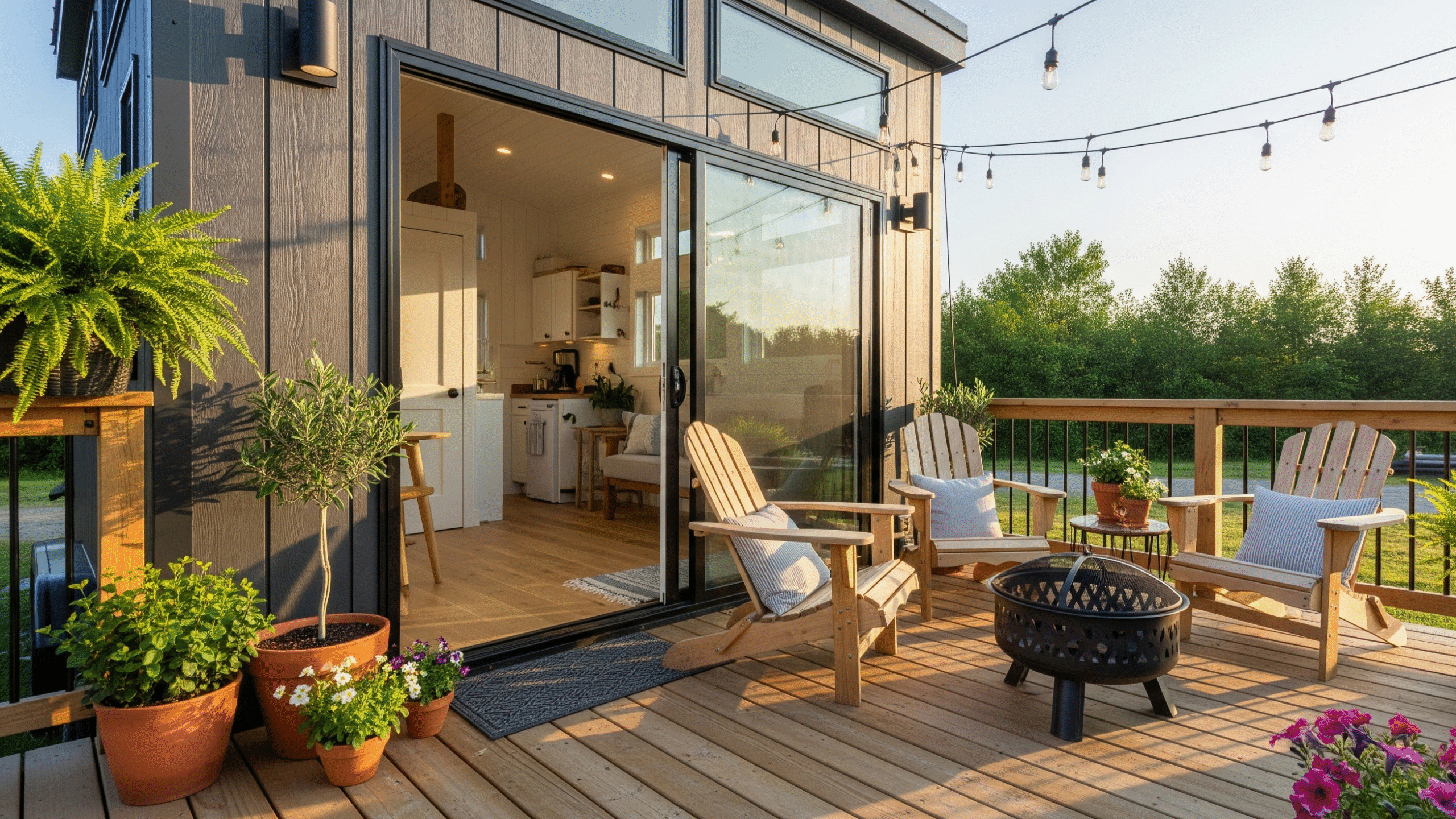
9. Clever Kitchen Layouts
Galley kitchens work beautifully in tiny homes because they maximize counter space while keeping everything within reach. Pull-out cutting boards, under-sink organizers, and overhead cabinets ensure every inch is functional.
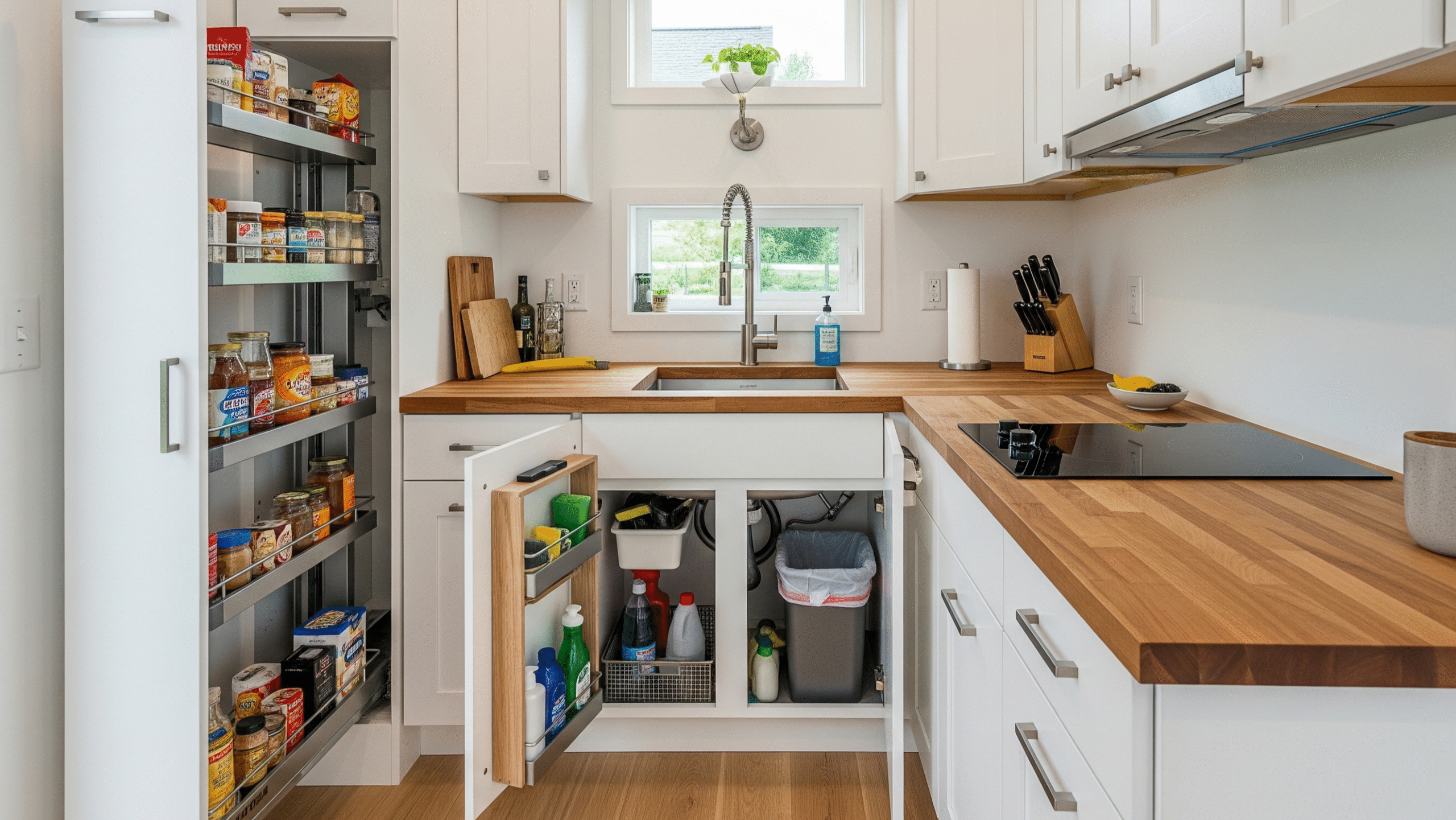
10. Minimalist Decor for Less Clutter
Less really is more when living tiny. Select a few high-quality pieces that you truly love instead of cramming in too many items. Minimalist decor keeps your space feeling open and peaceful, while also making cleaning easier.
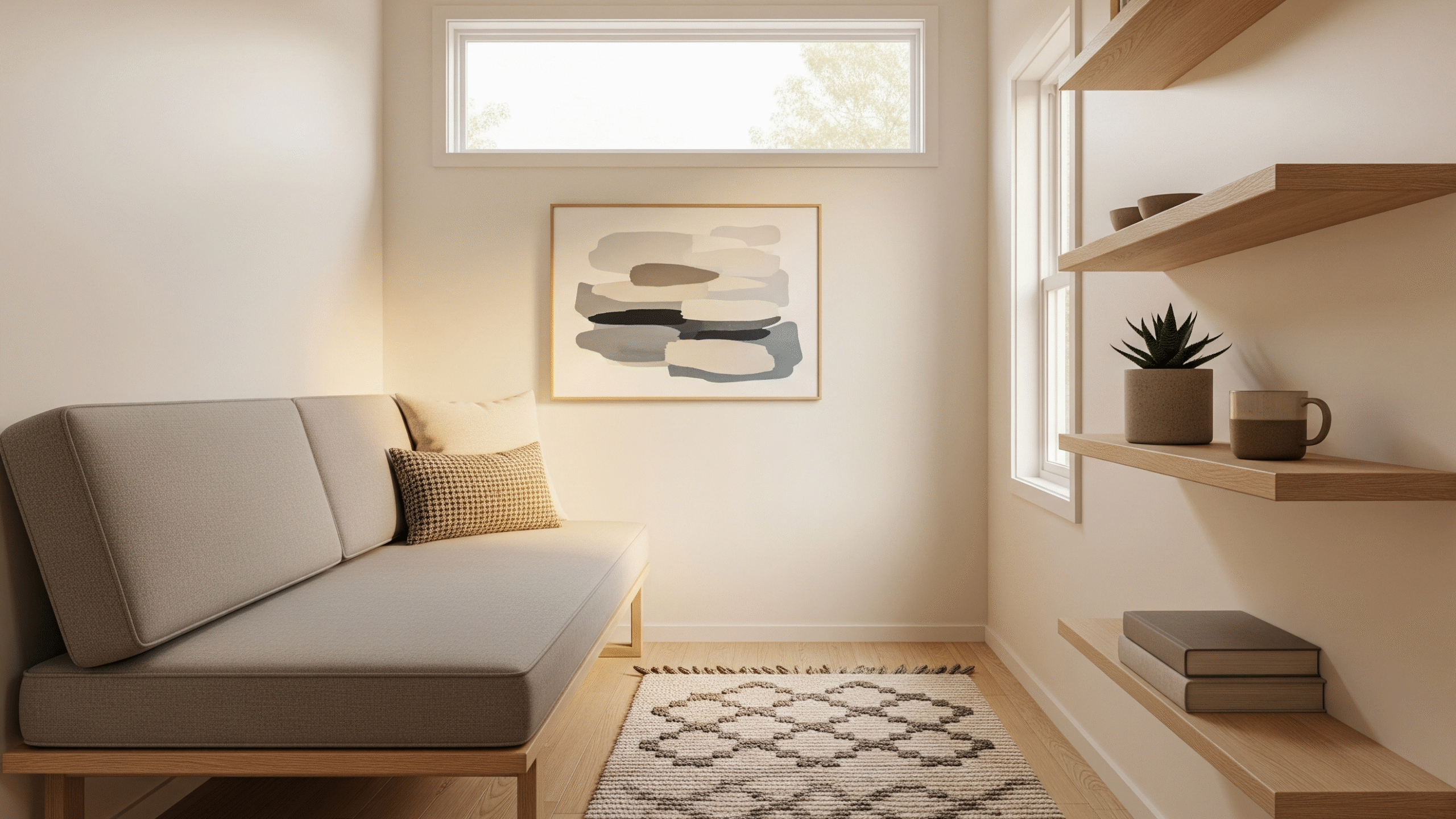
Why These Ideas Matter
Tiny homes are all about smart living — reducing waste, spending less on unnecessary things, and creating a lifestyle focused on experiences rather than possessions. Implementing space-saving tiny house ideas helps you maximize your comfort without compromising style.
By using vertical space, choosing multifunctional furniture, and designing with built-in storage, you create a home that feels bigger than it is. Even though your footprint is small, your life inside it can feel expansive, organized, and inspiring.
Whether you’re building a brand-new tiny home or remodeling an existing one, these design solutions can make a world of difference. With thoughtful planning, your home can be both beautiful and brilliantly efficient — proving that small spaces can offer big comfort.
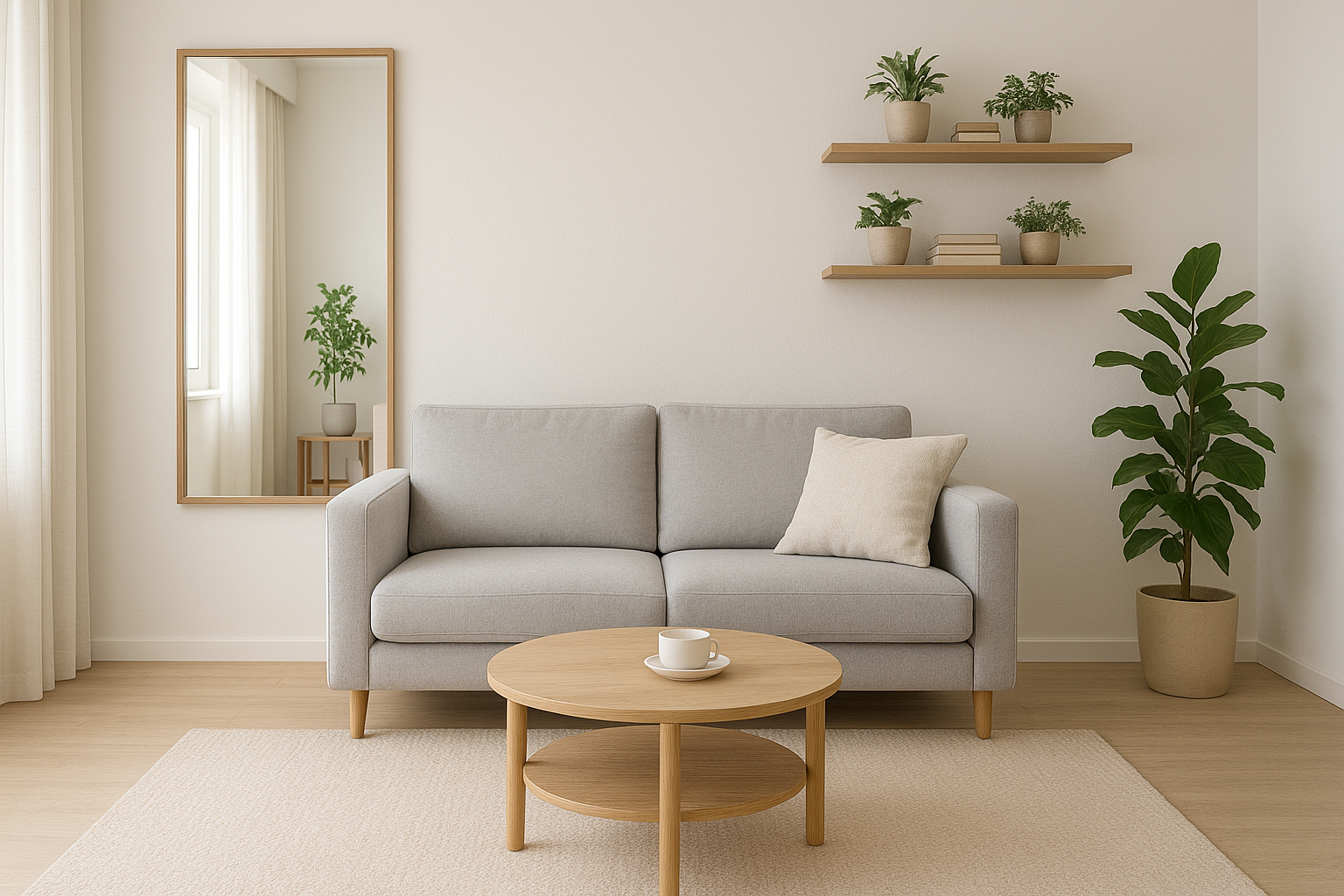
Small Living Room Ideas Apartment – Stylish Tips for Maximizing Your Space
Living in an apartment often means dealing with a smaller living room, but that doesn’t mean you have to sacrifice style, comfort, or functionality. With the right small living room ideas apartment designs, you can make your space feel bigger, brighter, and more inviting without breaking the bank. Whether you’re working with a studio, a one-bedroom, or a shared apartment, these creative tips will help you maximize your living area while keeping it cozy and aesthetically pleasing.
1. Choose Light and Neutral Colors
One of the easiest ways to make a small living room feel more spacious is by choosing a light color palette. Whites, beiges, light grays, and soft pastels reflect natural light, giving the illusion of a bigger room. If you want to add some depth, consider incorporating a few darker accent pieces like navy throw pillows or a charcoal rug. This contrast will make your space feel layered yet uncluttered.
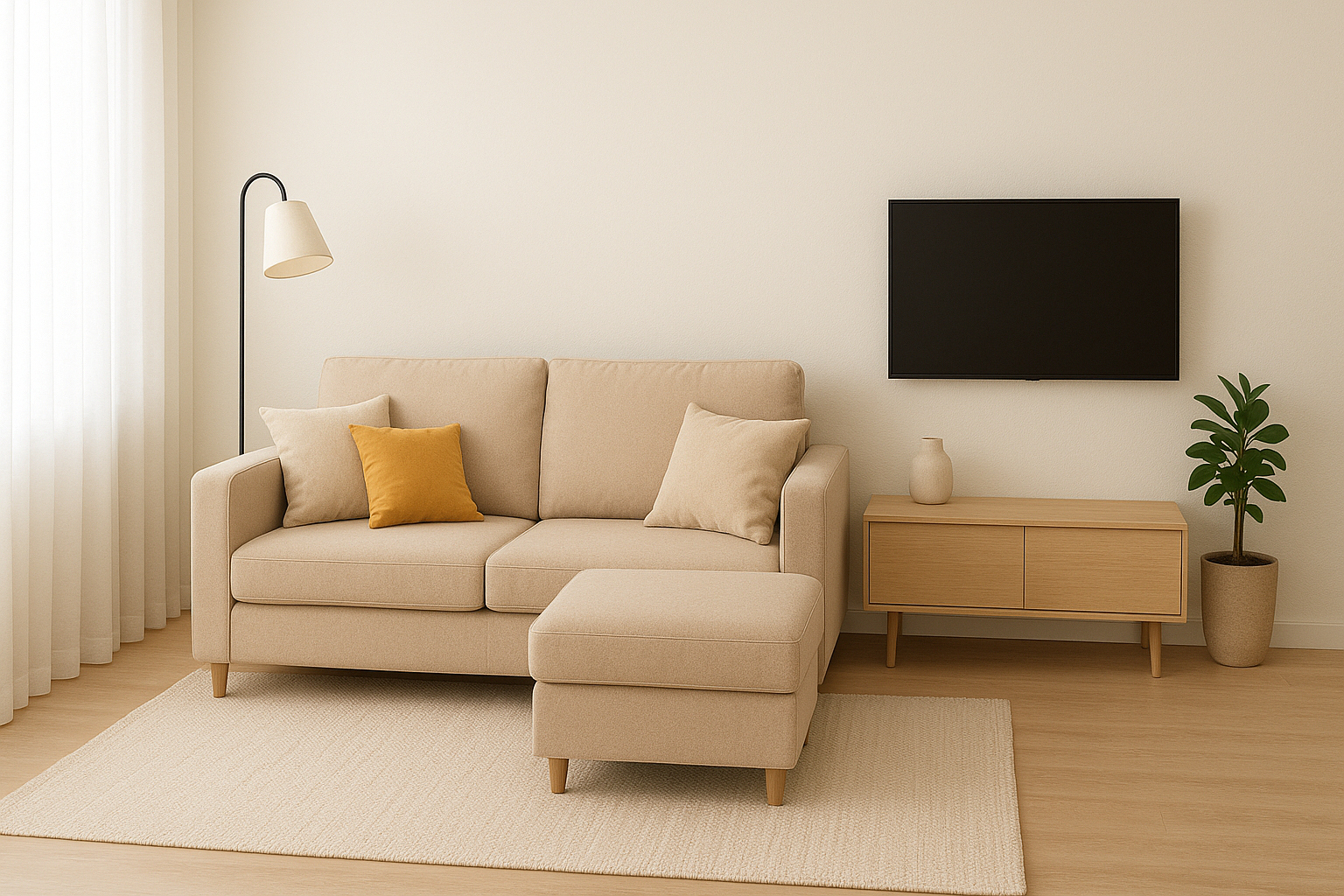
2. Invest in Multifunctional Furniture
In a small apartment, every piece of furniture should work harder for you. Look for multifunctional items like a coffee table with storage, an ottoman that doubles as extra seating, or a sofa bed for guests. Modular furniture is another great choice, as you can reconfigure it based on your needs without crowding your living room.
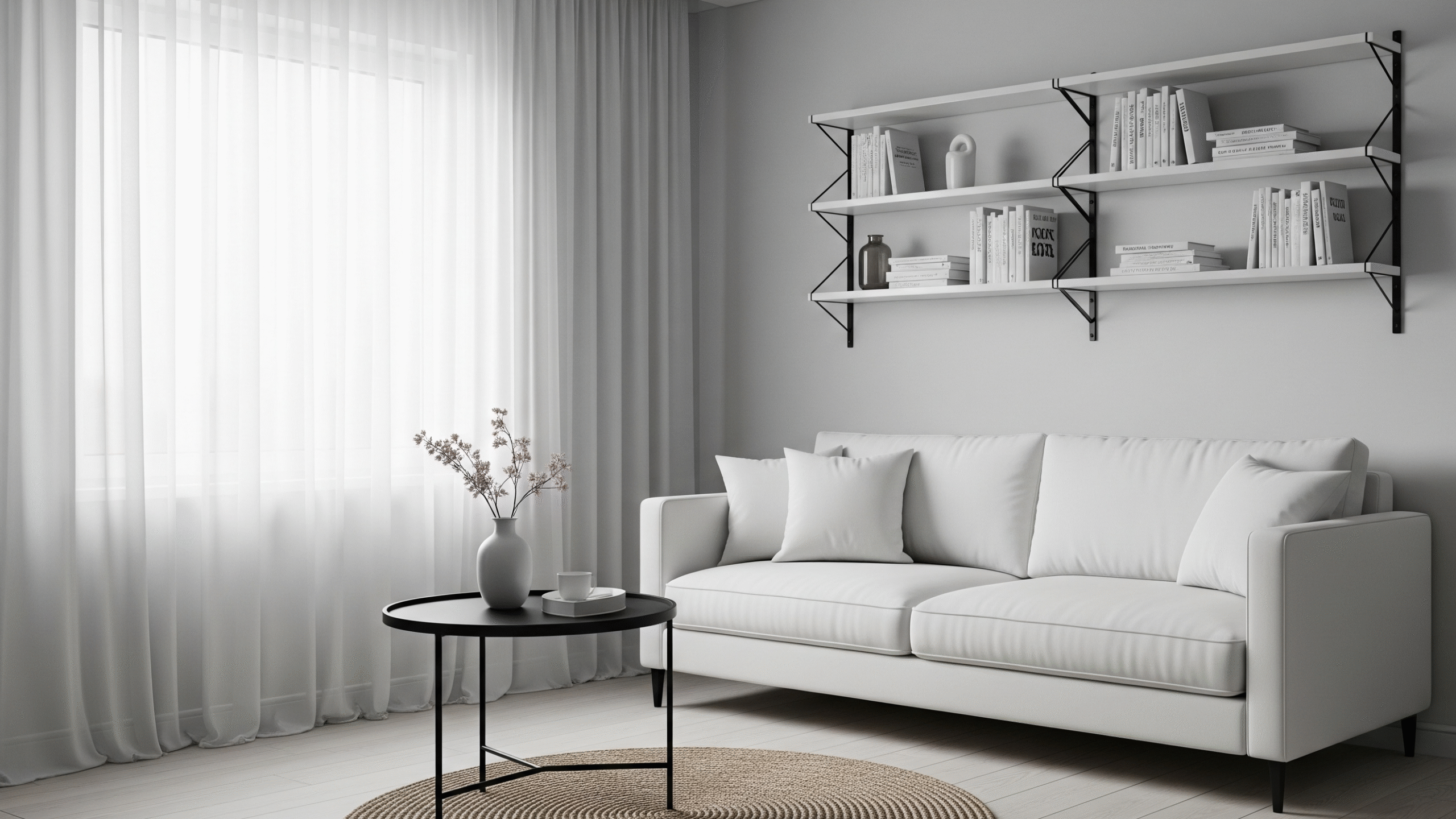
3. Use Vertical Space Wisely
When floor space is limited, think upward. Wall-mounted shelves, tall bookcases, and hanging plants draw the eye upward, making the room appear taller. Floating shelves above a sofa or TV unit can store books, plants, and decorative pieces without taking up valuable square footage.
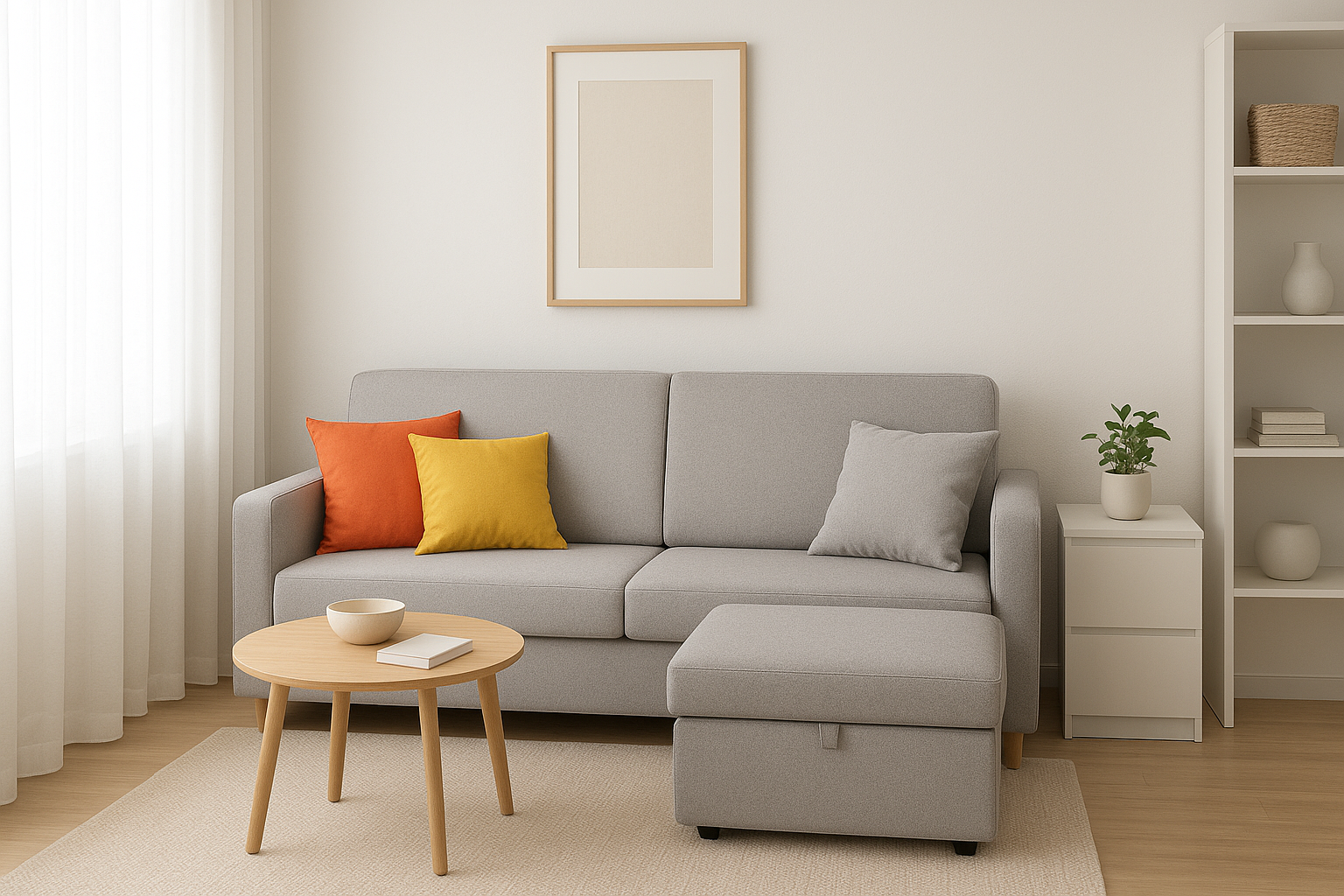
4. Add Mirrors to Create Depth
Mirrors are a tried-and-true trick for small spaces. By reflecting light, they make a room look brighter and more open. A large statement mirror on one wall or a set of smaller decorative mirrors can instantly enhance your apartment’s living room. Position them opposite a window if possible to maximize the light reflection.
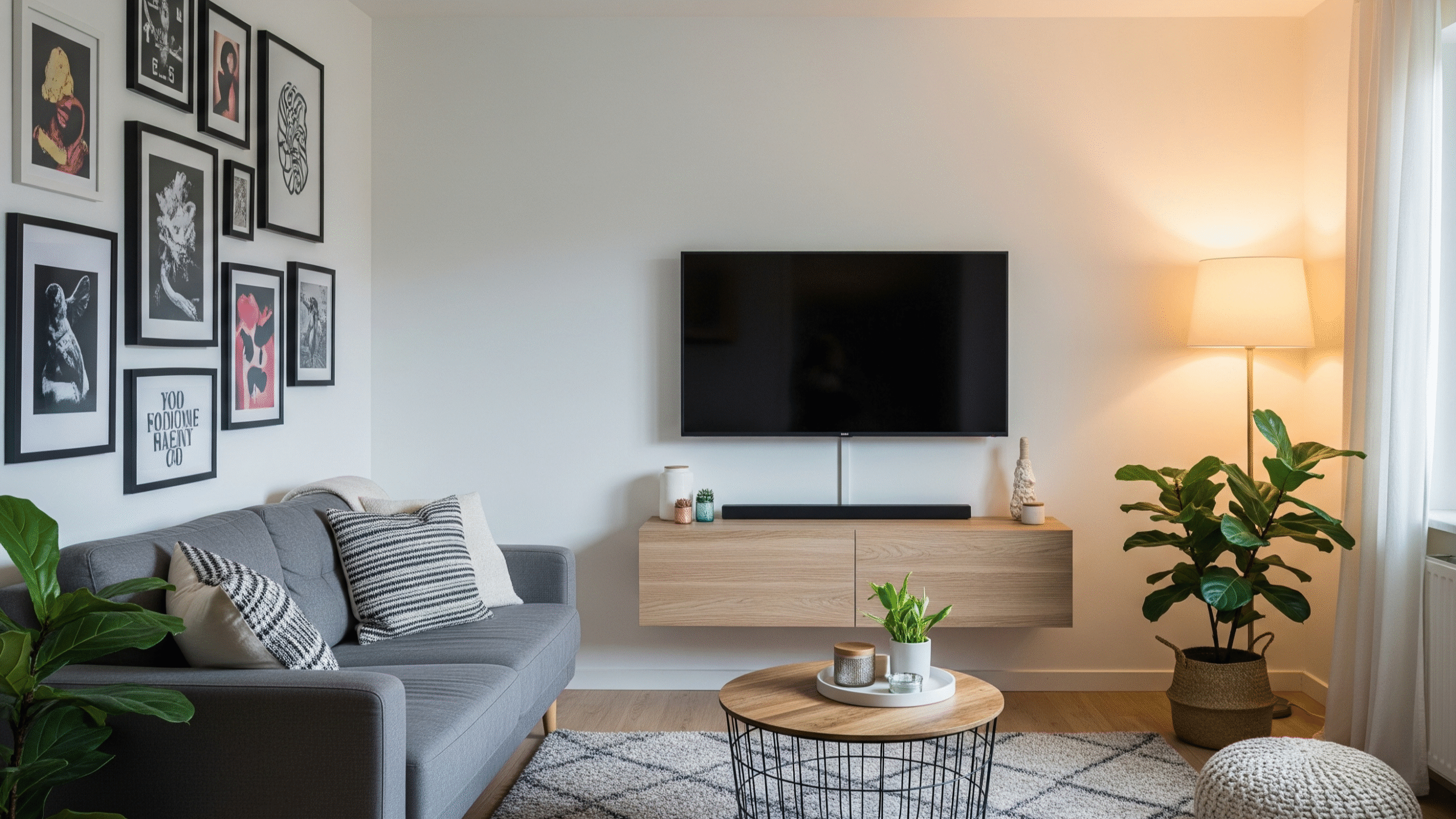
5. Keep the Layout Open
In a small apartment living room, less is more. Avoid blocking pathways with bulky furniture, and leave open areas that allow for easy movement. Consider a floating sofa arrangement or push furniture against the walls to free up central space. Rugs can also help define different zones, making the room feel organized and purposeful.
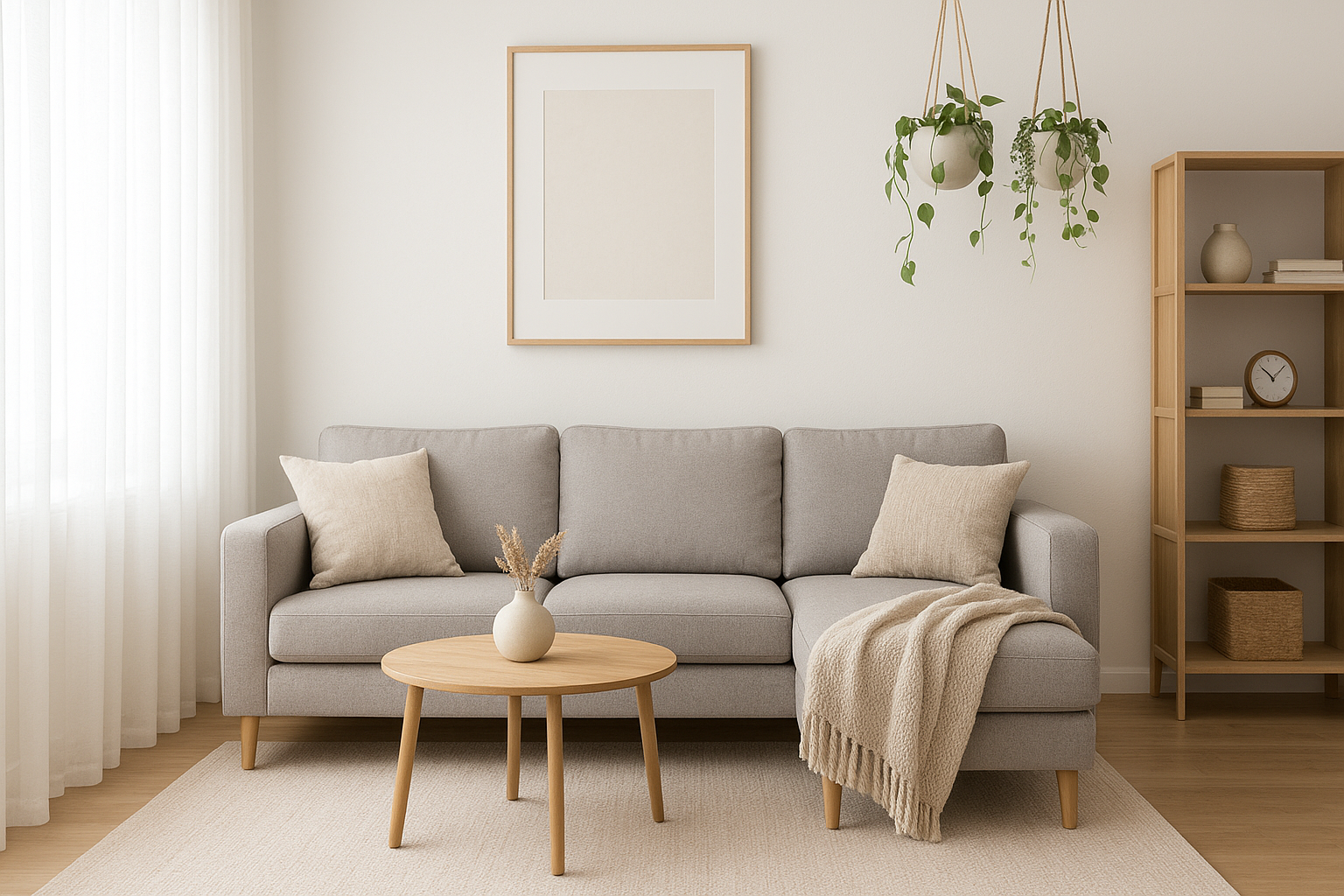
6. Bring in Plants for Freshness
Greenery can transform a small space, making it feel more vibrant and alive. Opt for compact indoor plants like snake plants, pothos, or succulents. Use hanging planters or wall-mounted plant holders to save surface space while adding a refreshing natural touch.
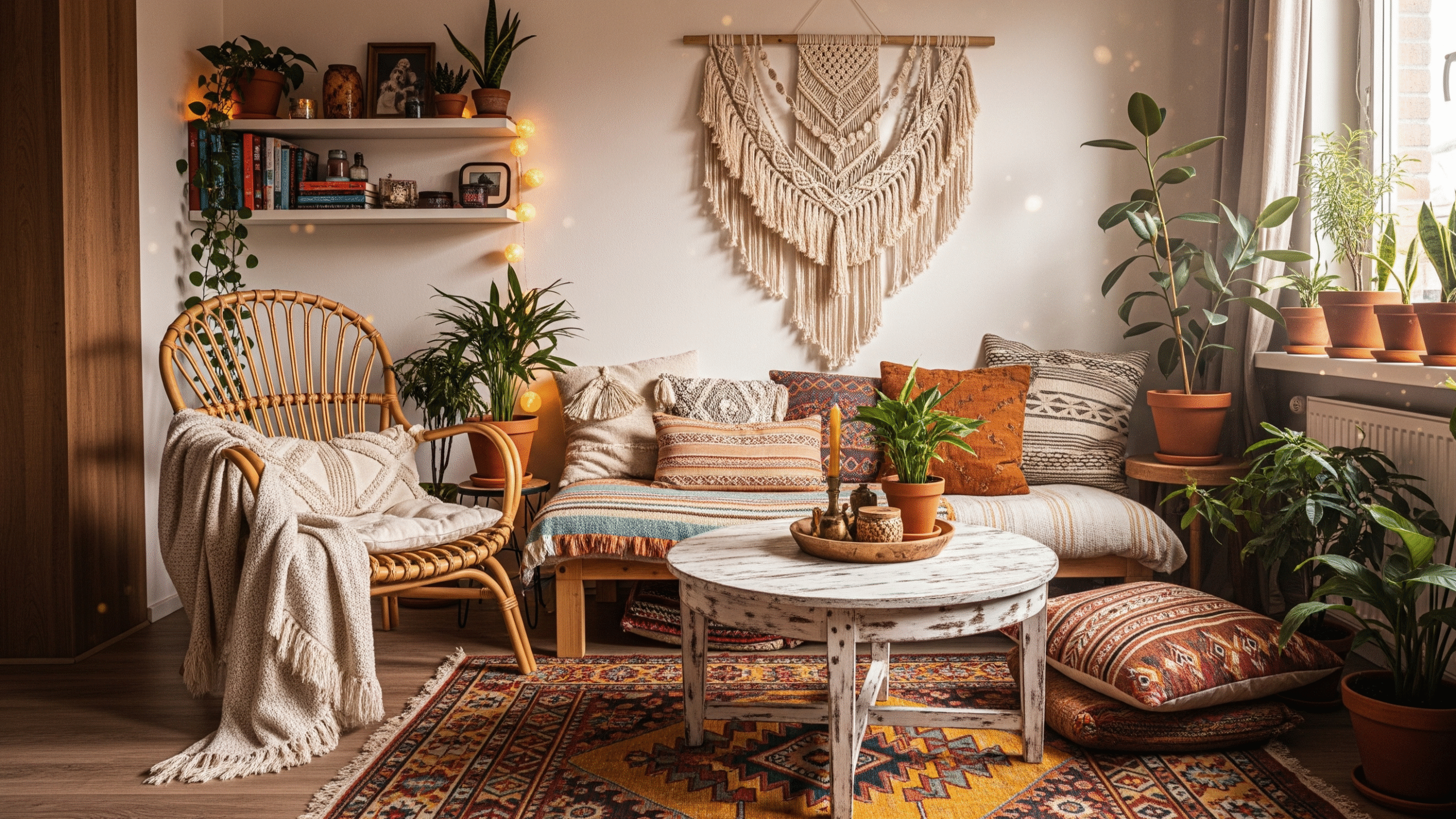
7. Personalize with Minimal Decor
When decorating a small apartment, it’s easy to go overboard and make the space feel cramped. Instead, choose a few meaningful decor pieces — framed art, travel souvenirs, or Unique Ceramics — to give the room personality without overcrowding it.
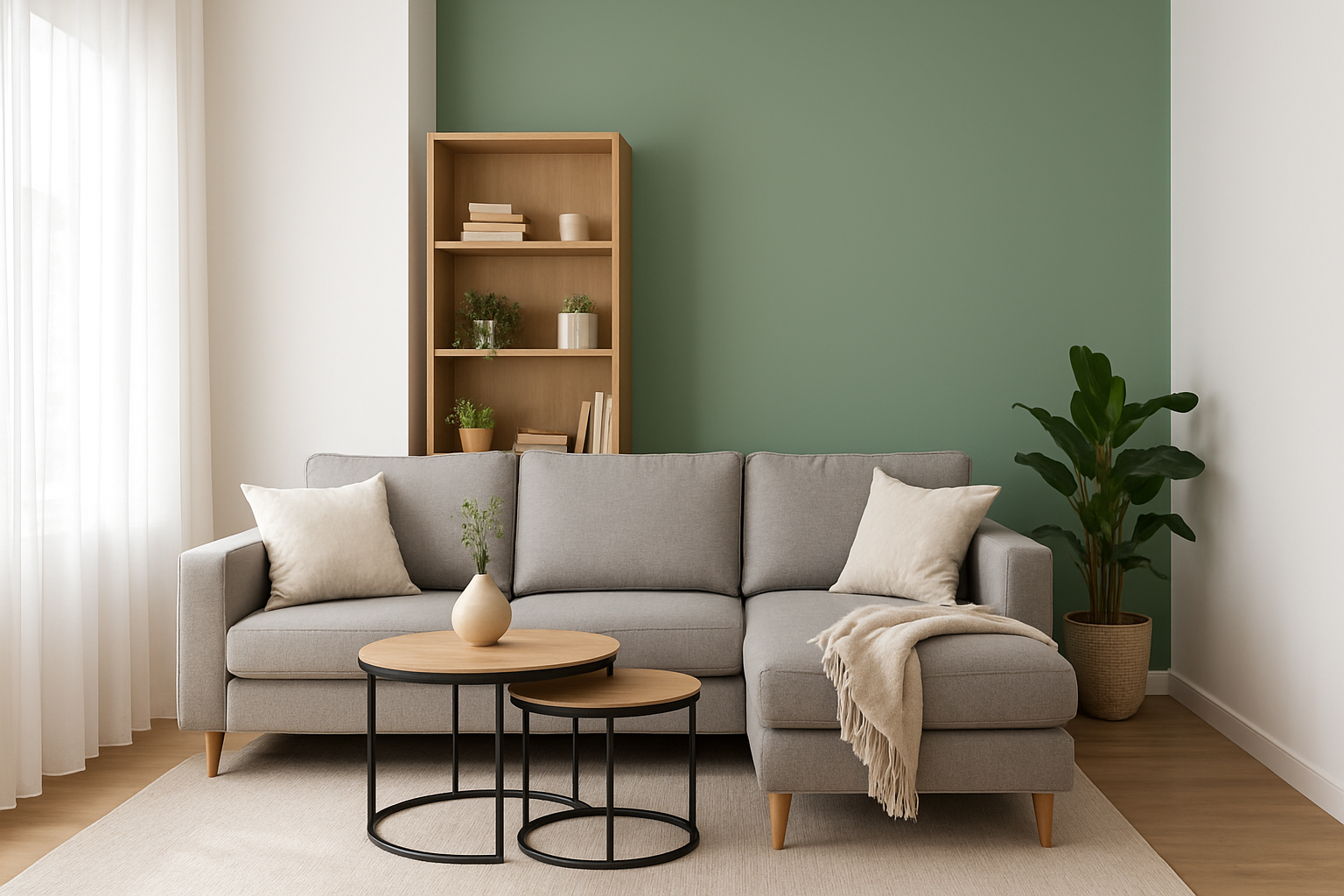
8. Play with Lighting Layers
Good lighting can make a big difference in a small living room. Combine different lighting sources like floor lamps, table lamps, and wall sconces to create a cozy atmosphere. Avoid harsh overhead lighting and opt for warm, soft bulbs to make the room inviting.
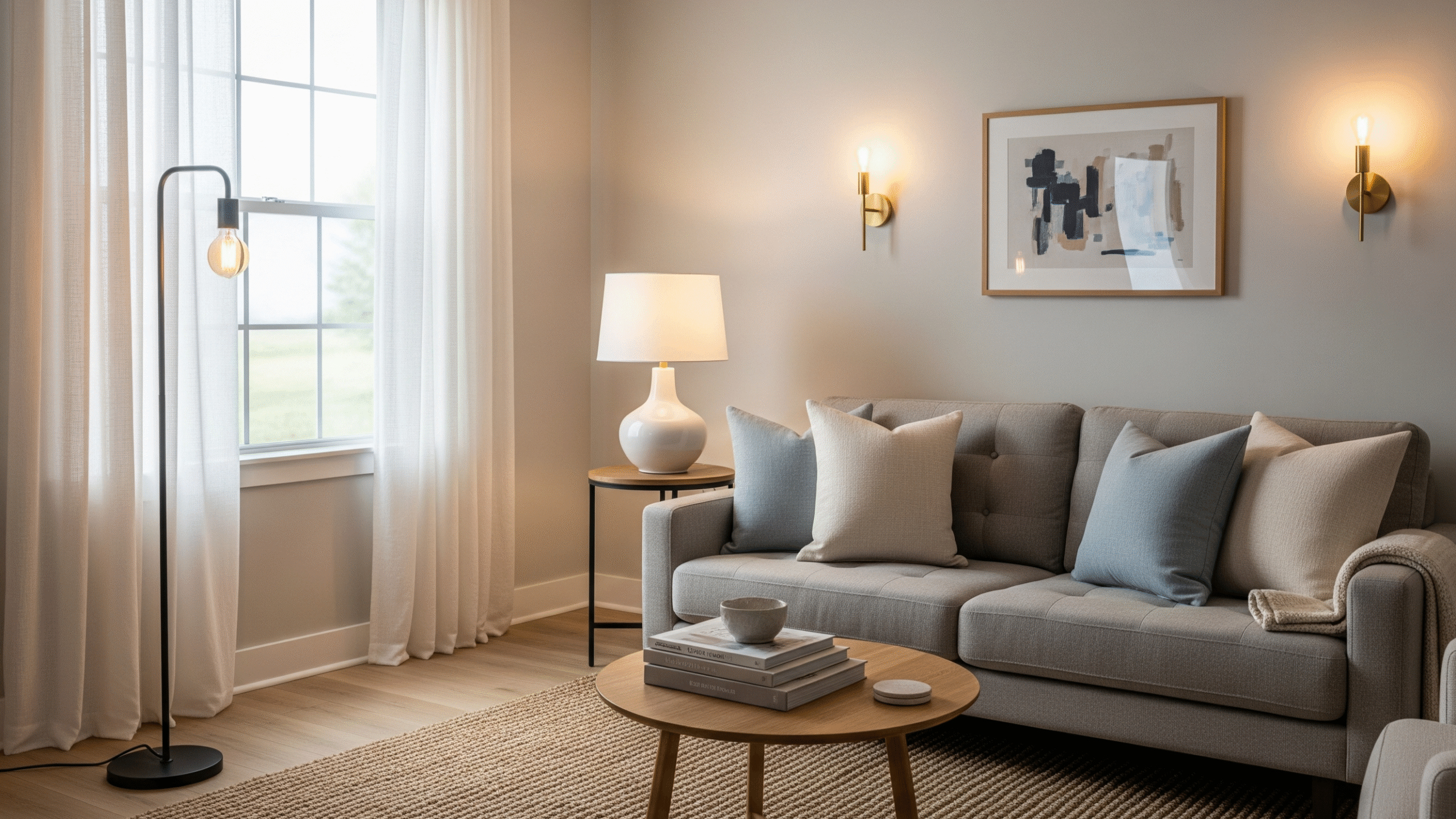
9. Go for Space-Saving Entertainment Units
Instead of a bulky TV stand, consider wall-mounting your television. Pair it with a floating media console or slim shelving unit to keep the floor clear. This setup not only saves space but also gives the room a sleek, modern feel.
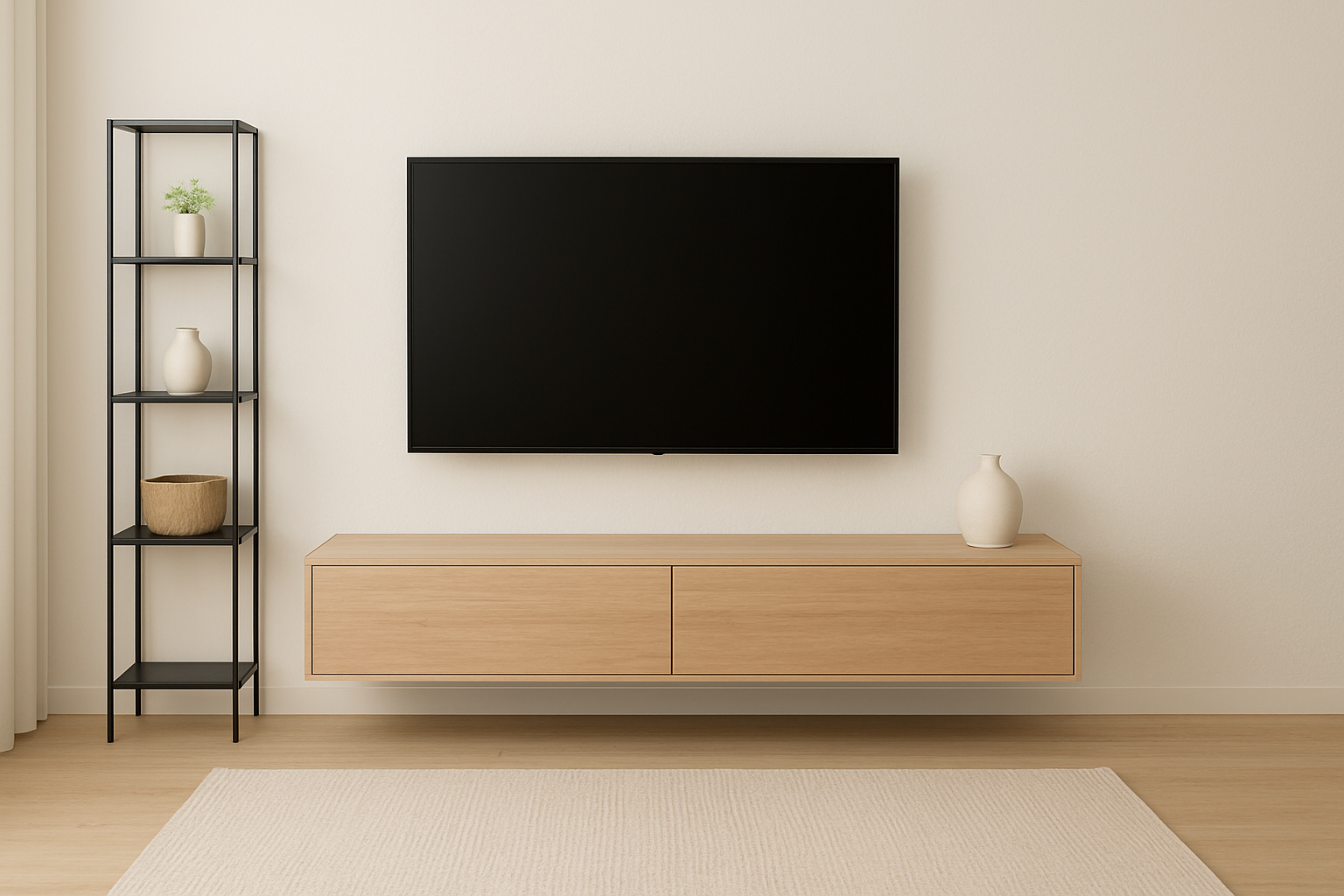
10. Keep It Organized
Finally, the key to maintaining a functional small living room is organization. Use baskets, hidden storage compartments, and under-sofa storage to keep clutter out of sight. A tidy space always feels bigger and more comfortable to live in.
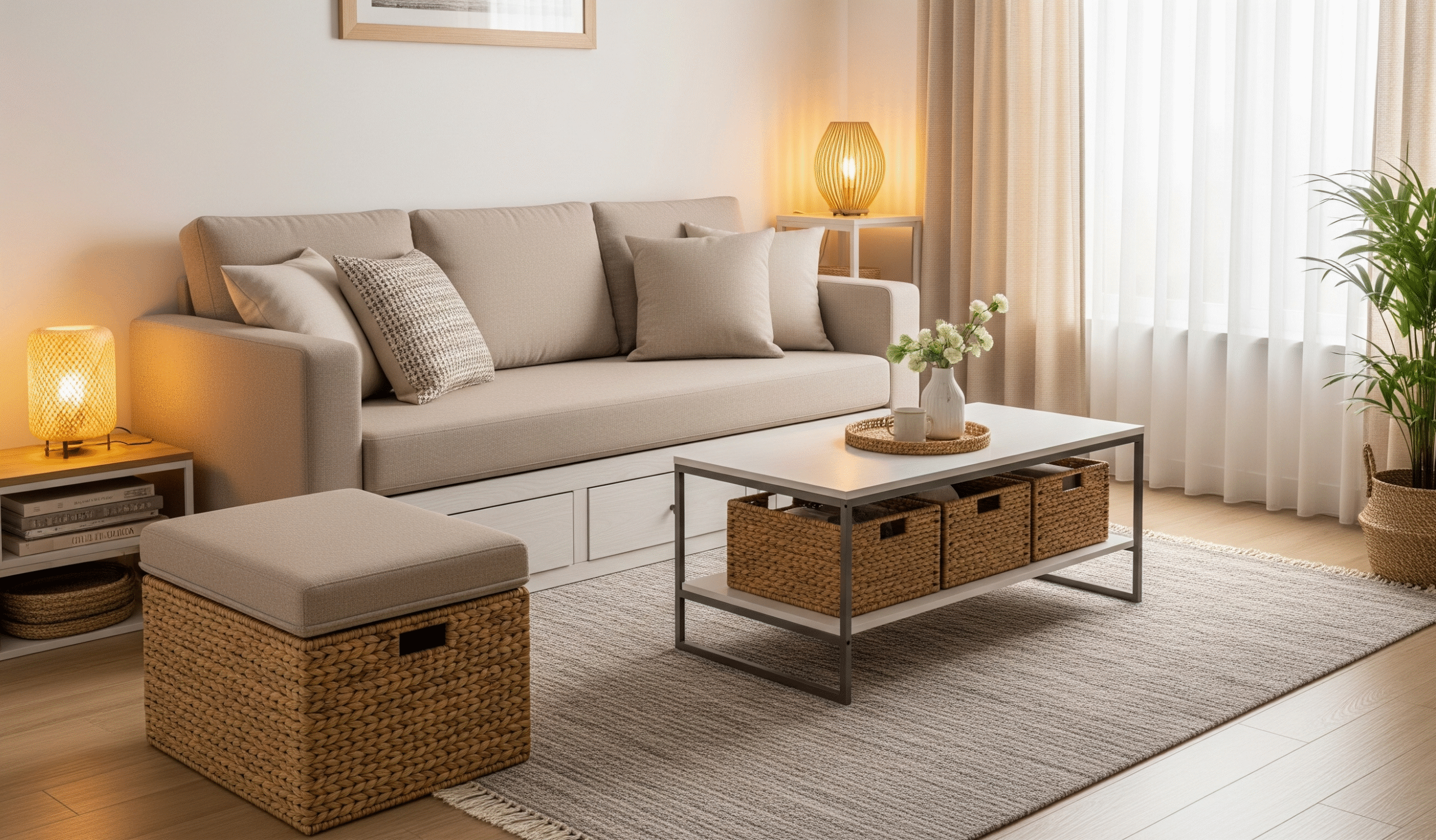
Conclusion:
Your apartment’s small living room can be just as beautiful and functional as a larger space — it’s all about smart planning, creative solutions, and intentional design. By using light colors, multifunctional furniture, vertical storage, and thoughtful decor, you can turn your compact living area into a stylish, comfortable haven you’ll love spending time in. With these small living room ideas apartment tips, you can create a space that’s both practical and full of personality.